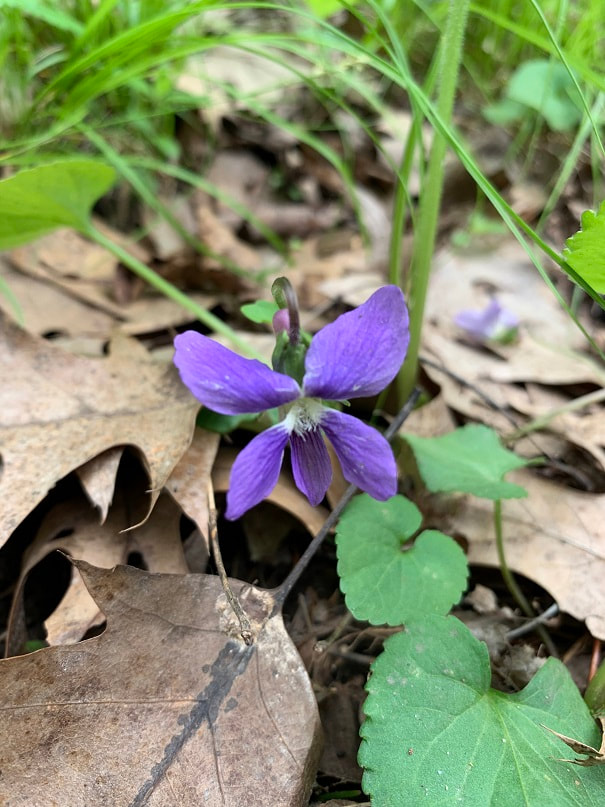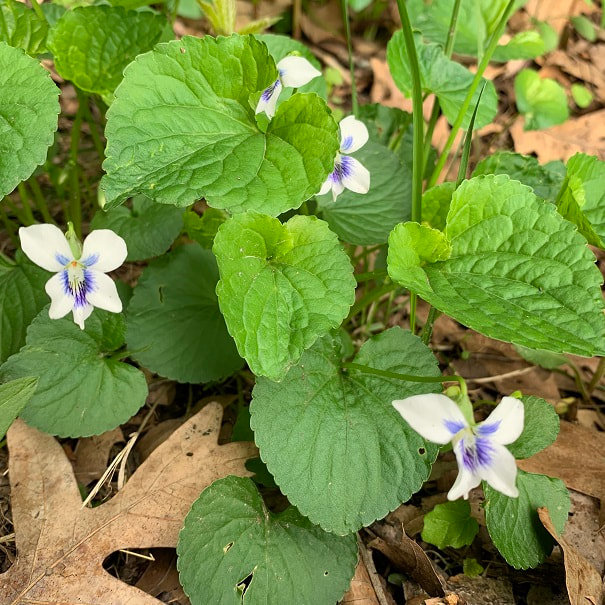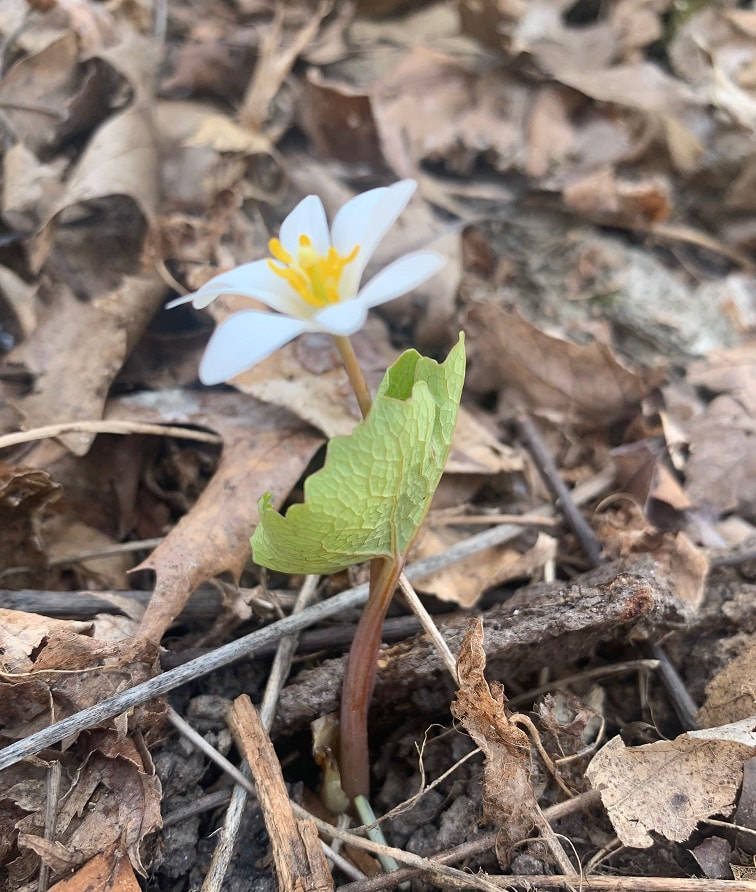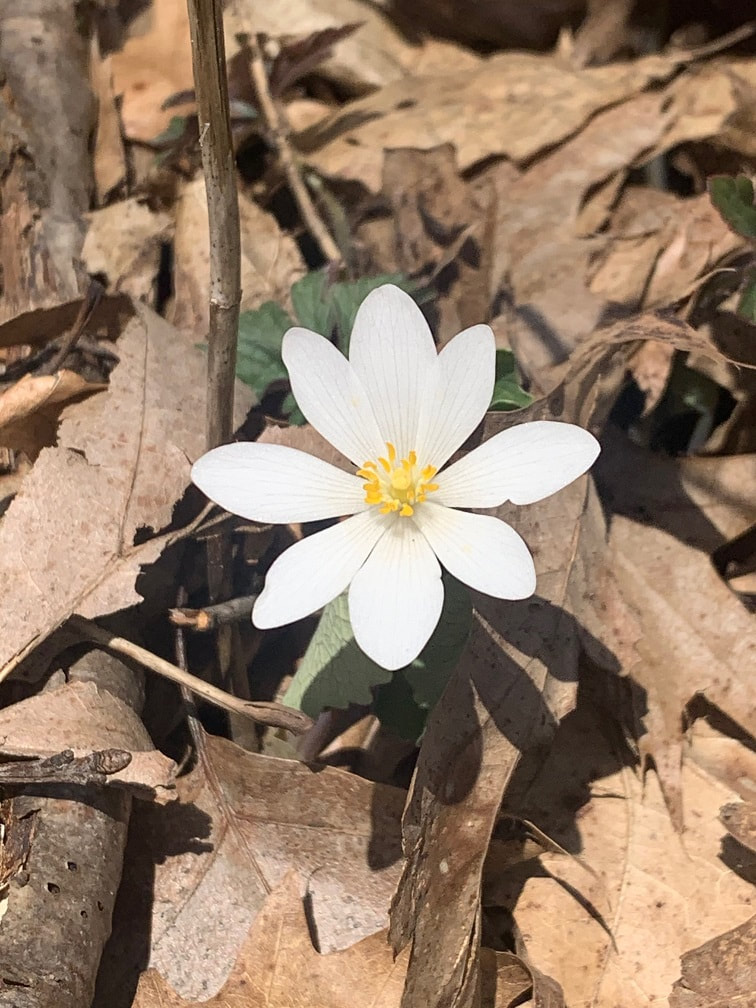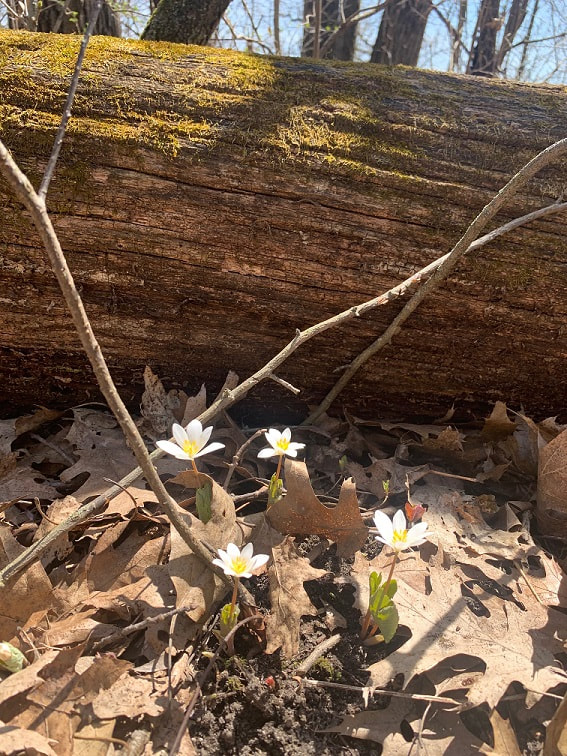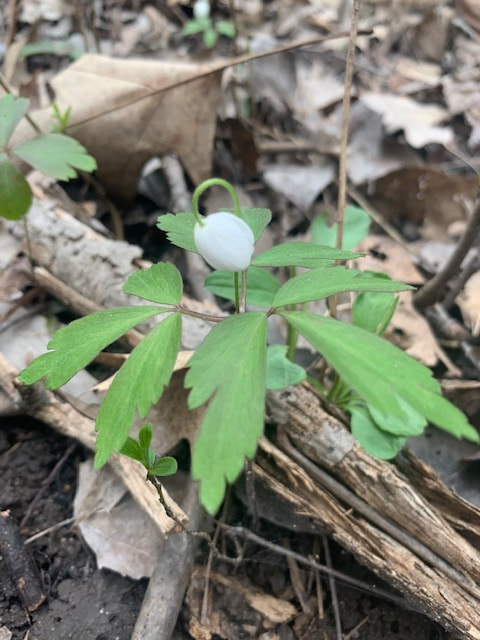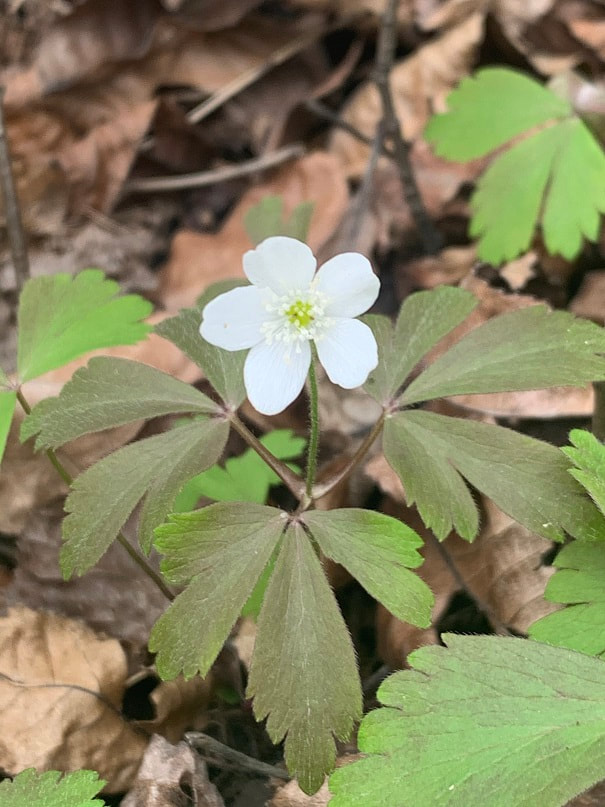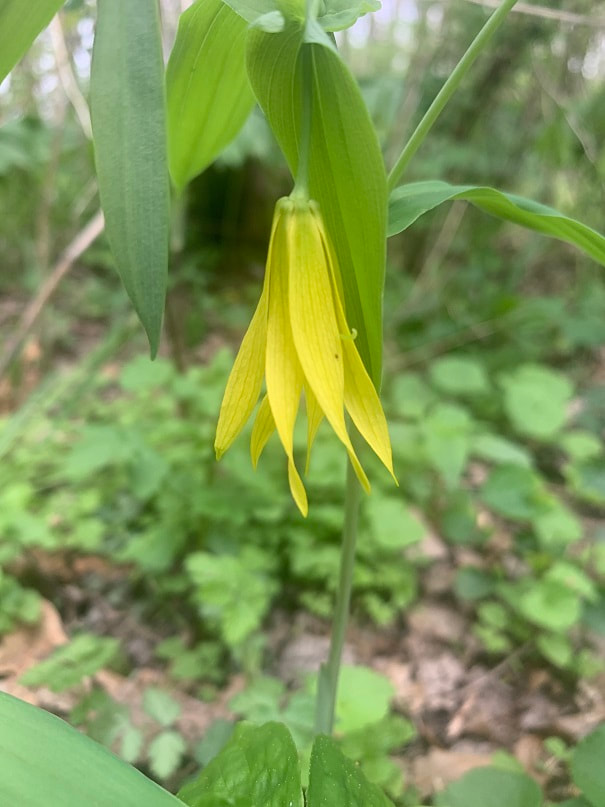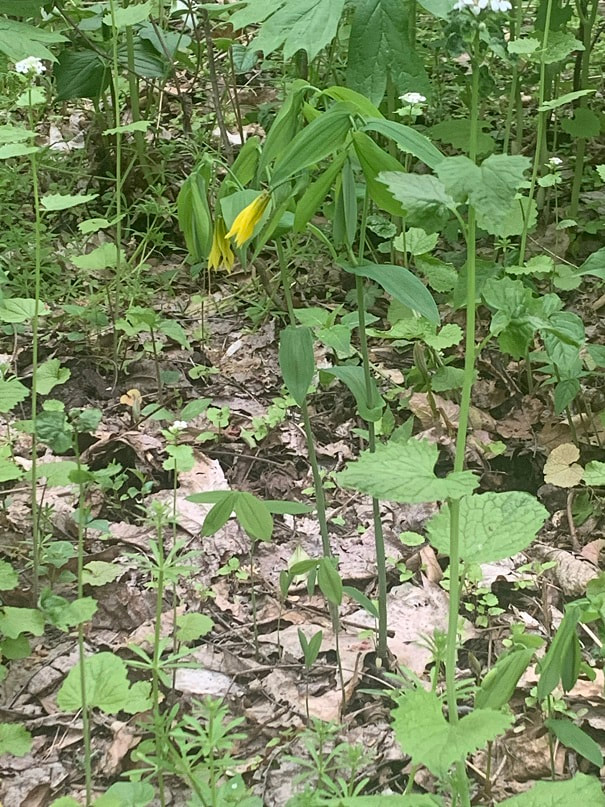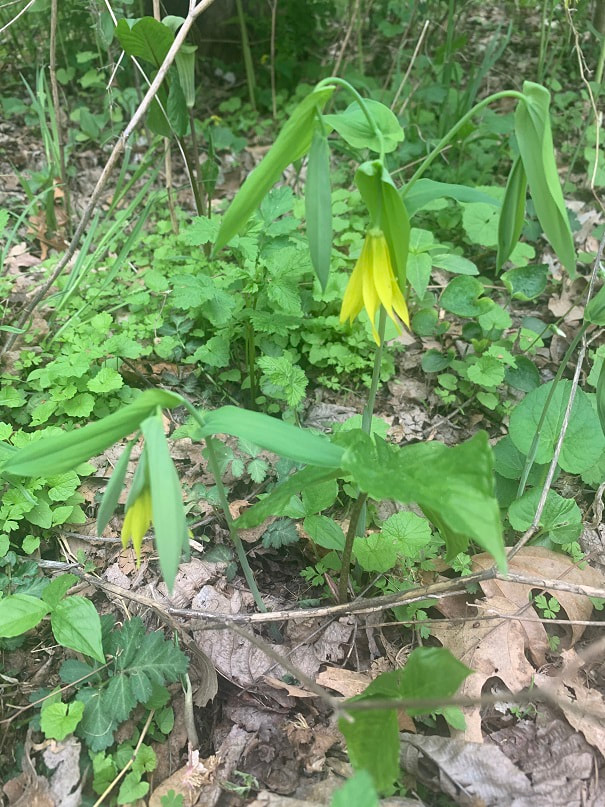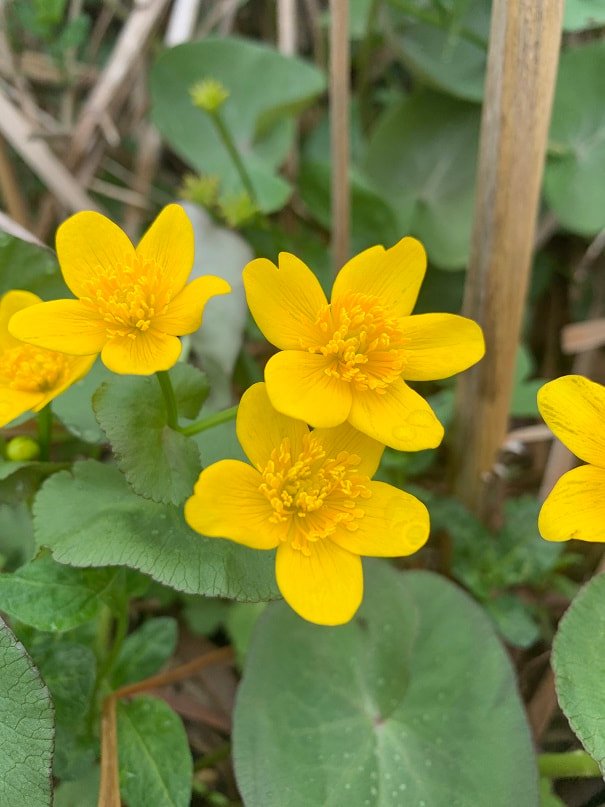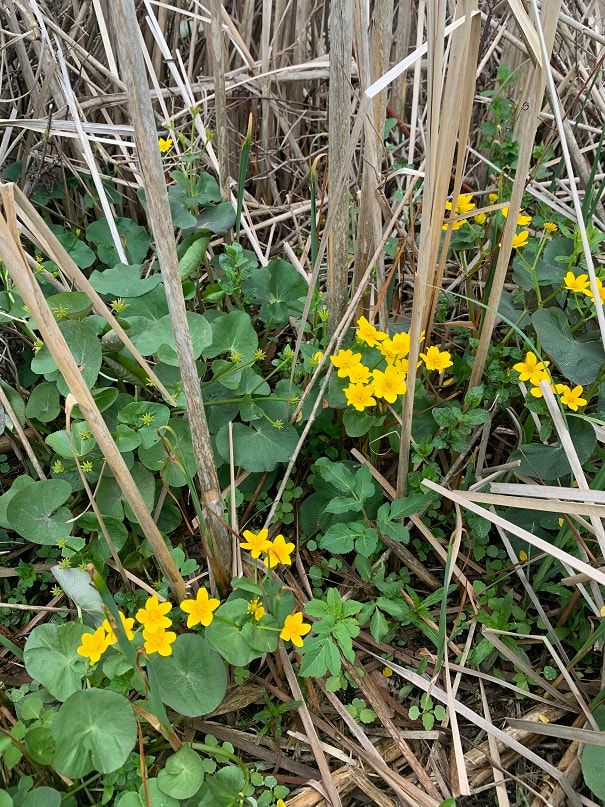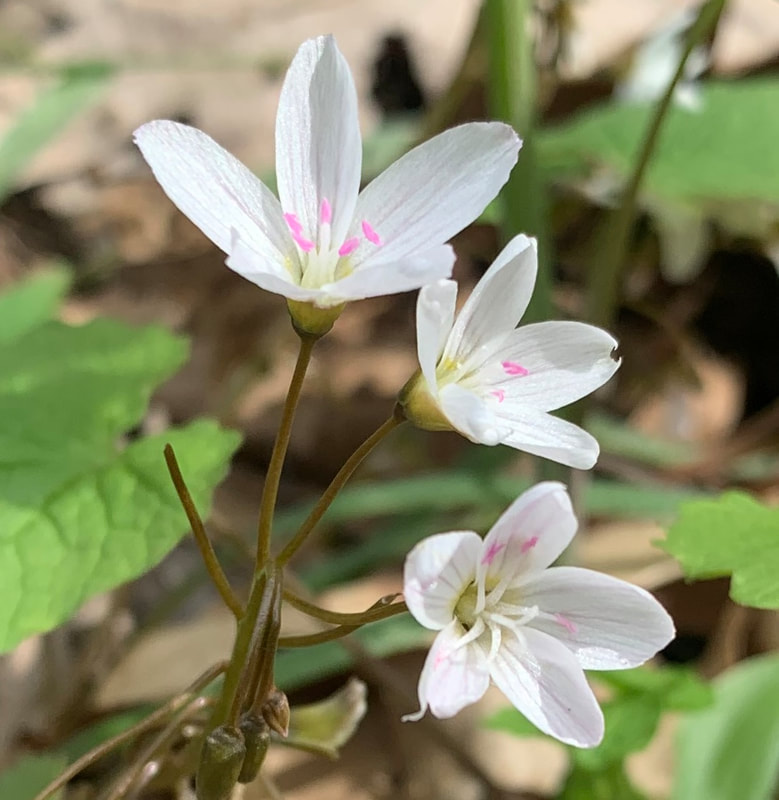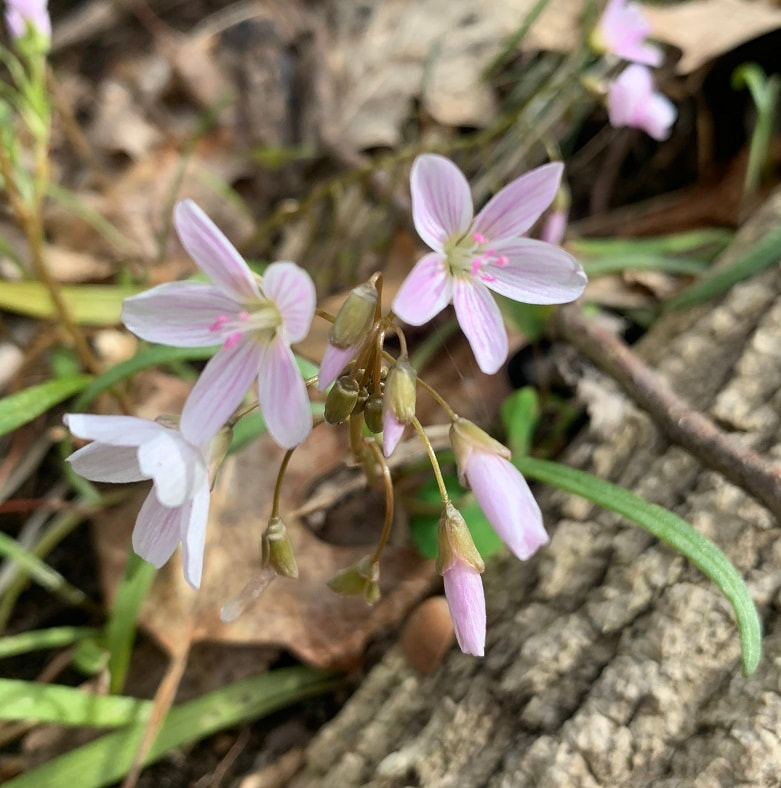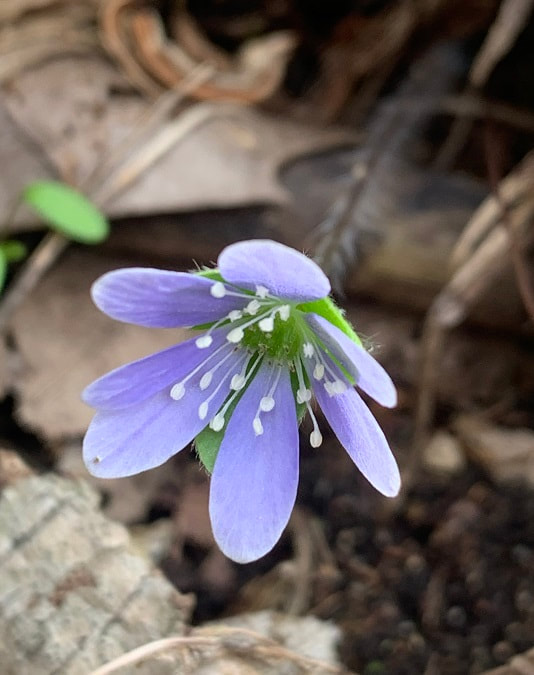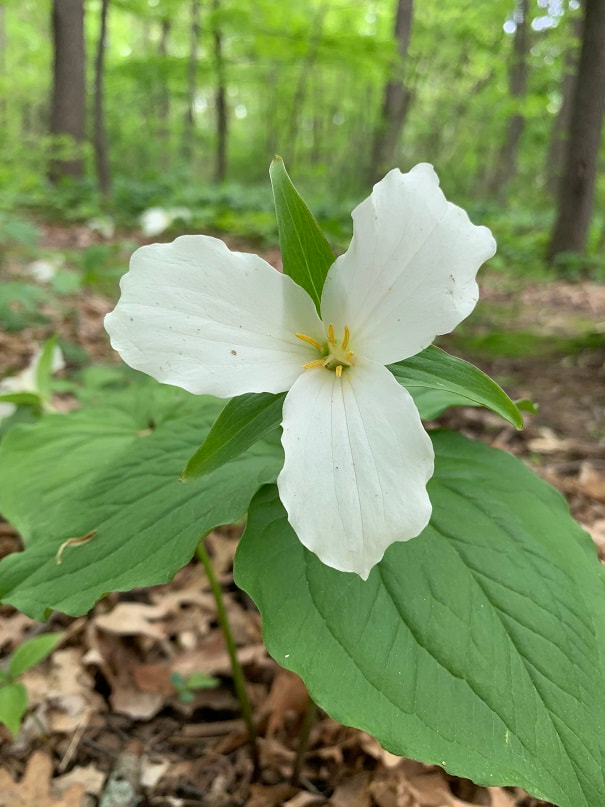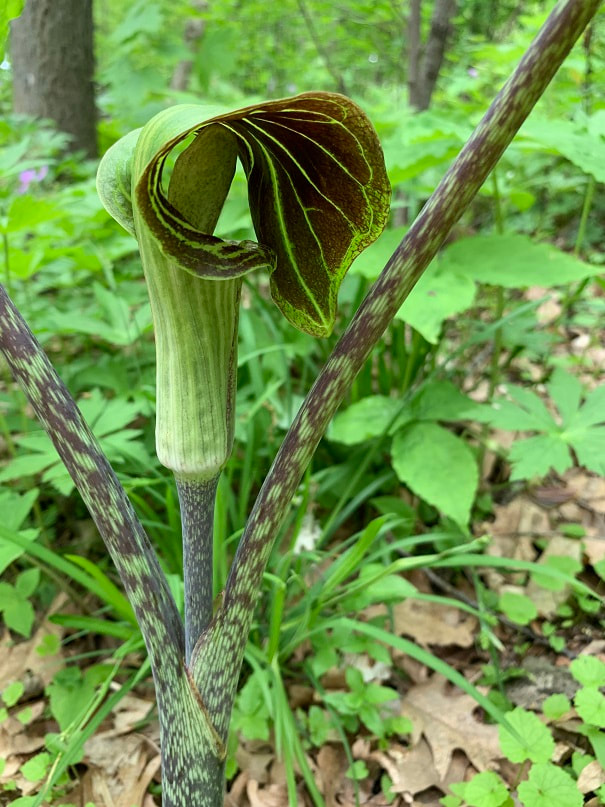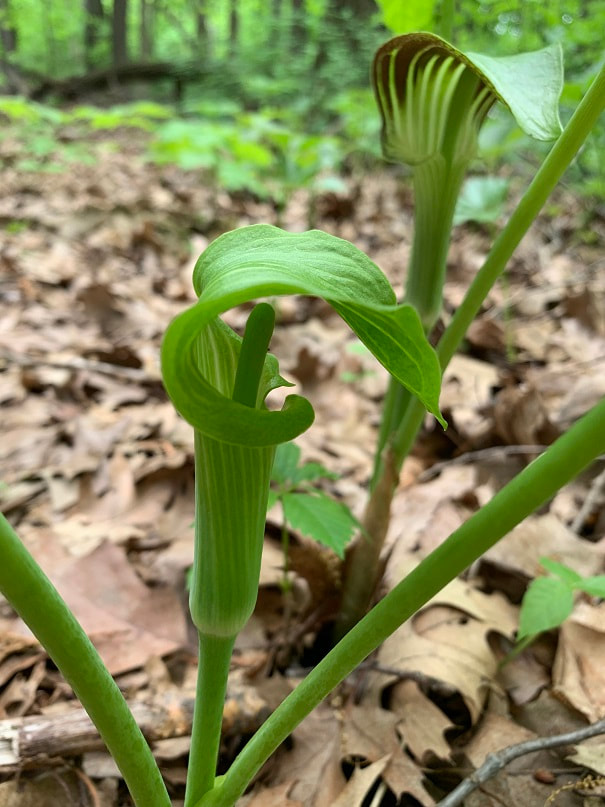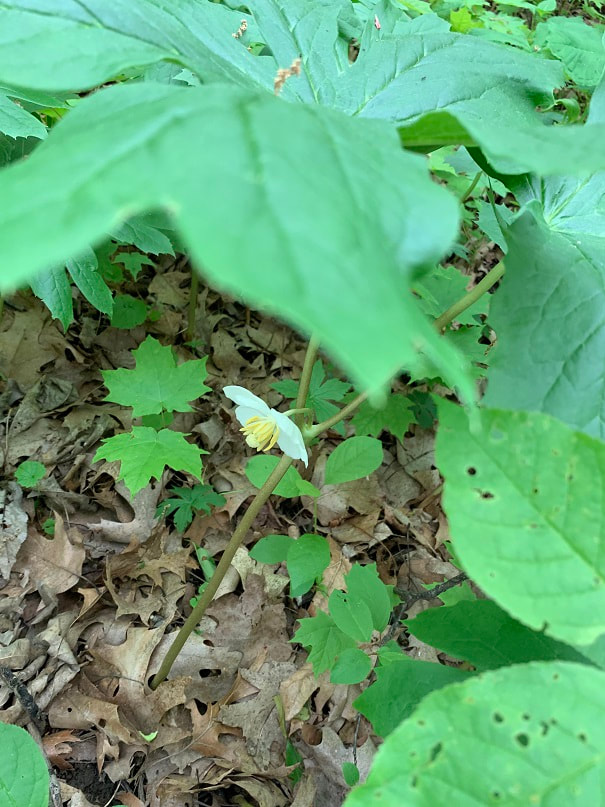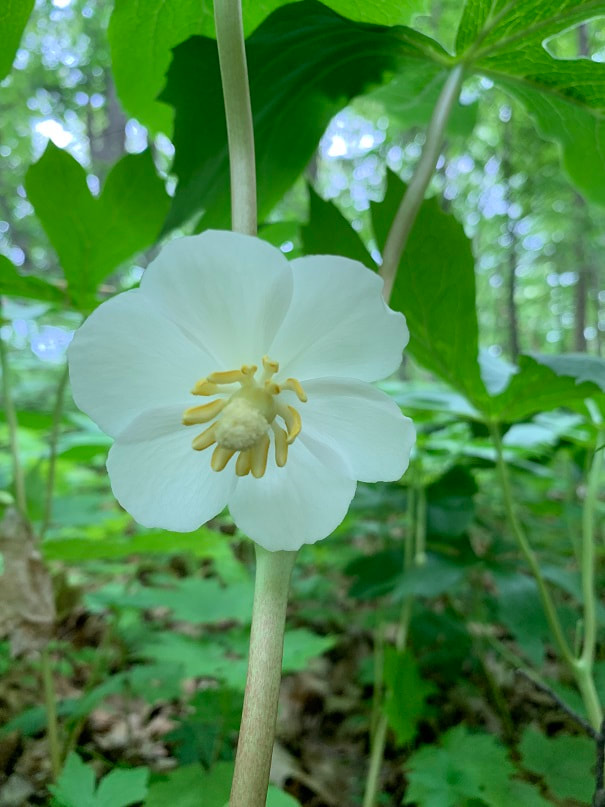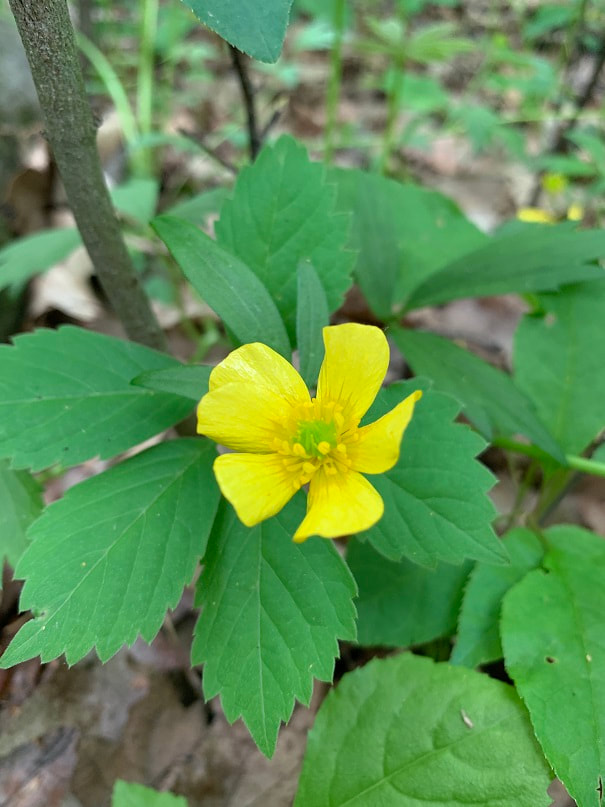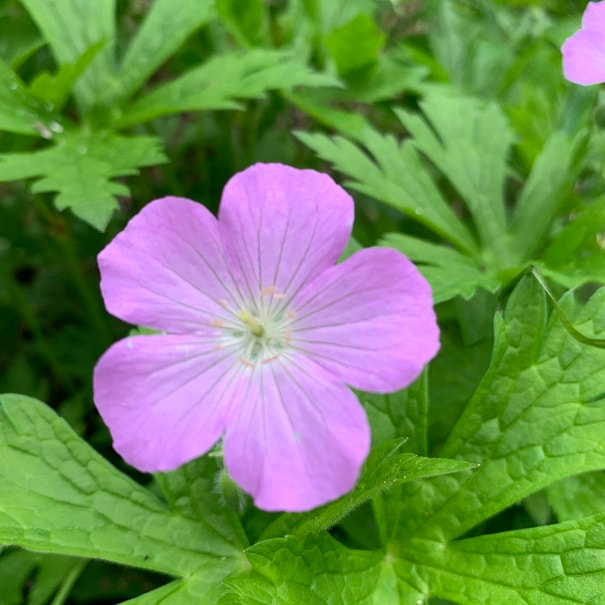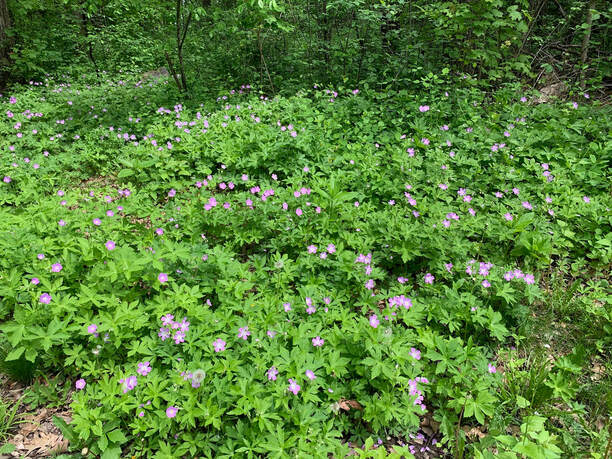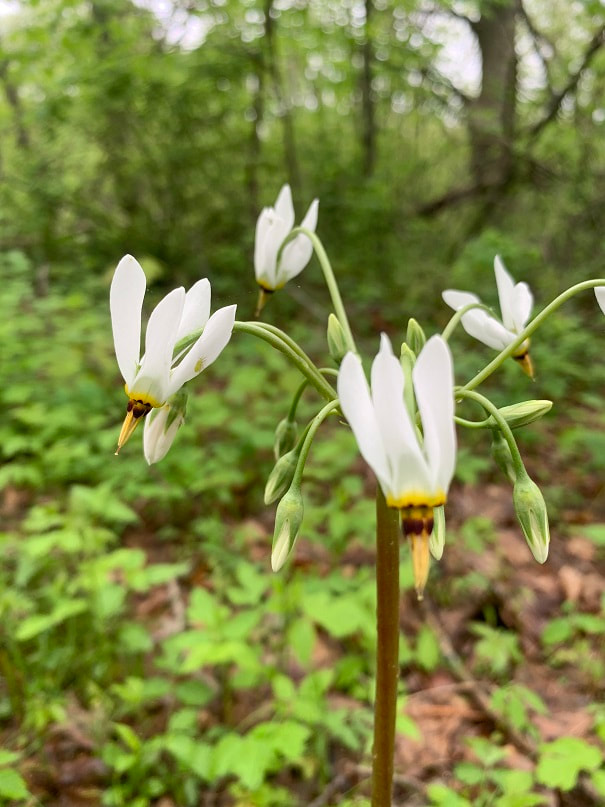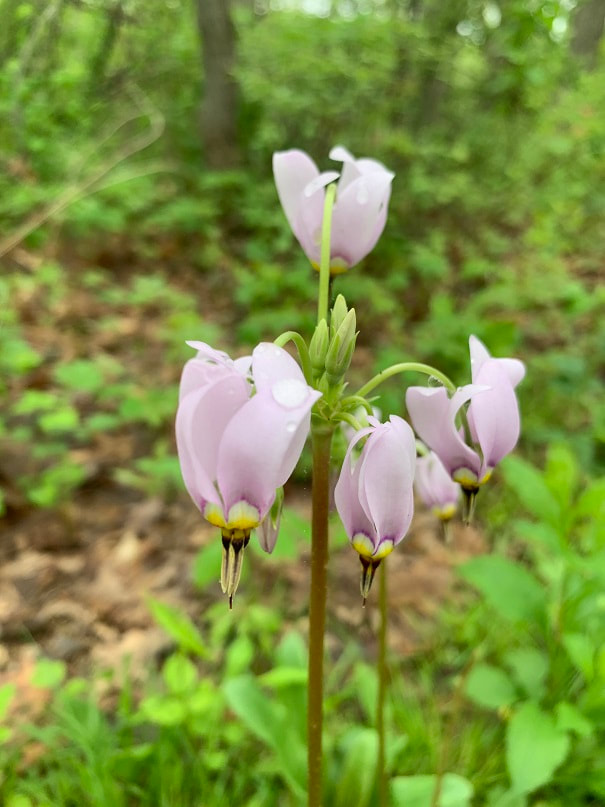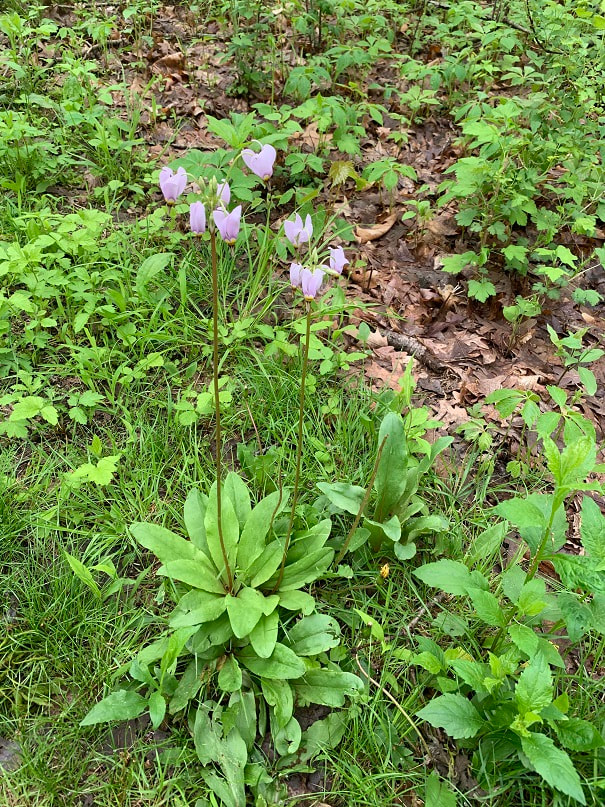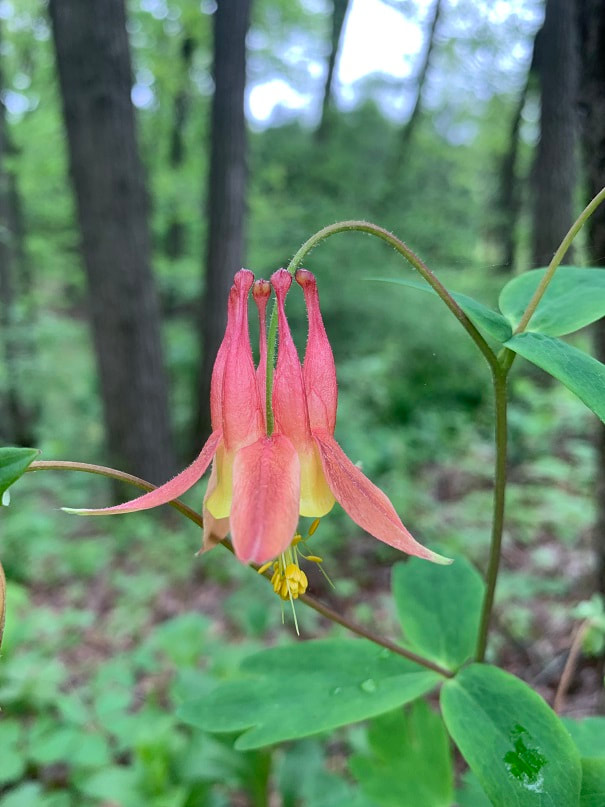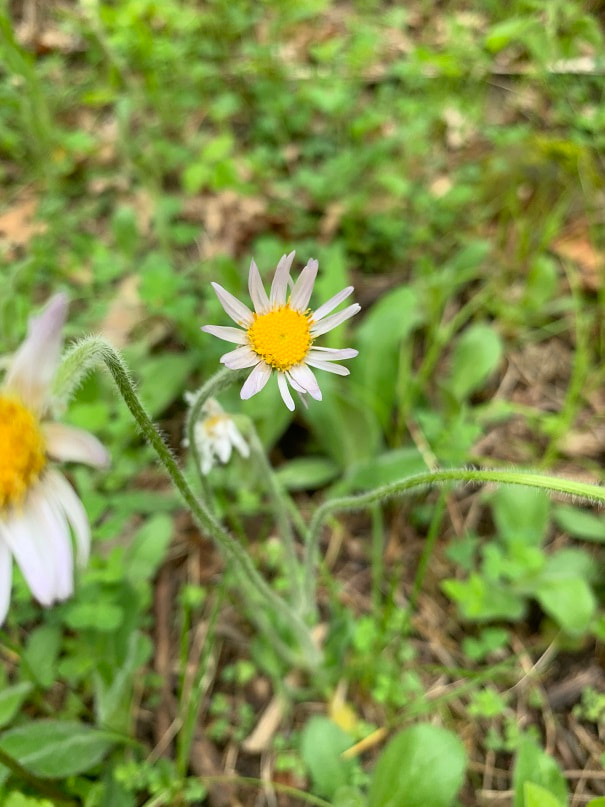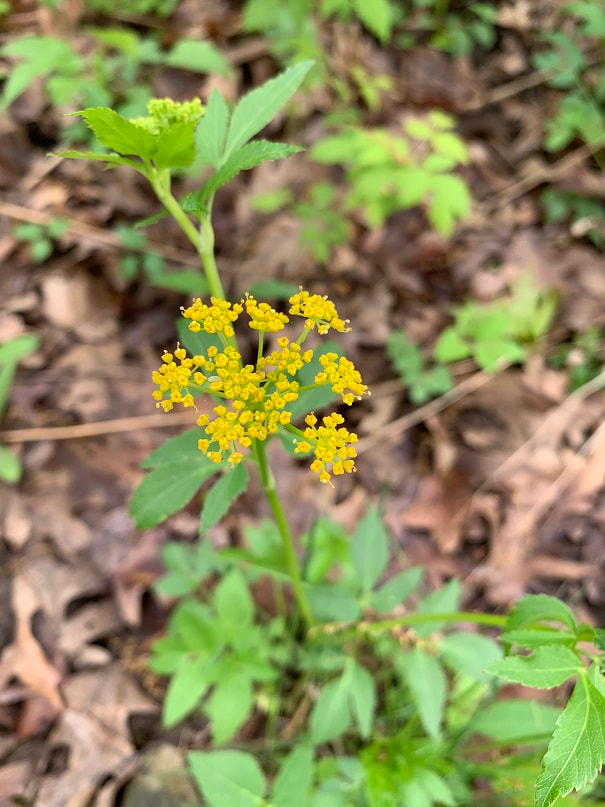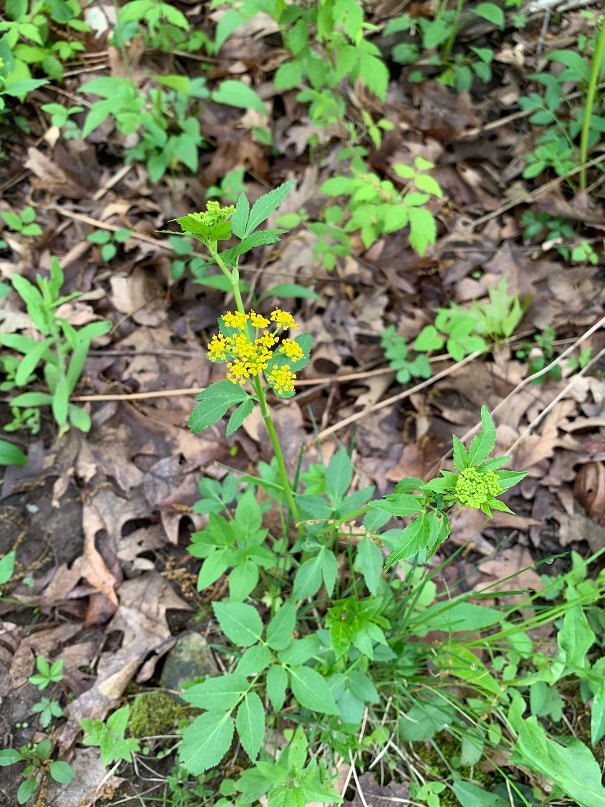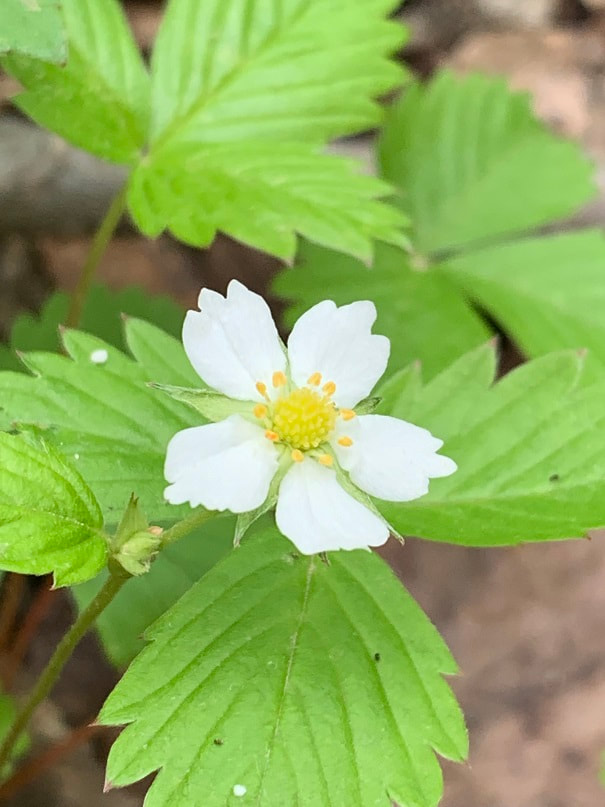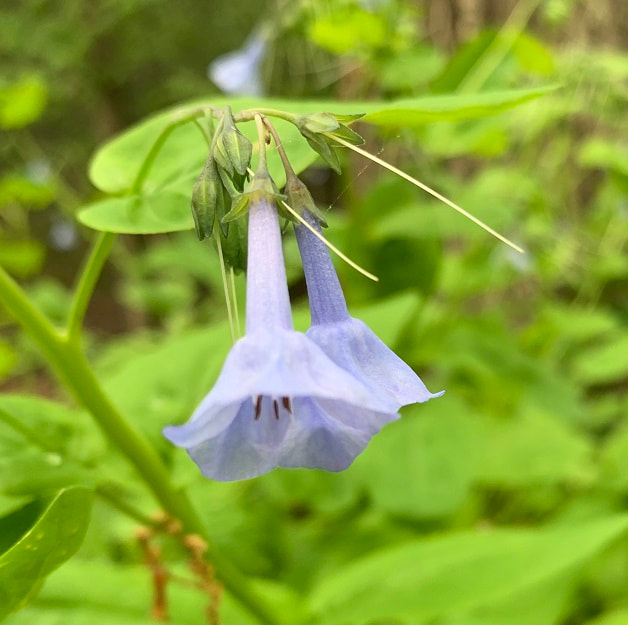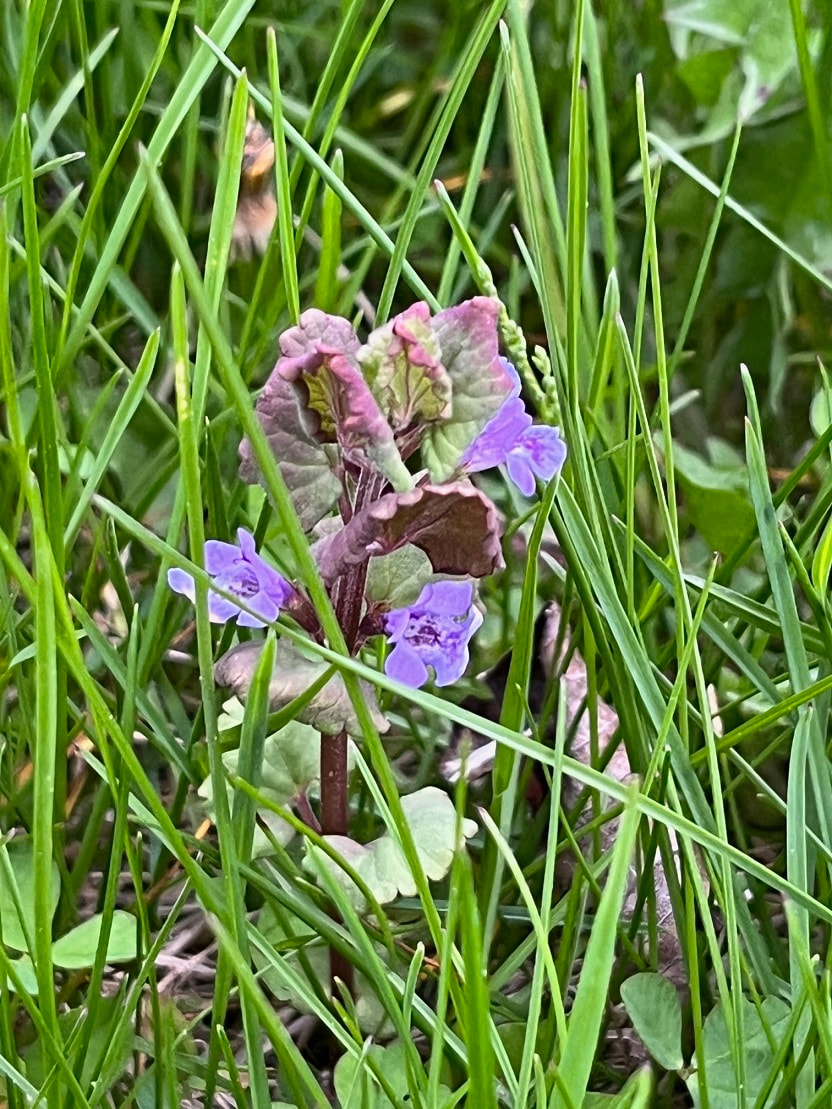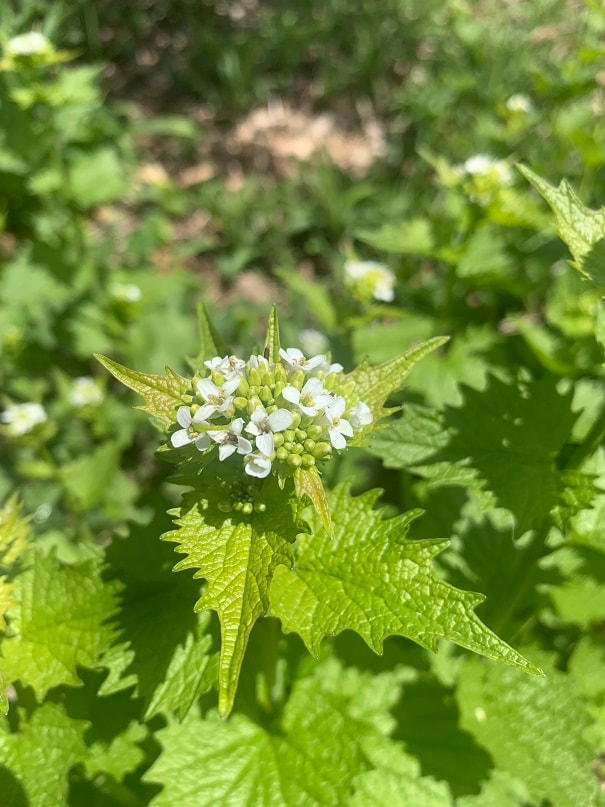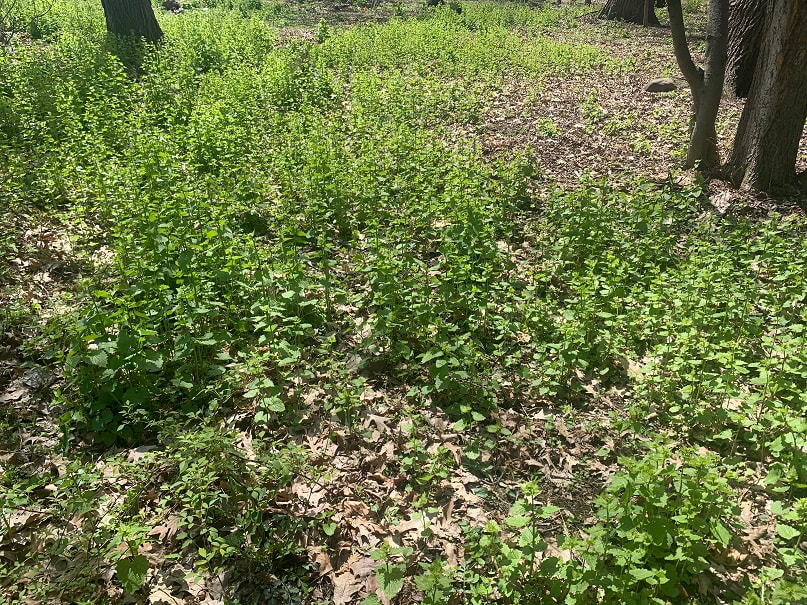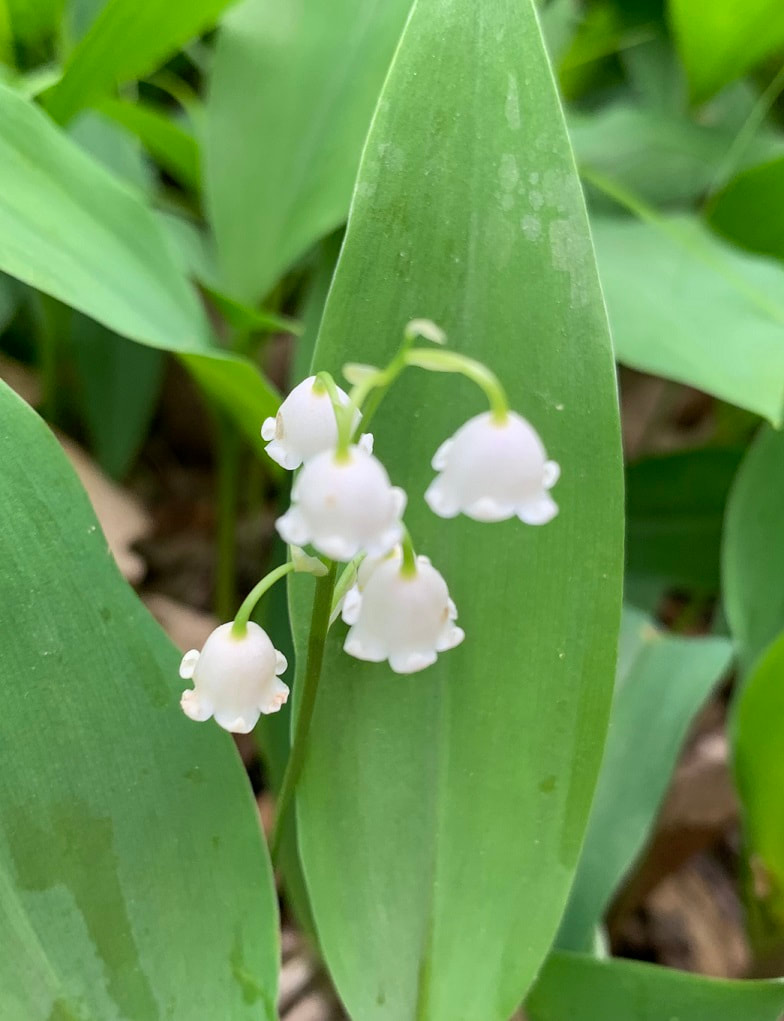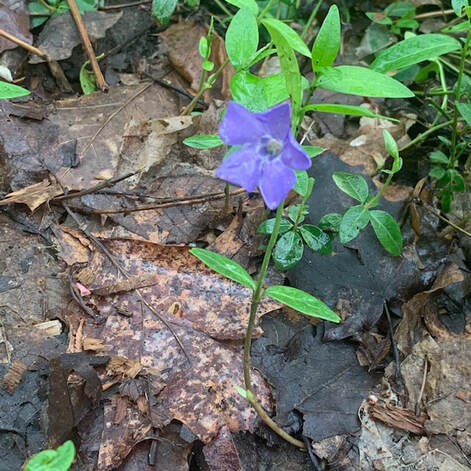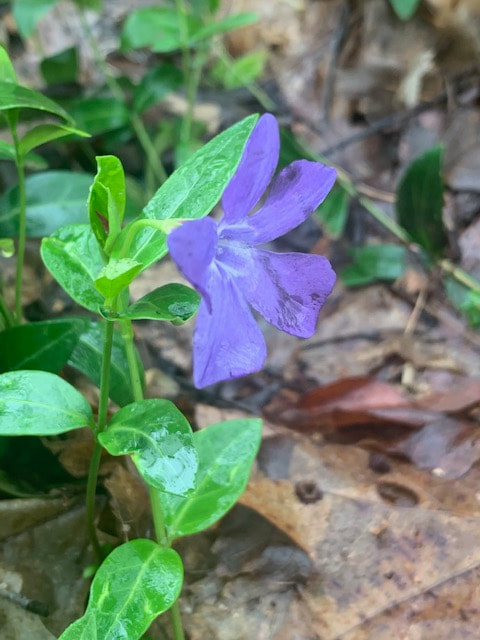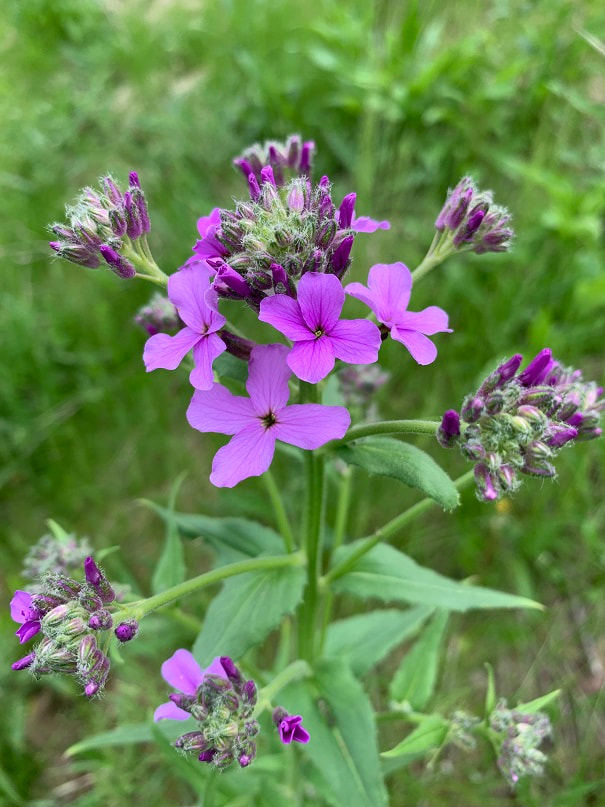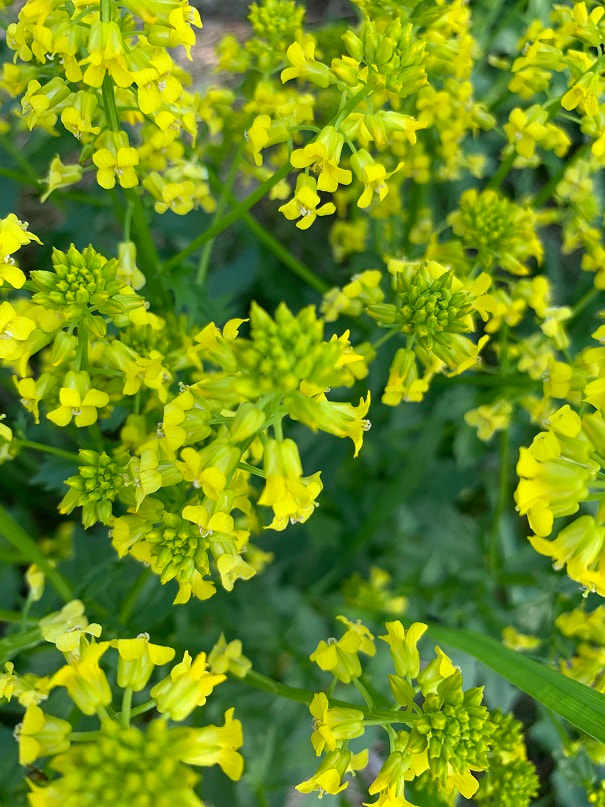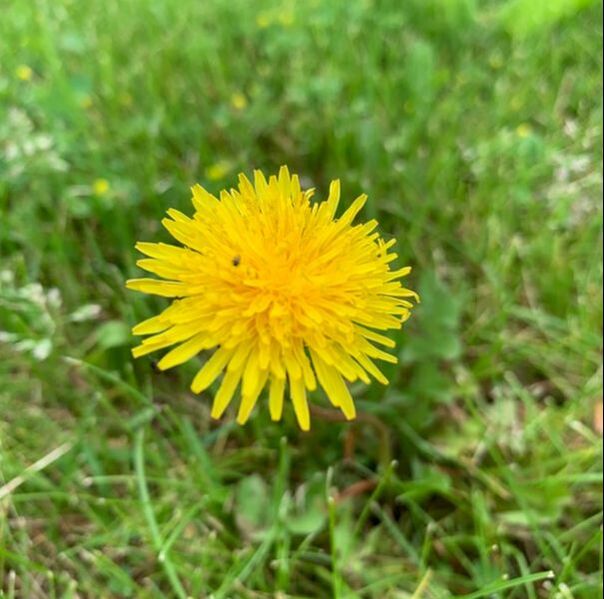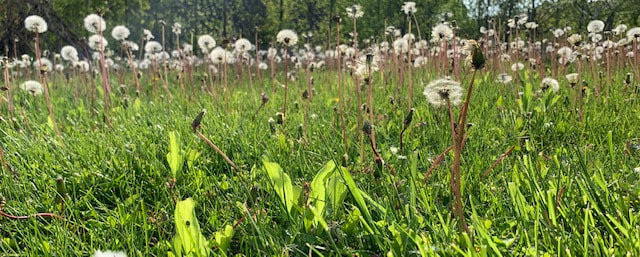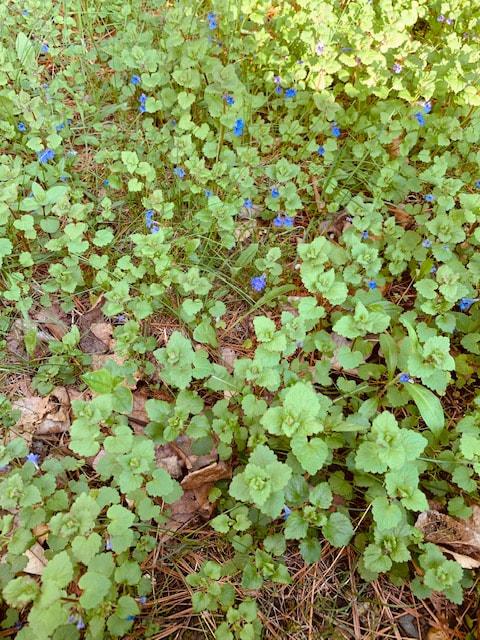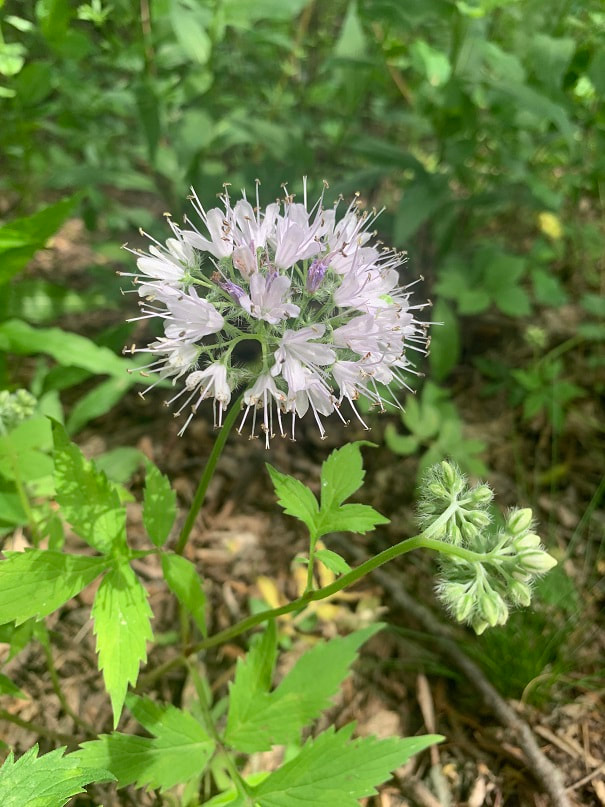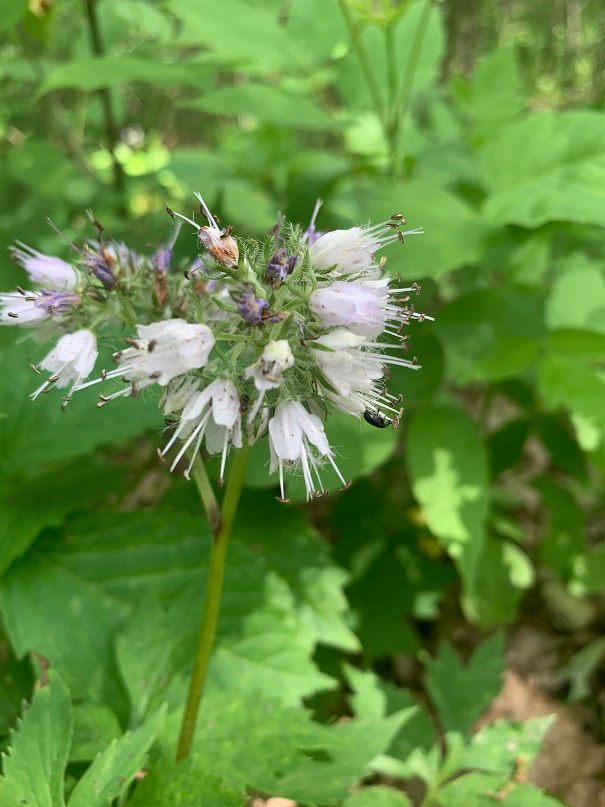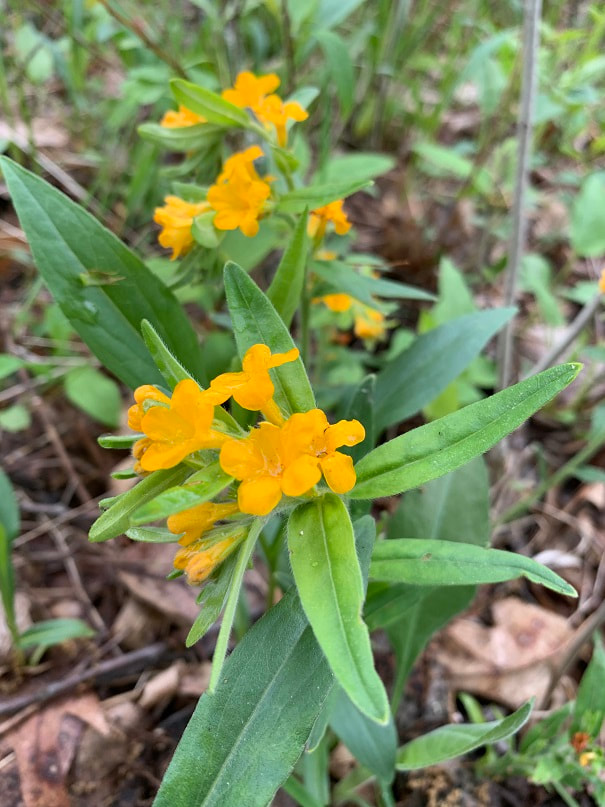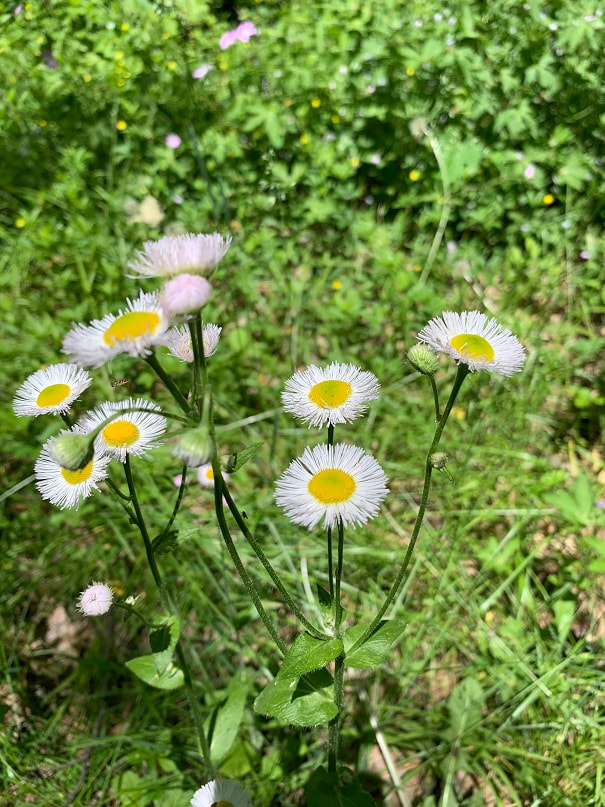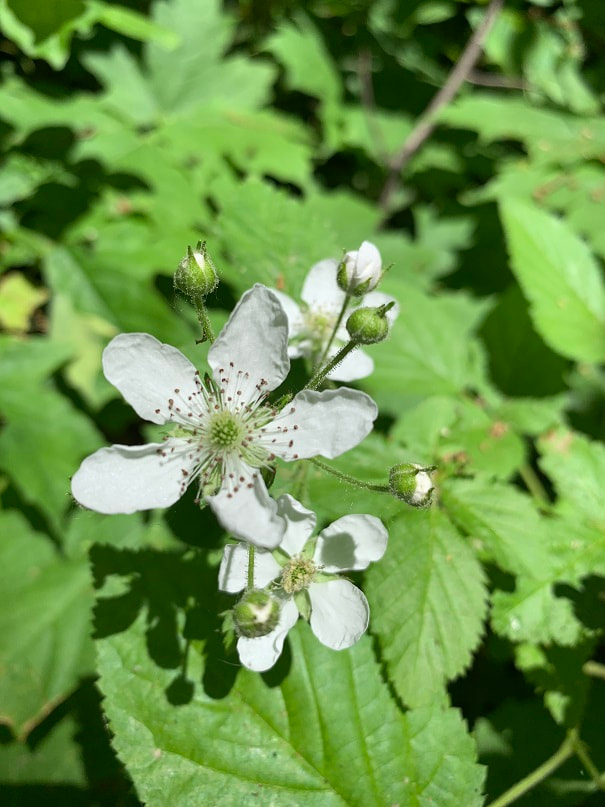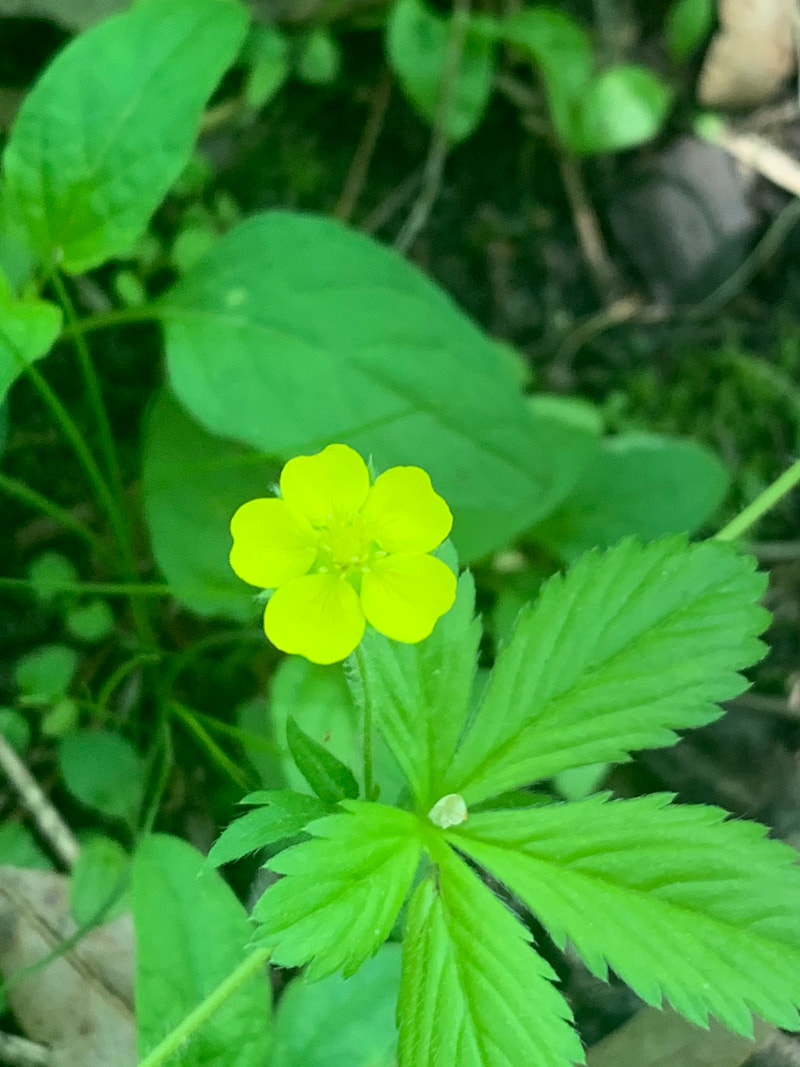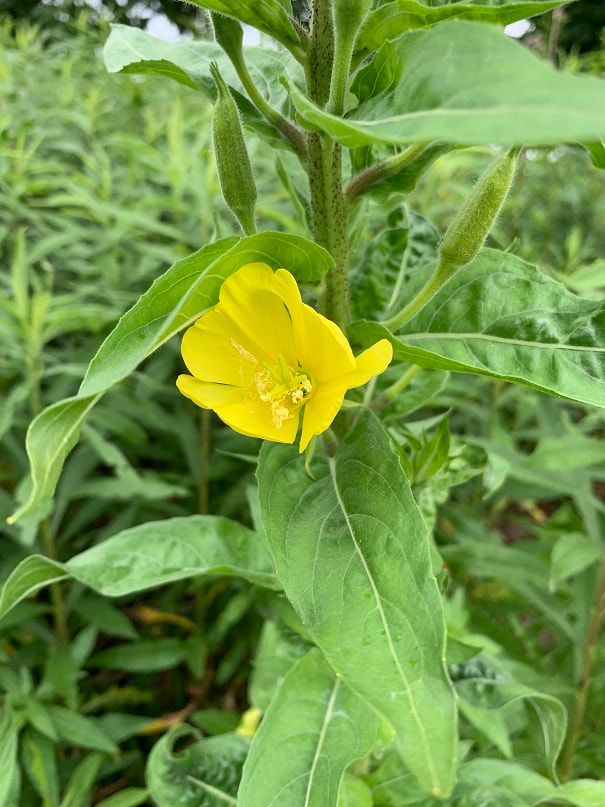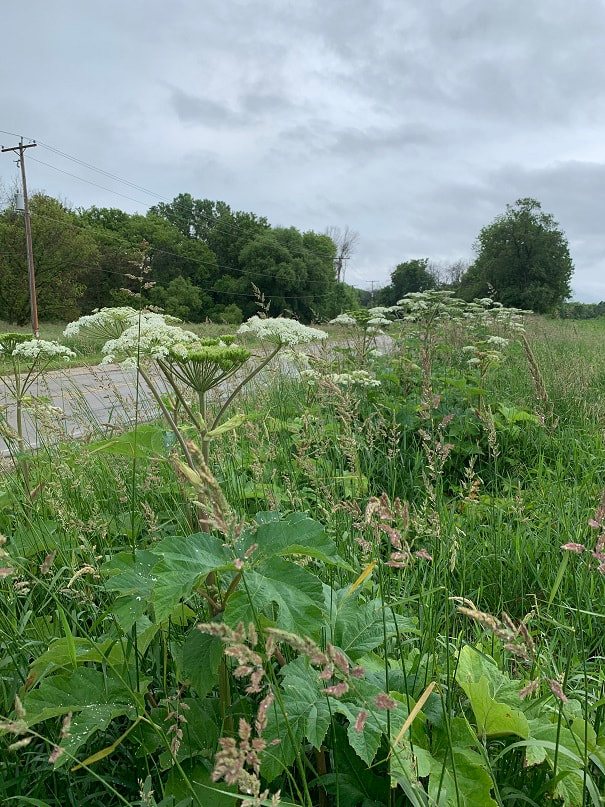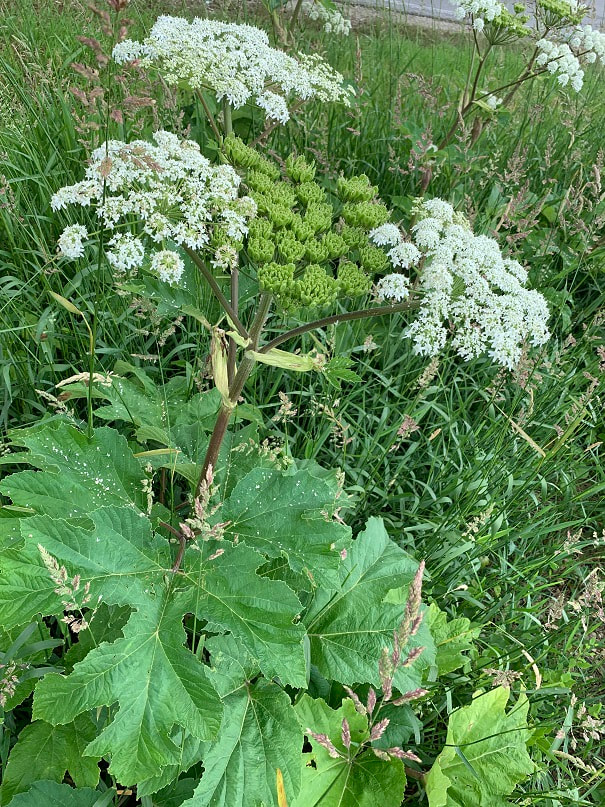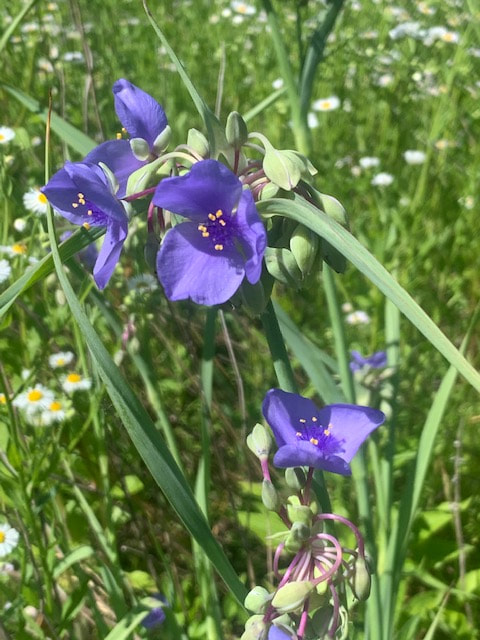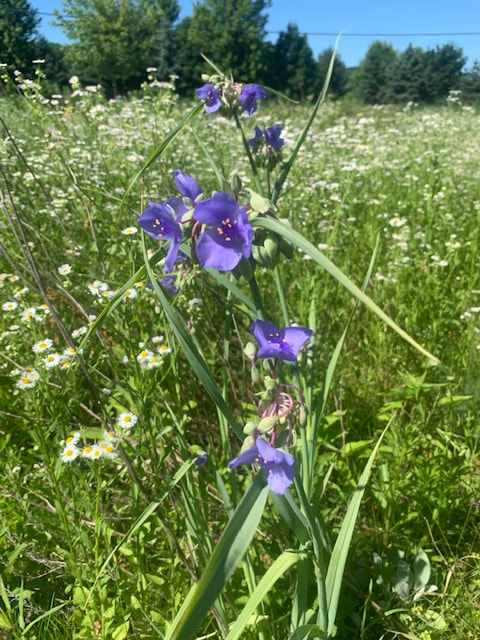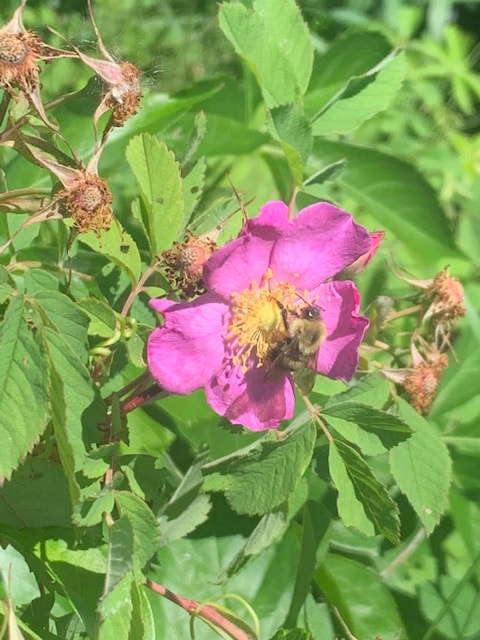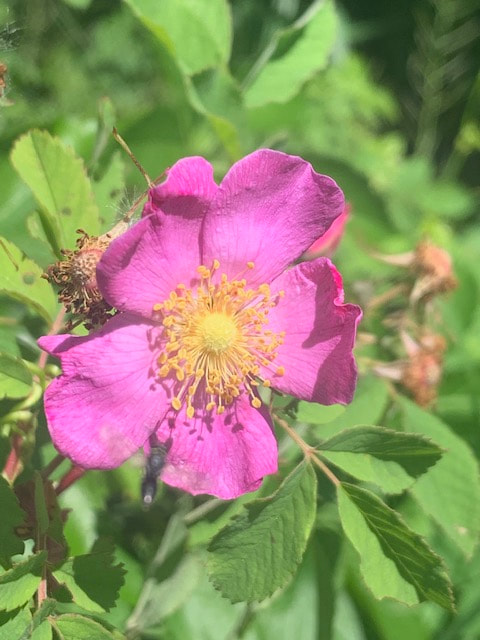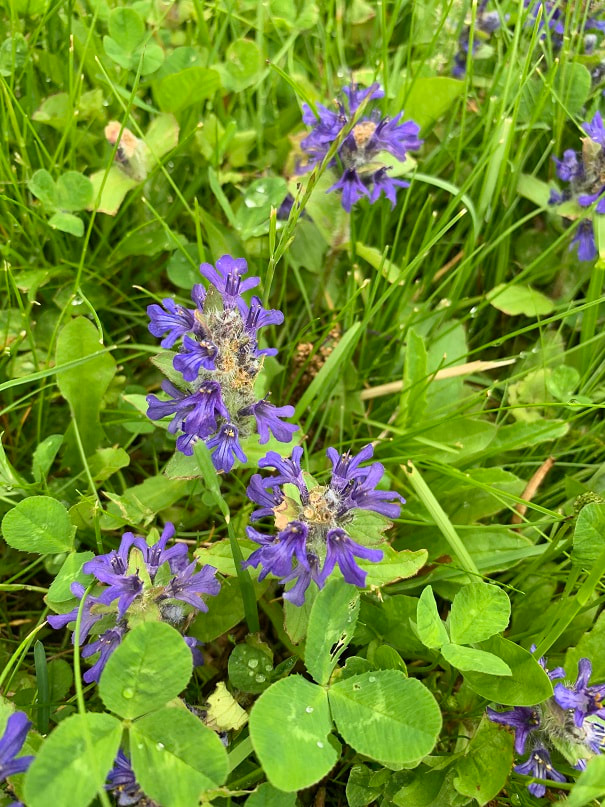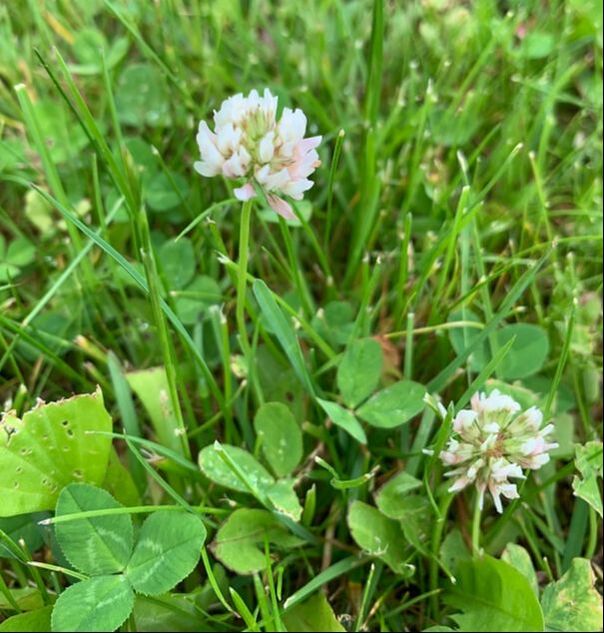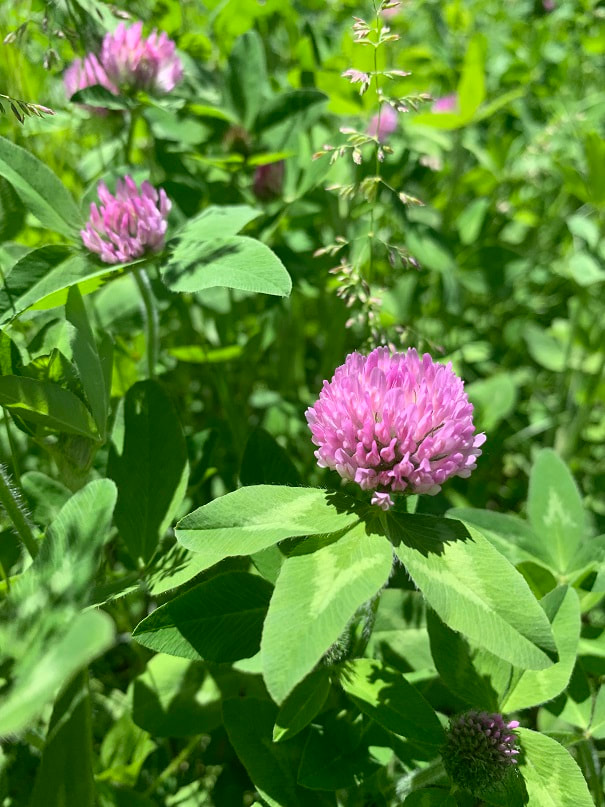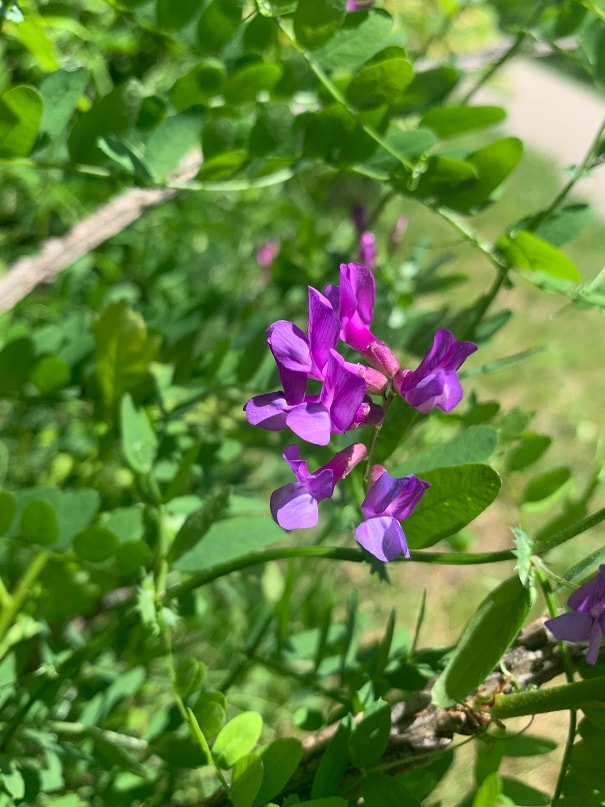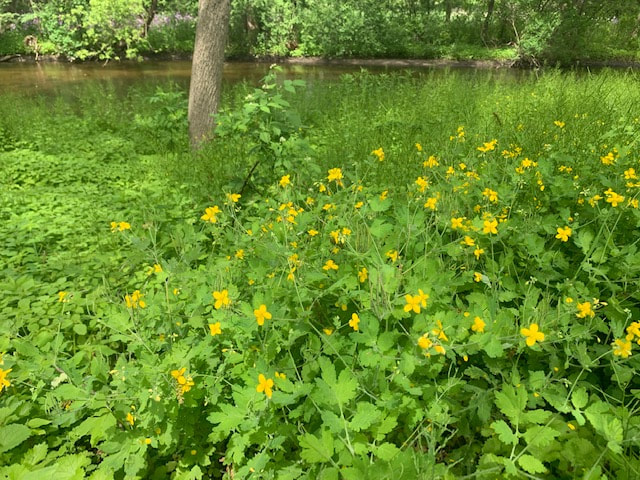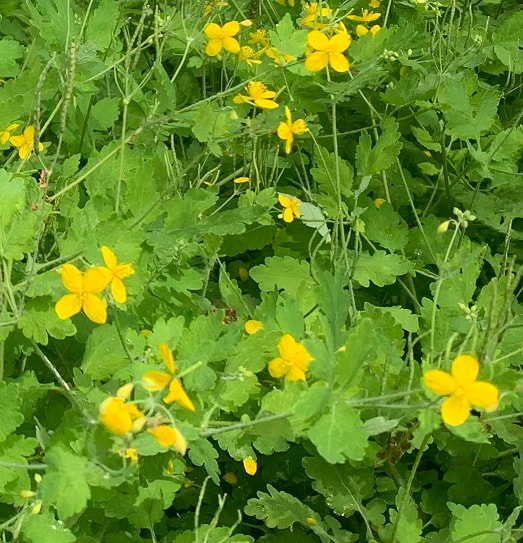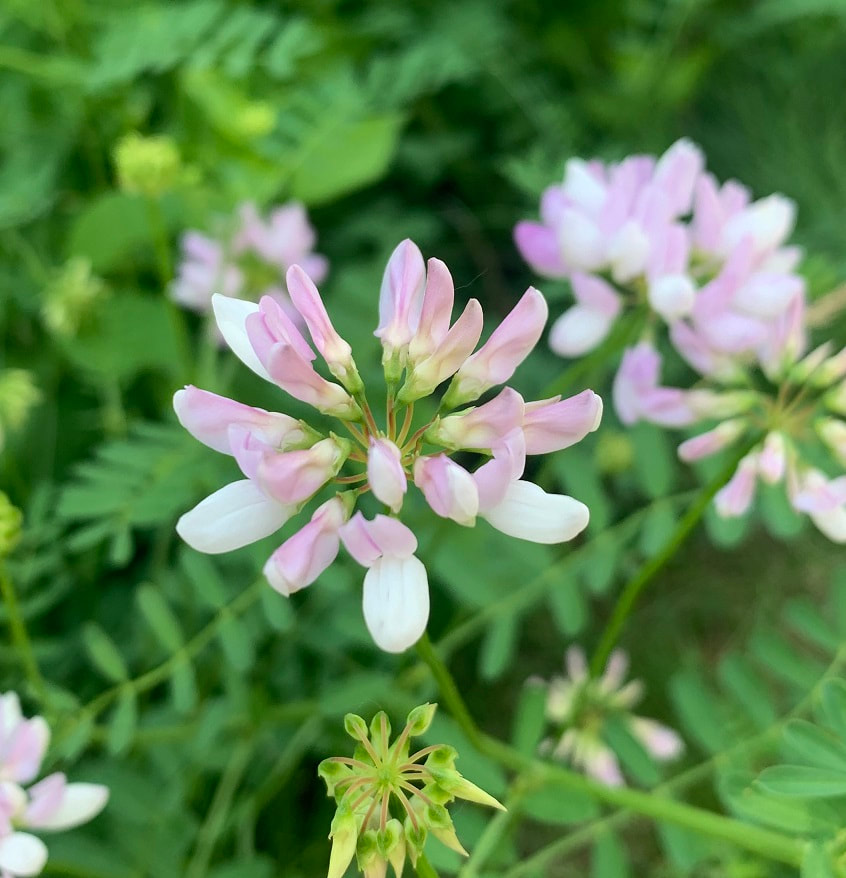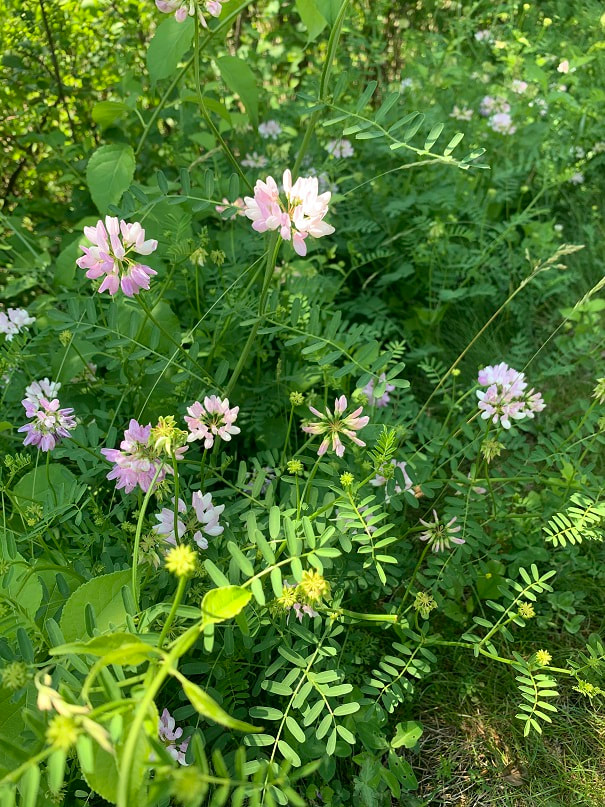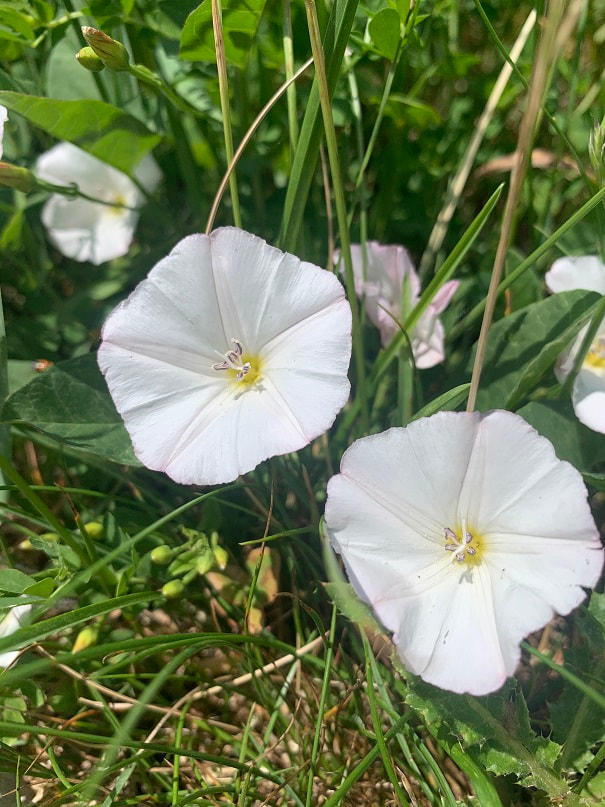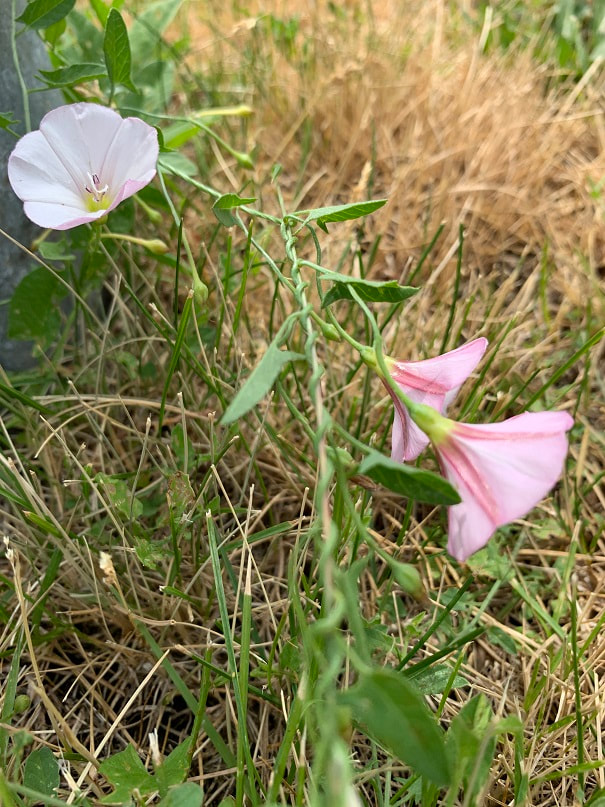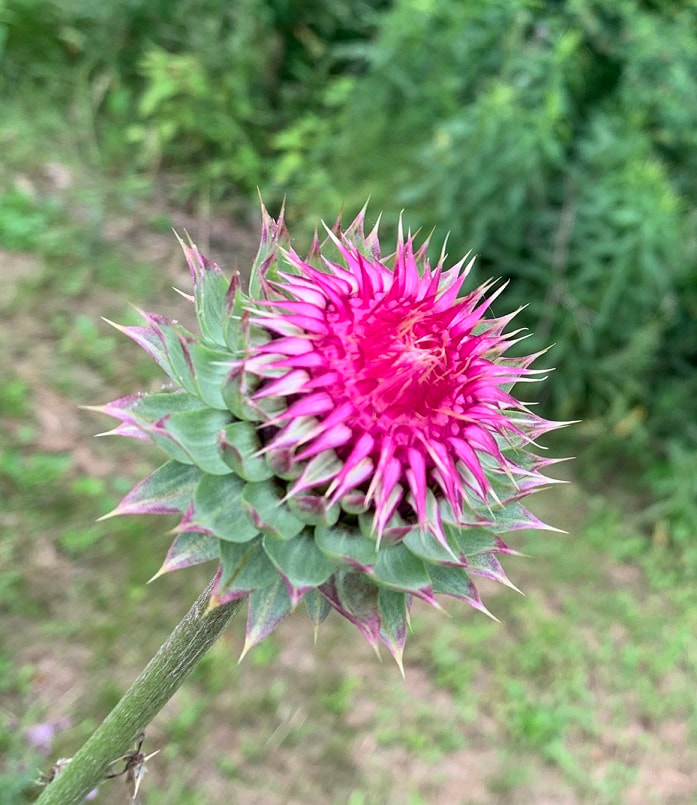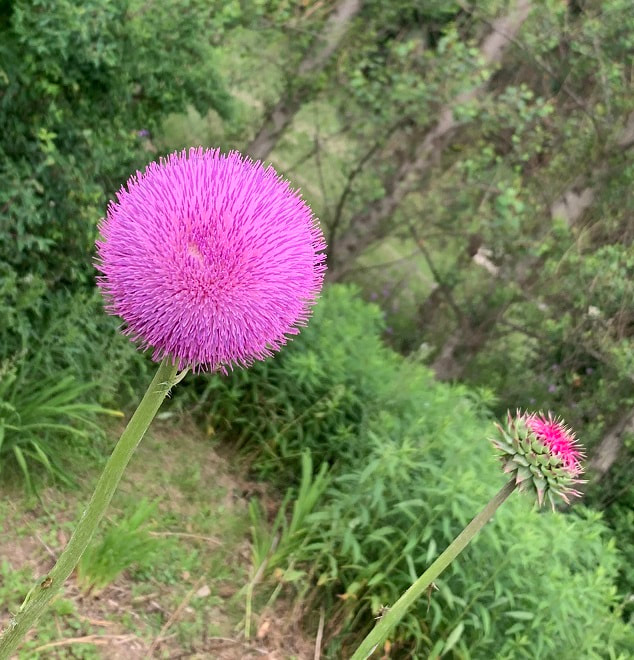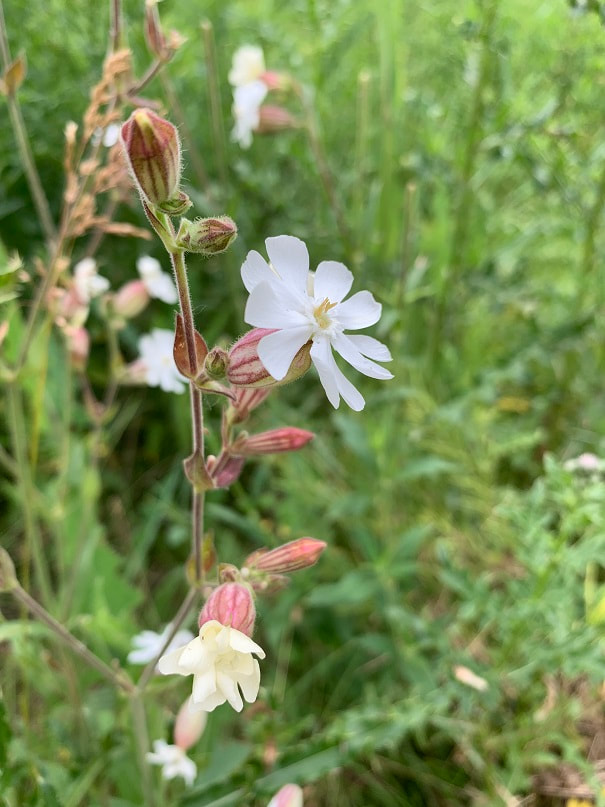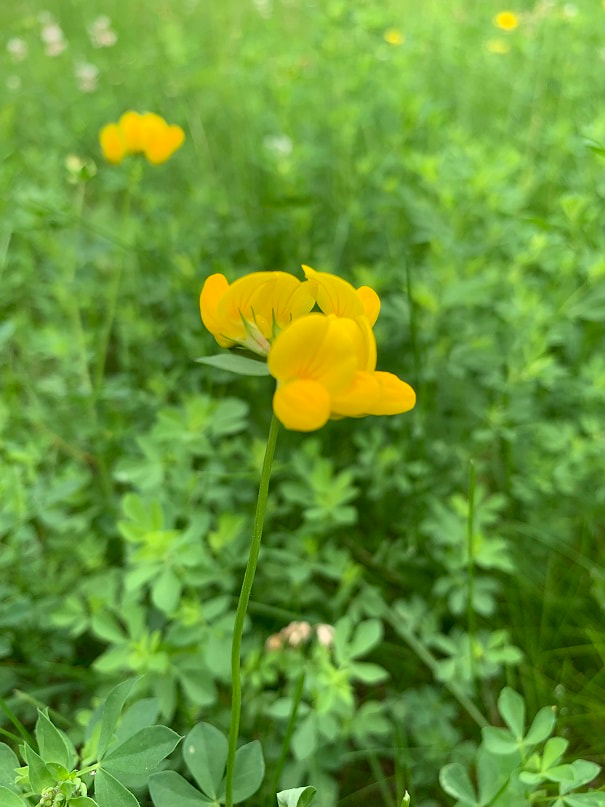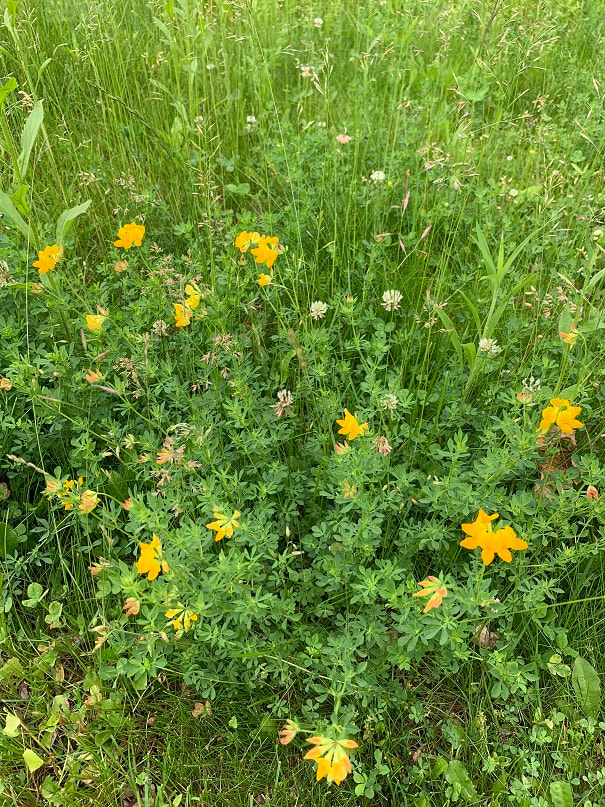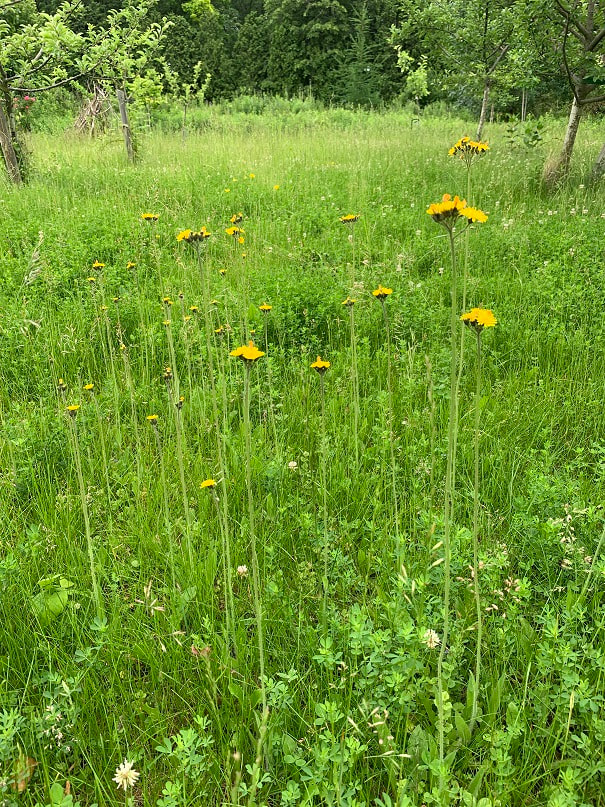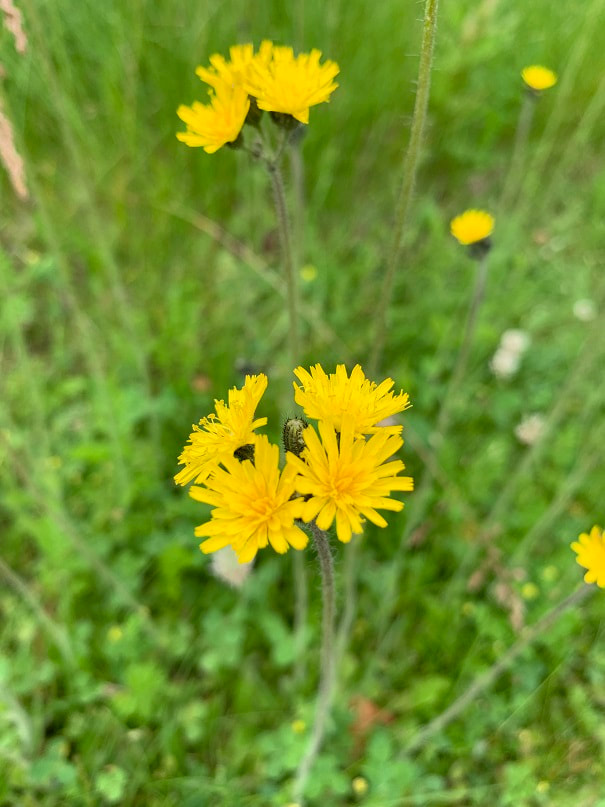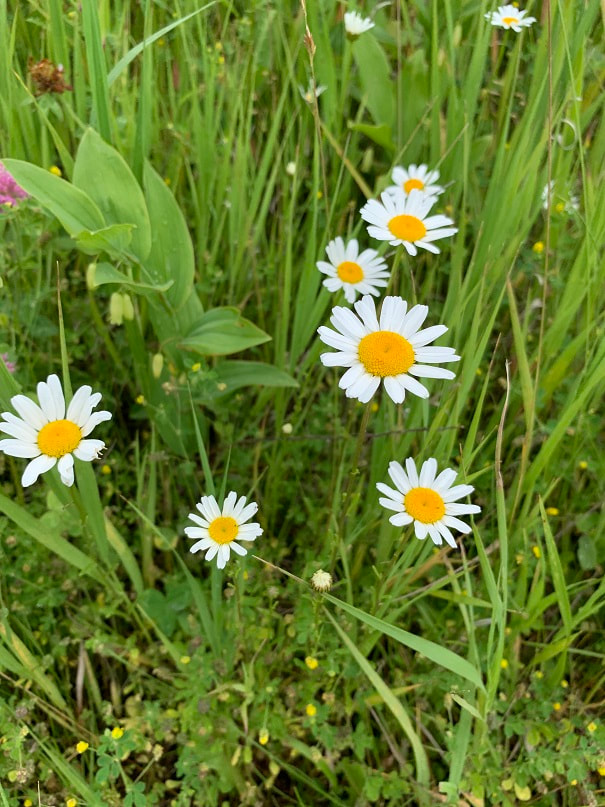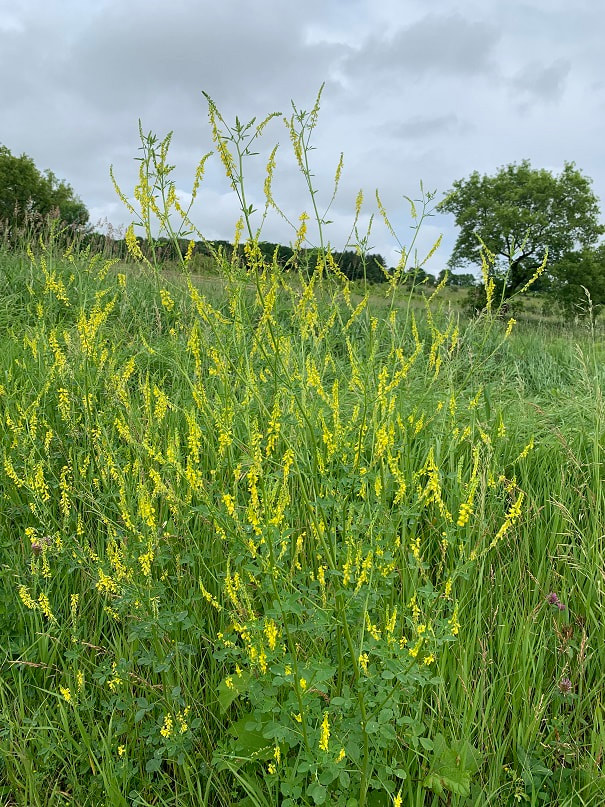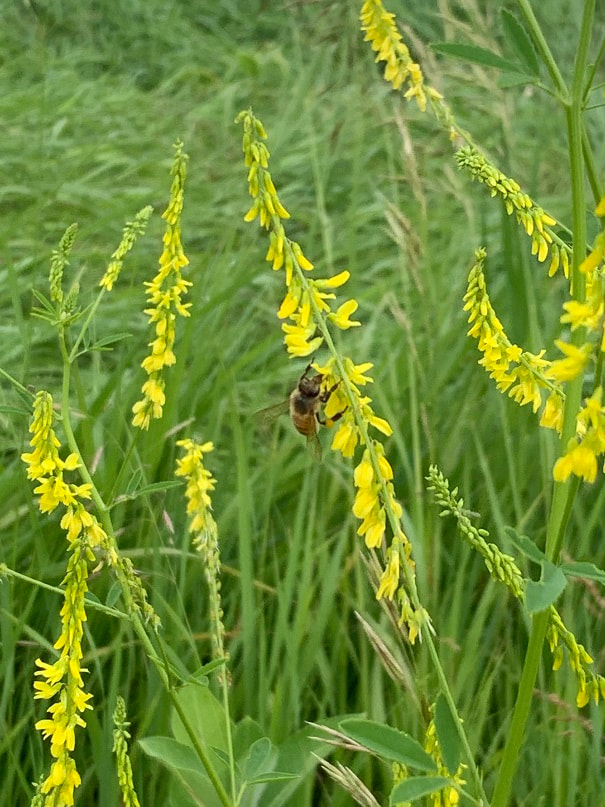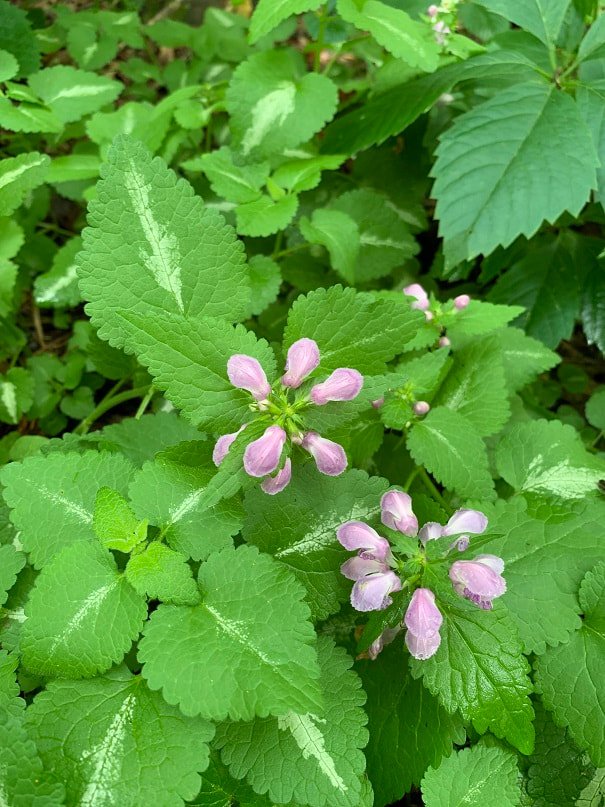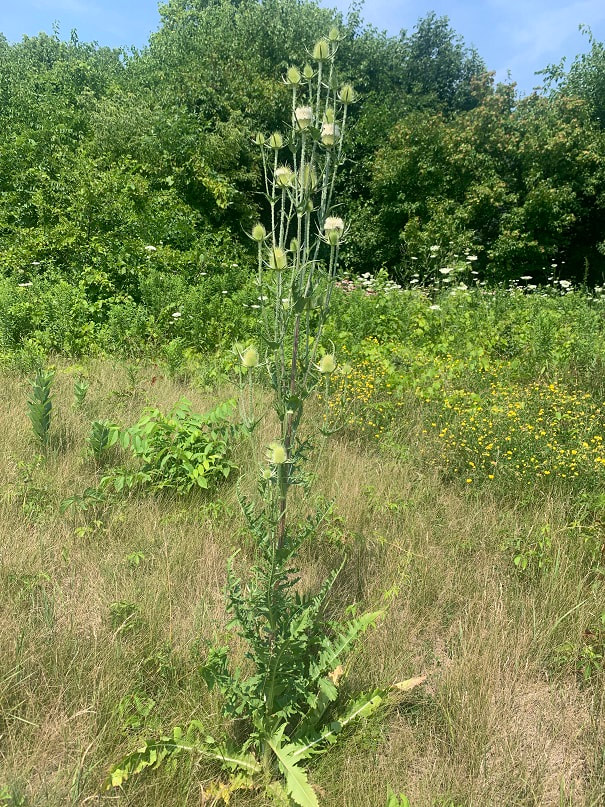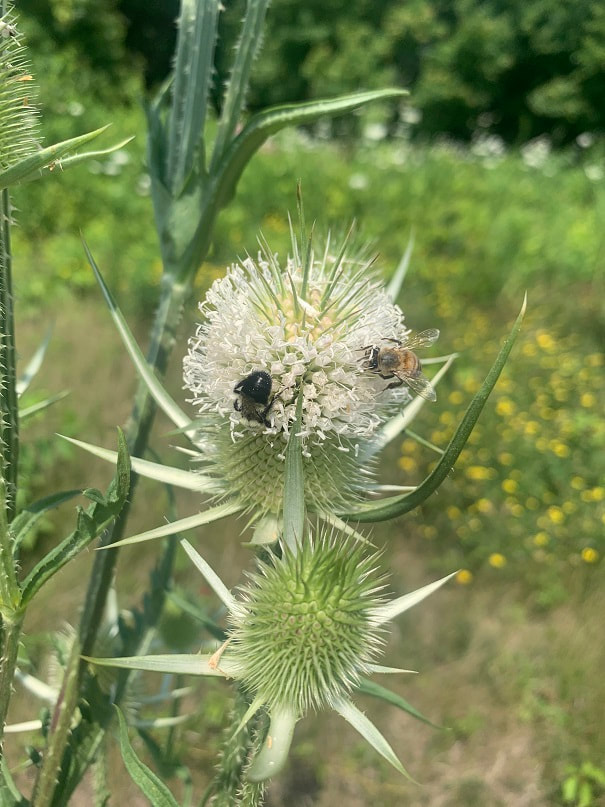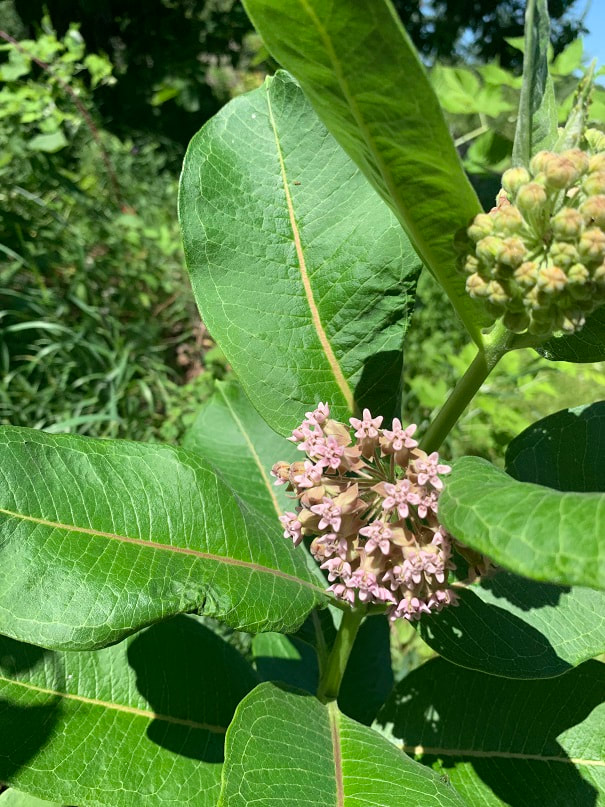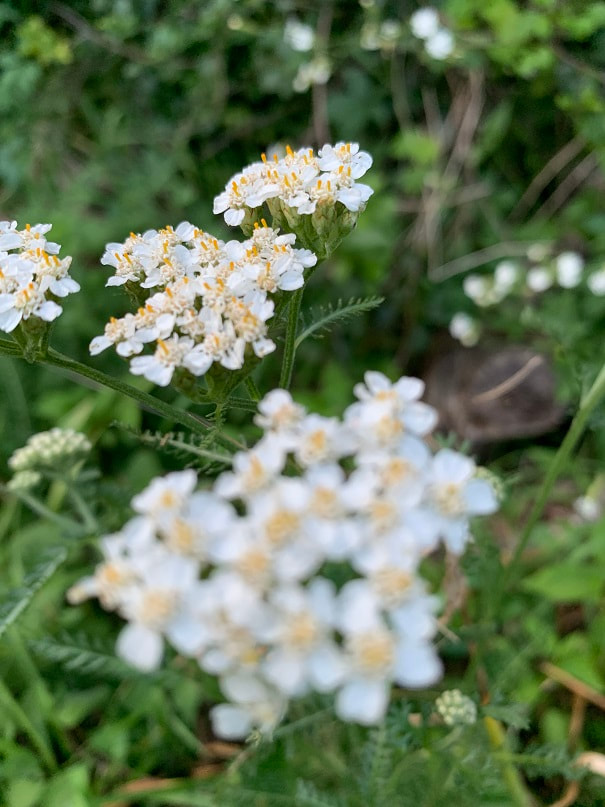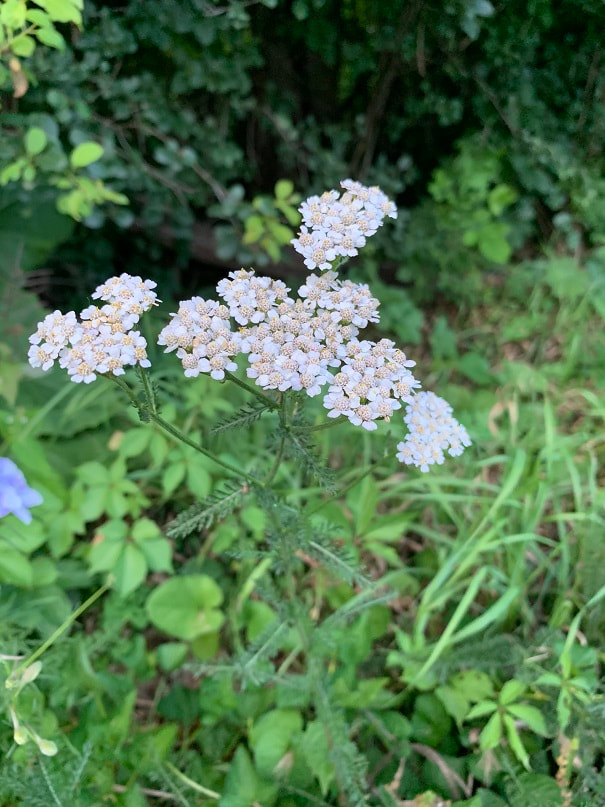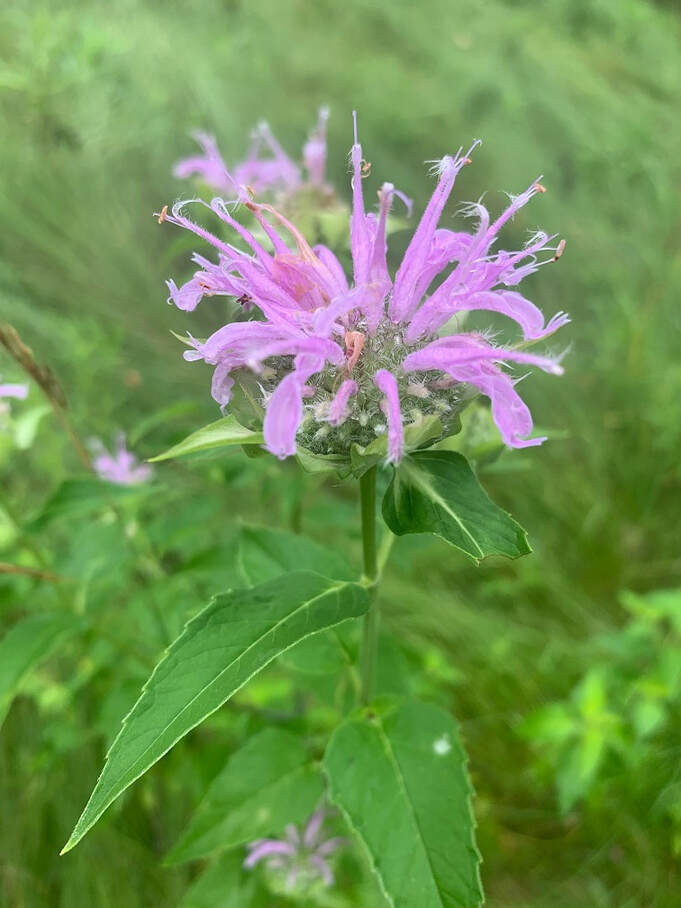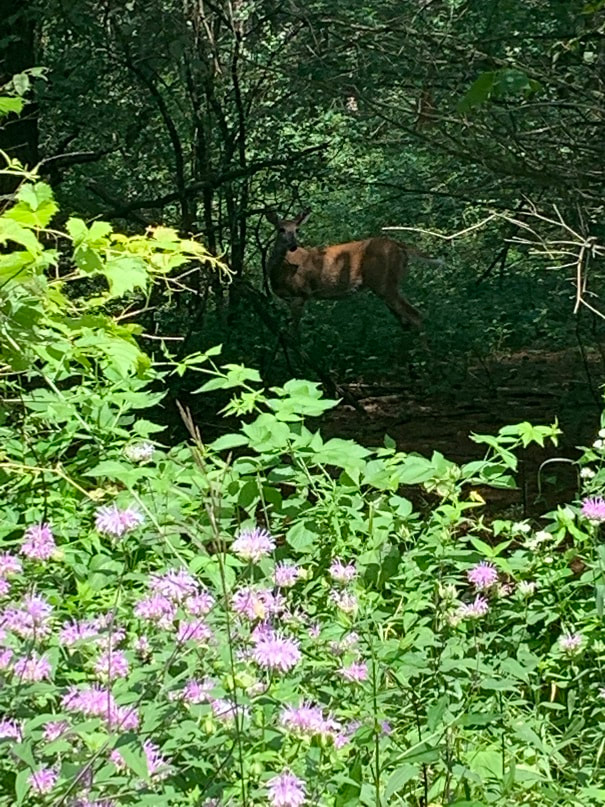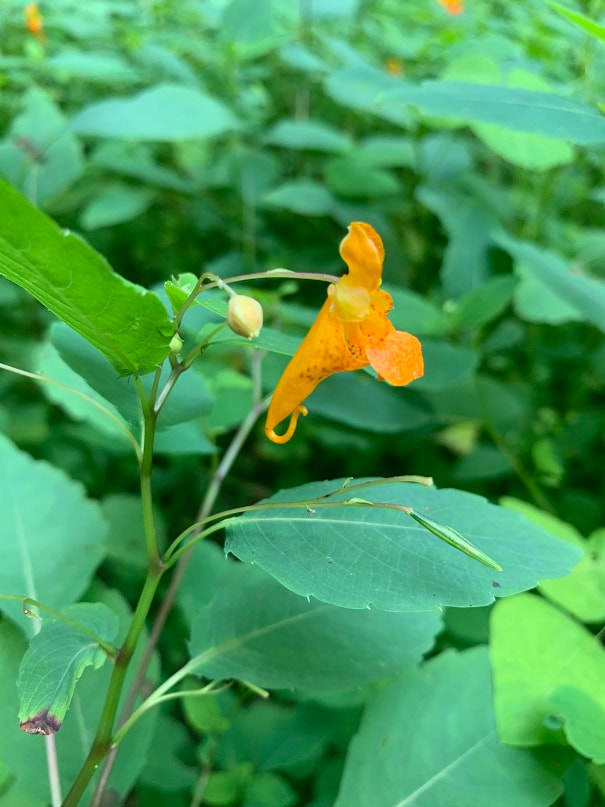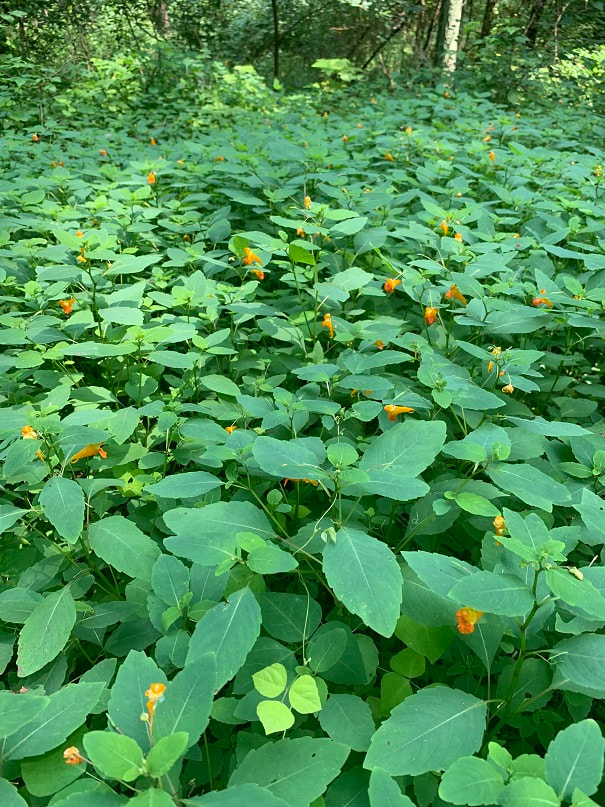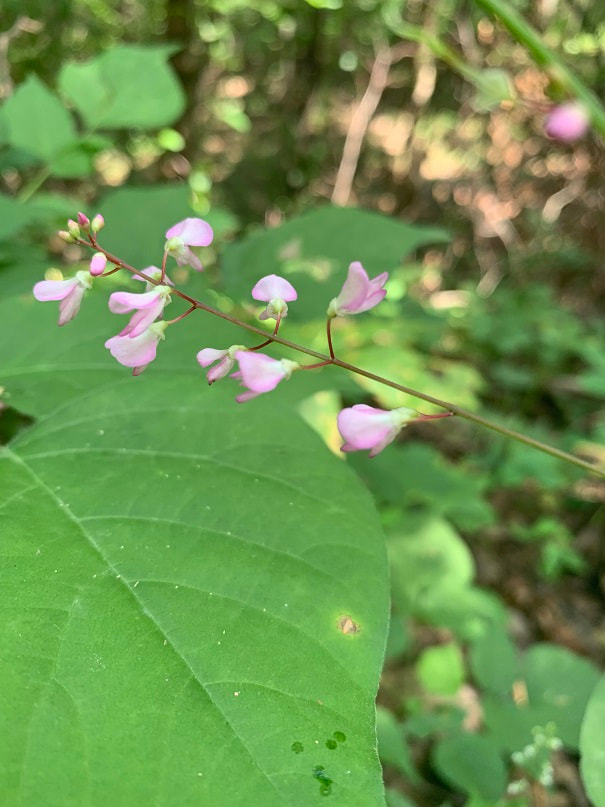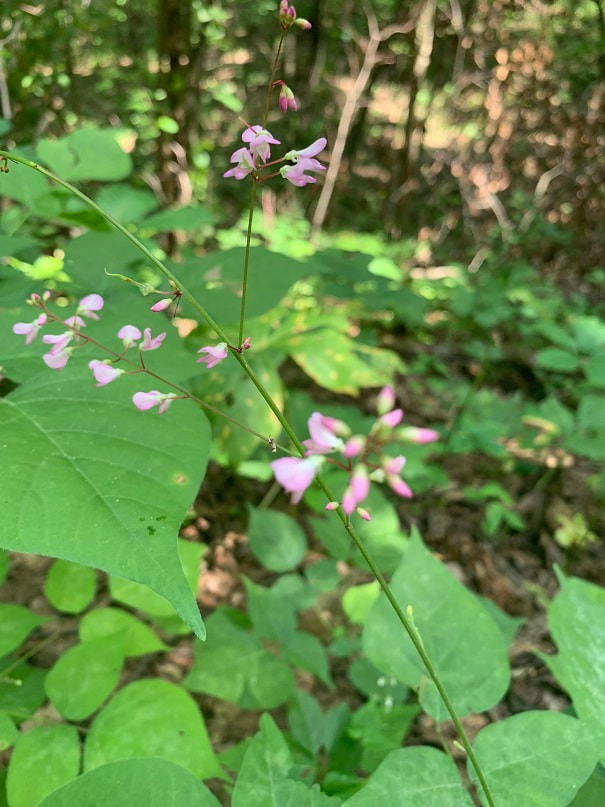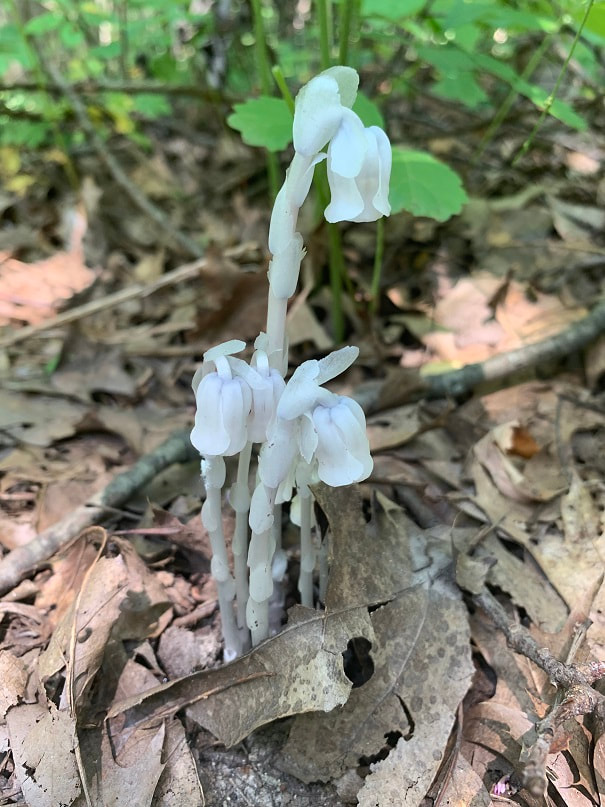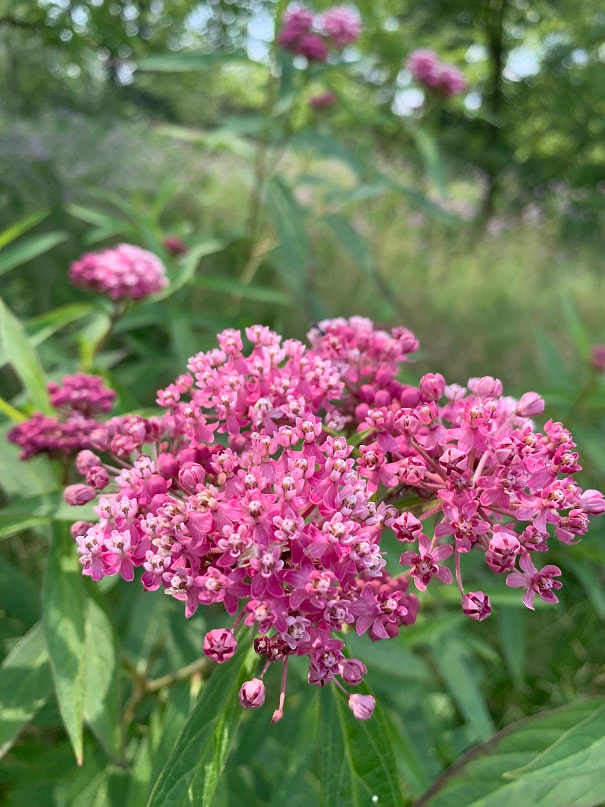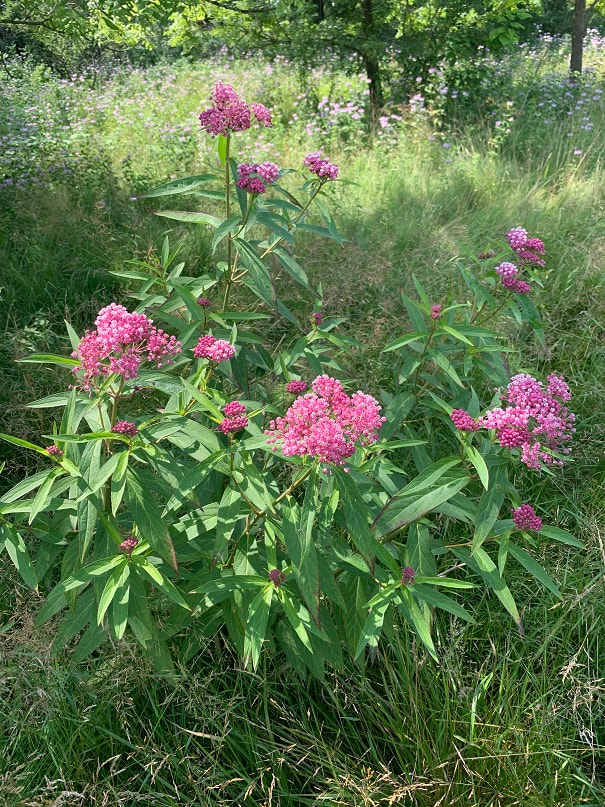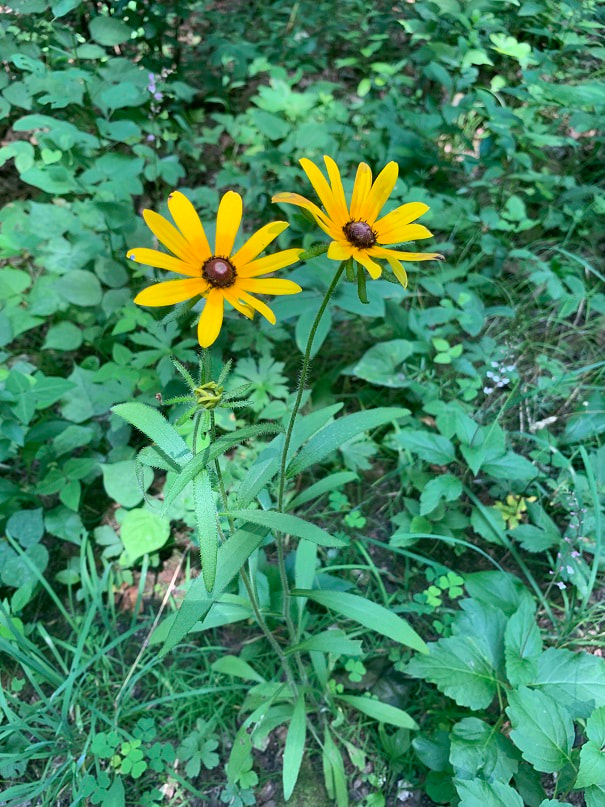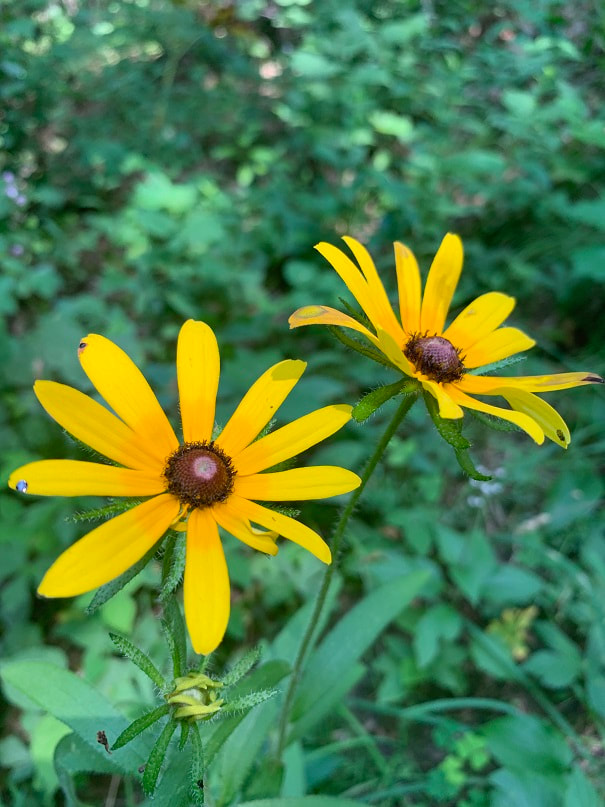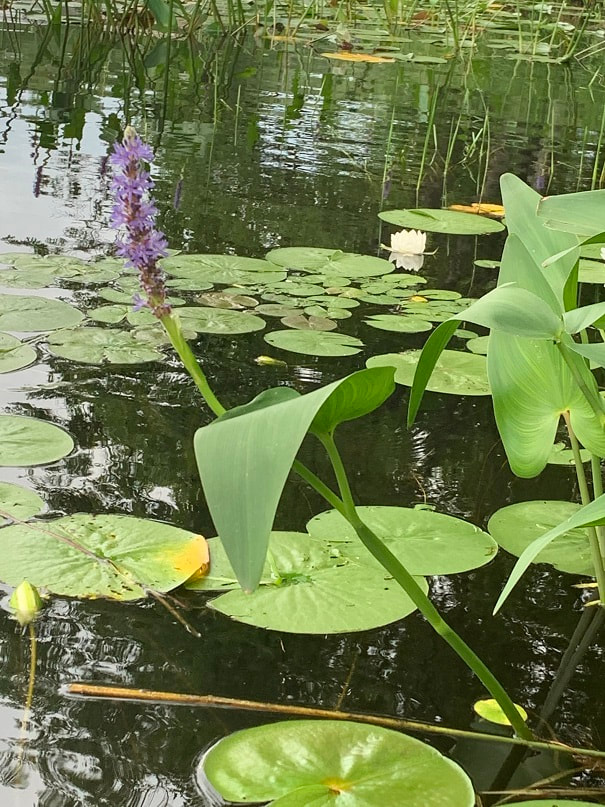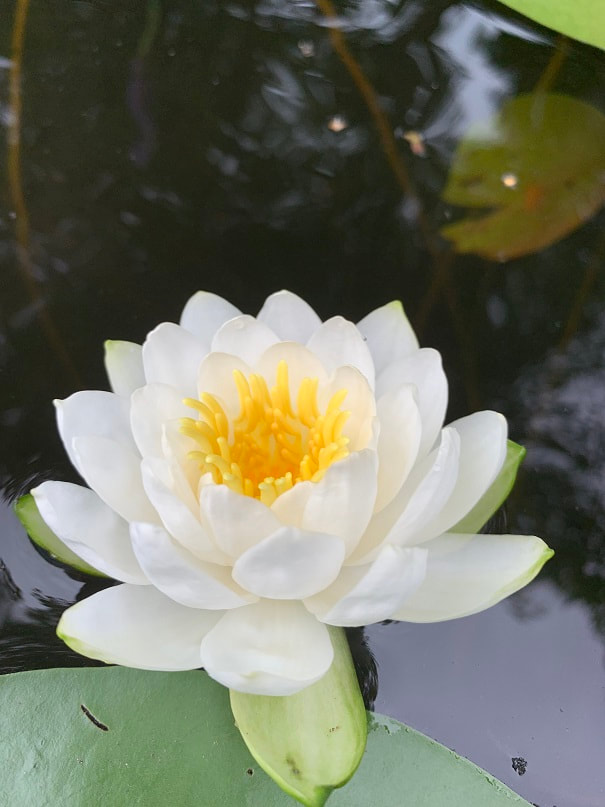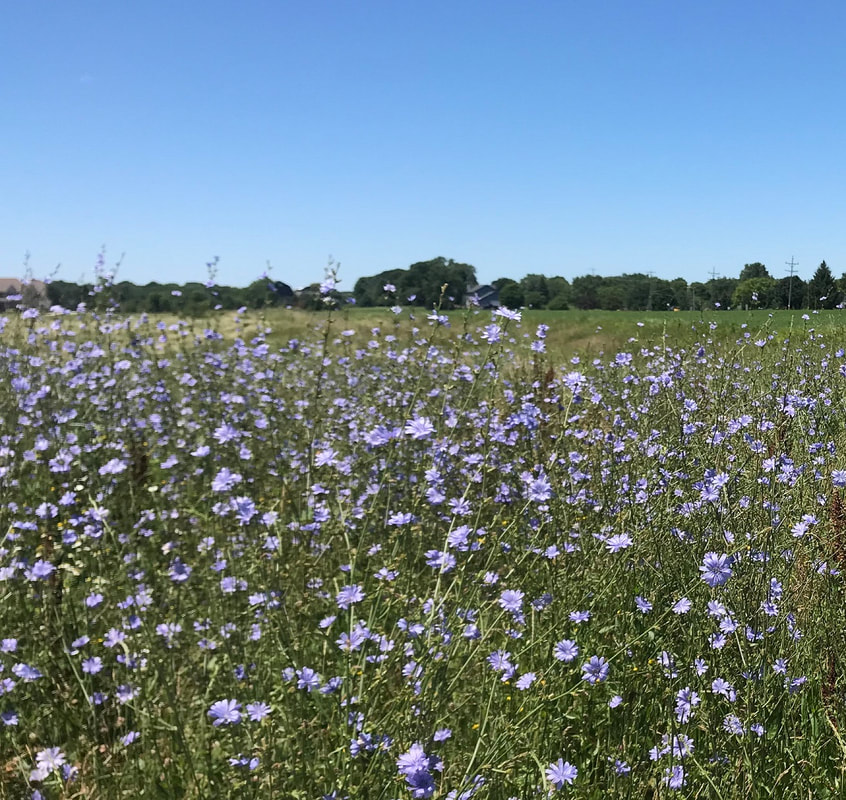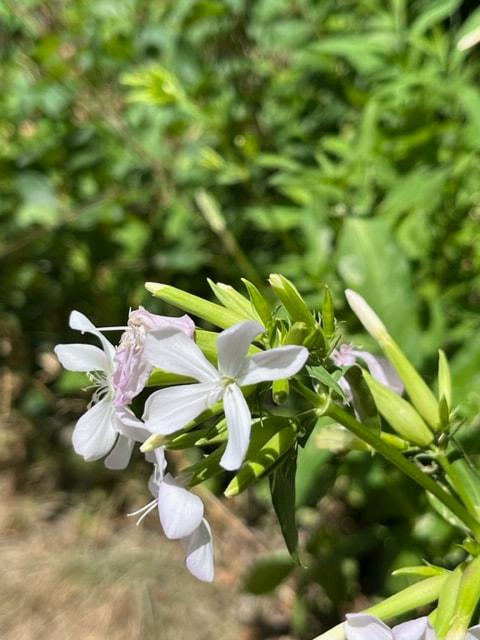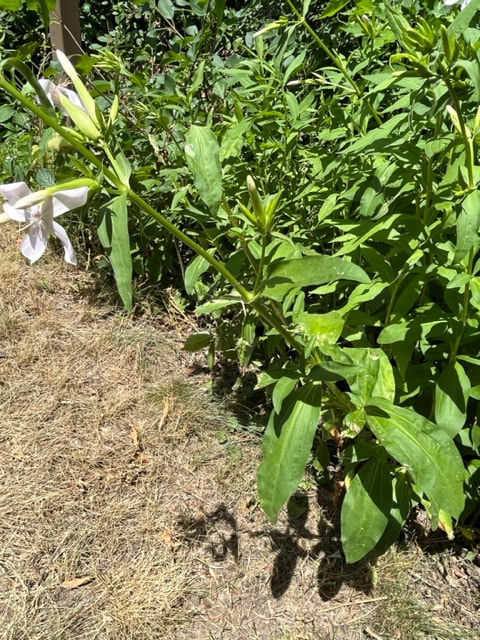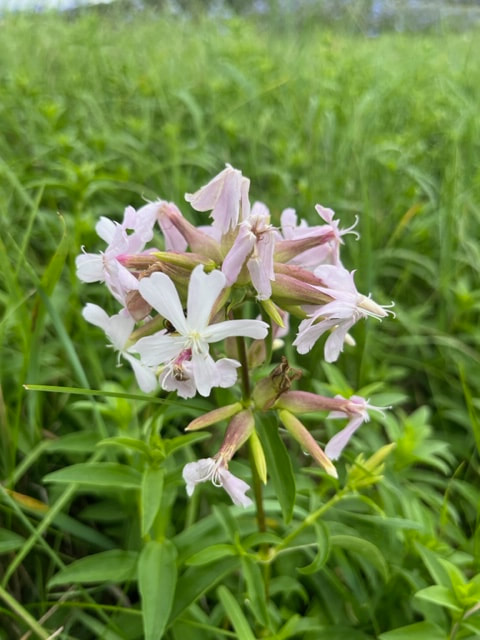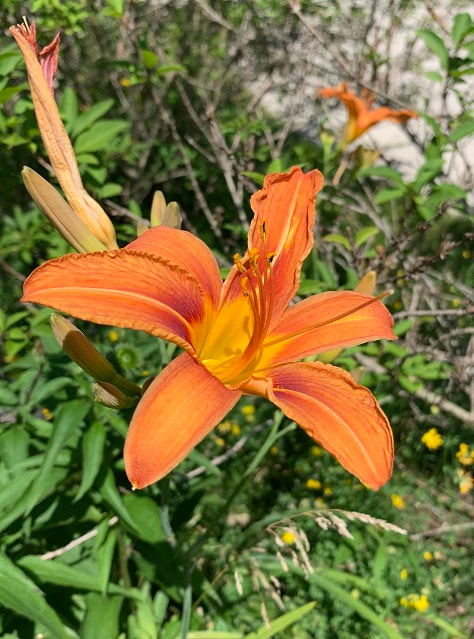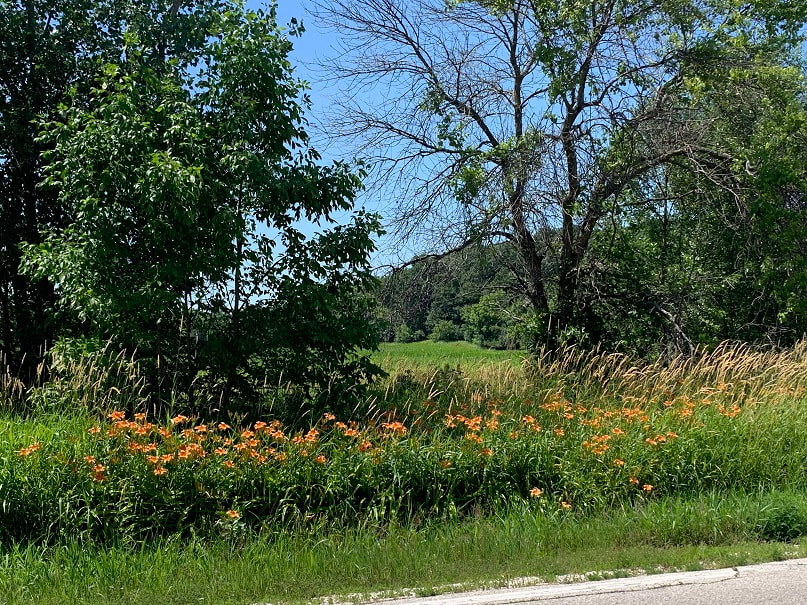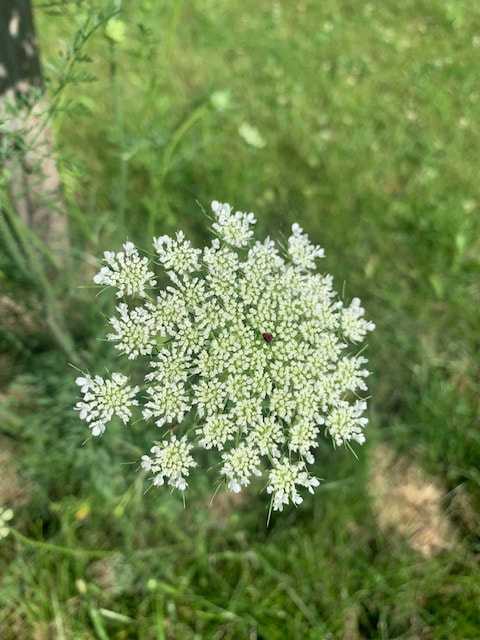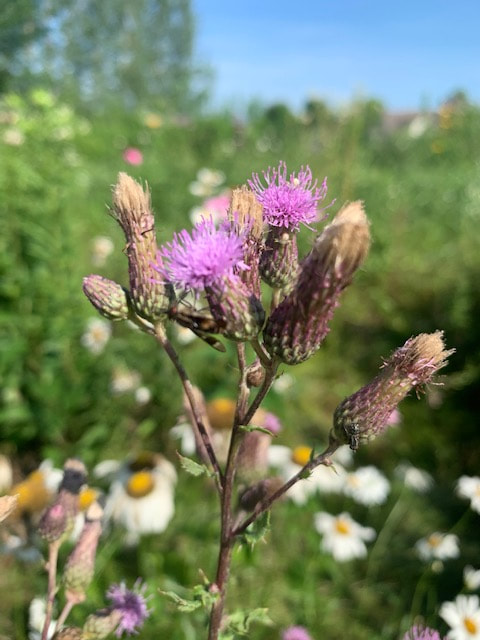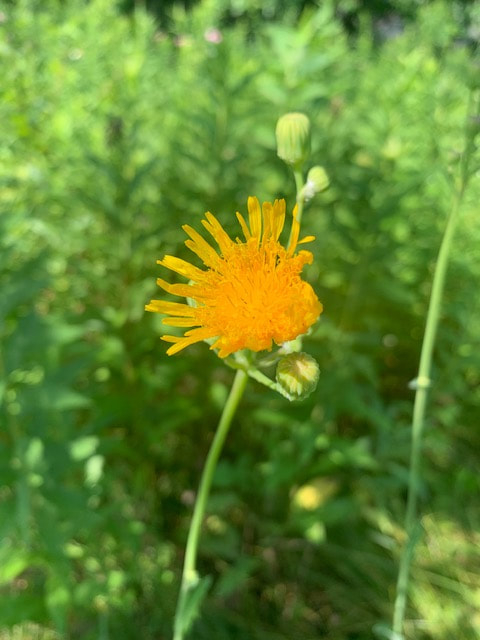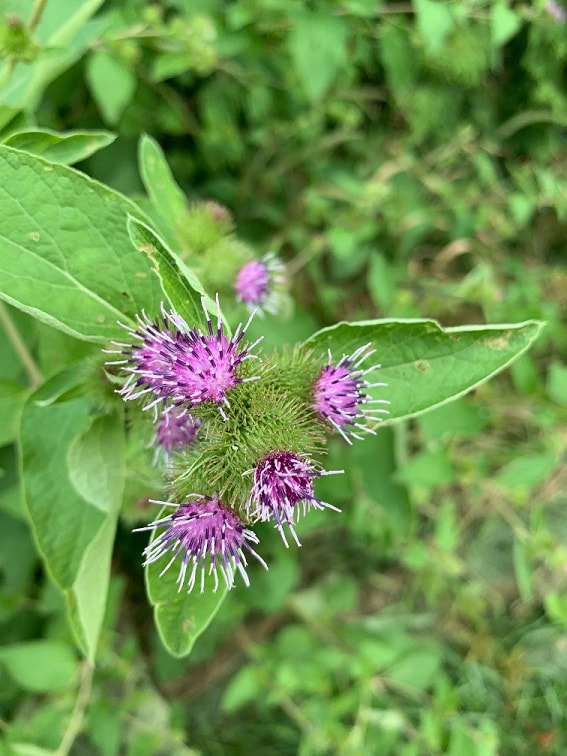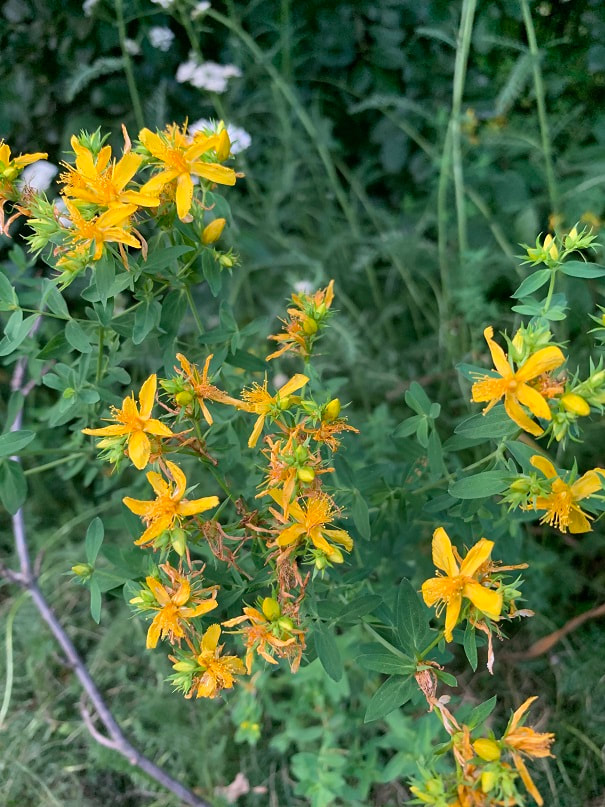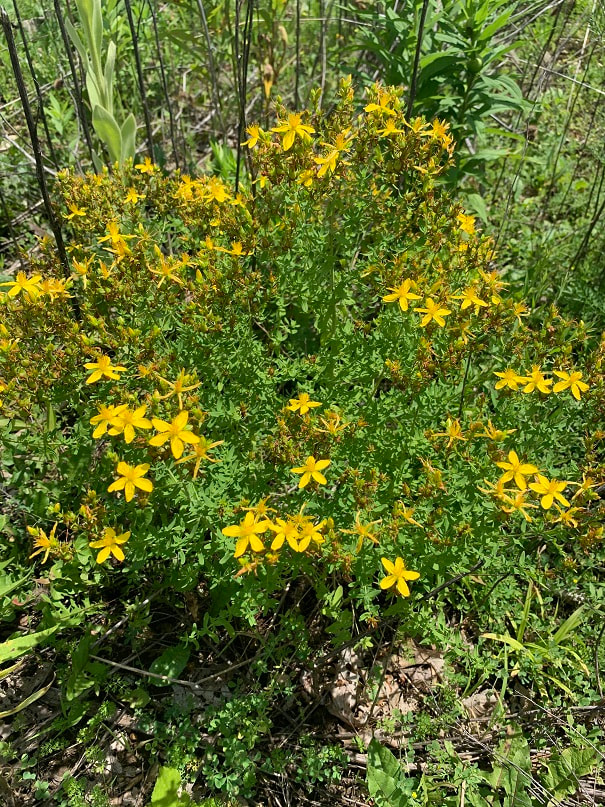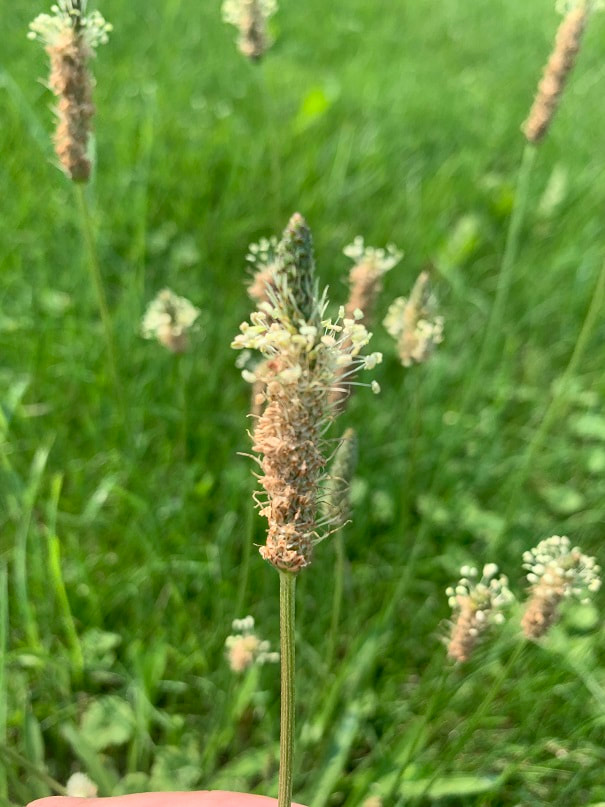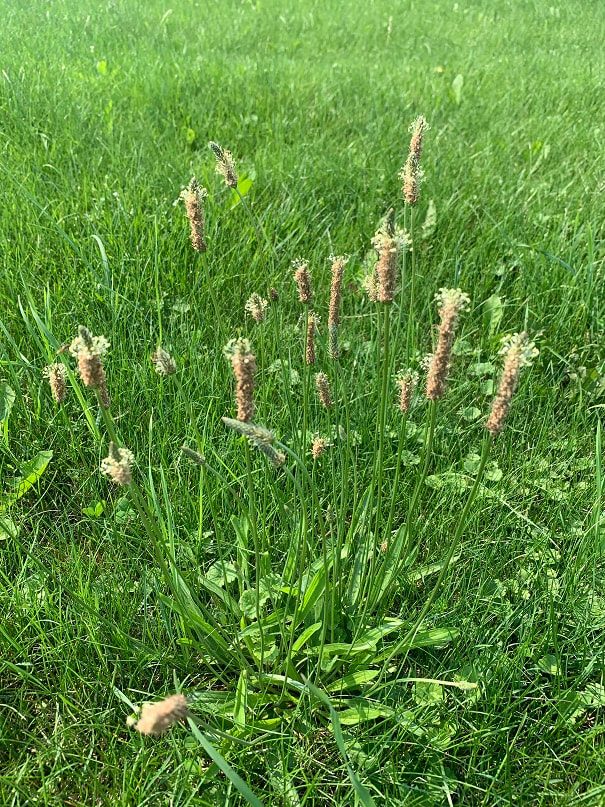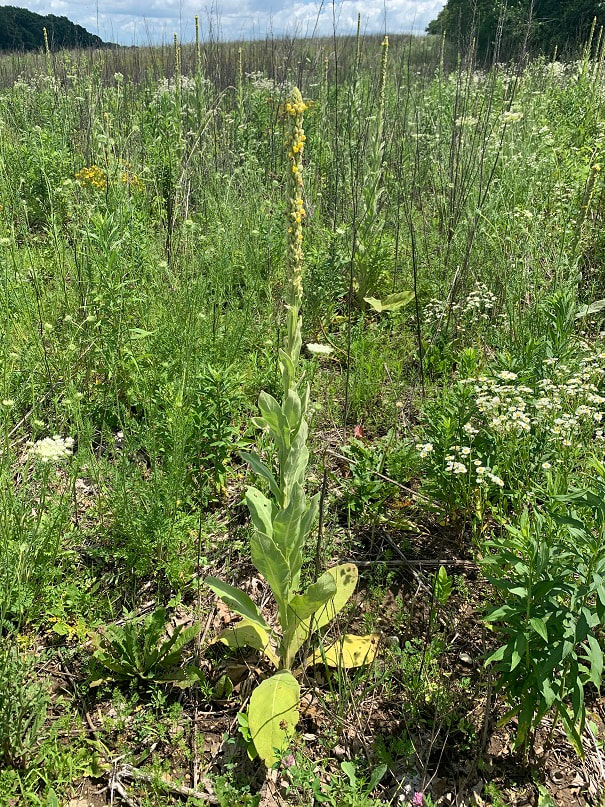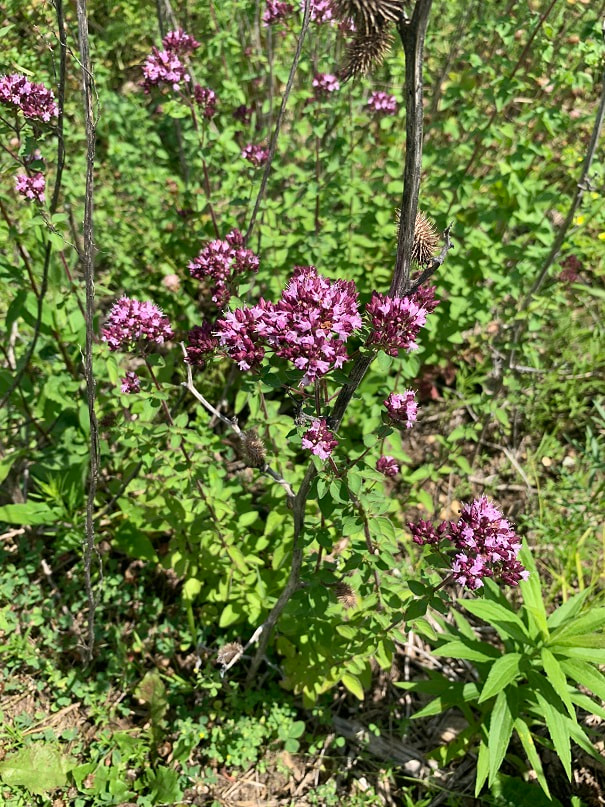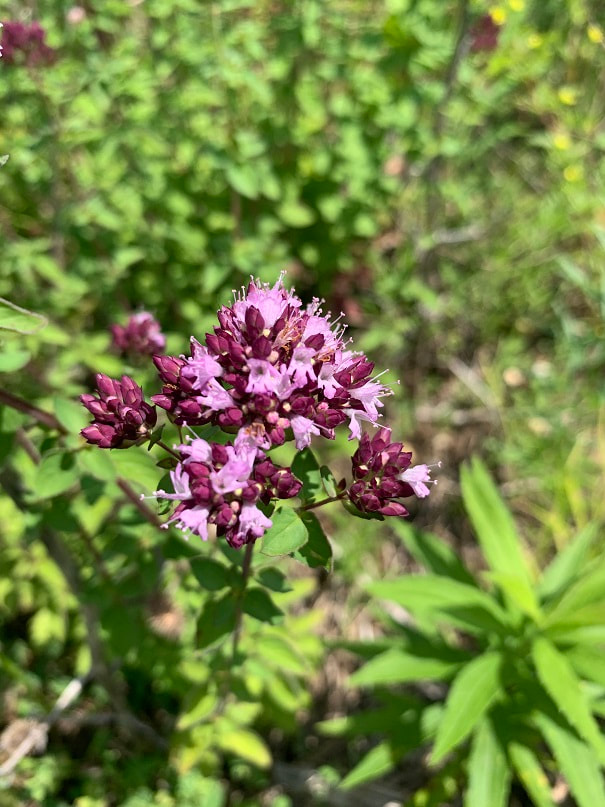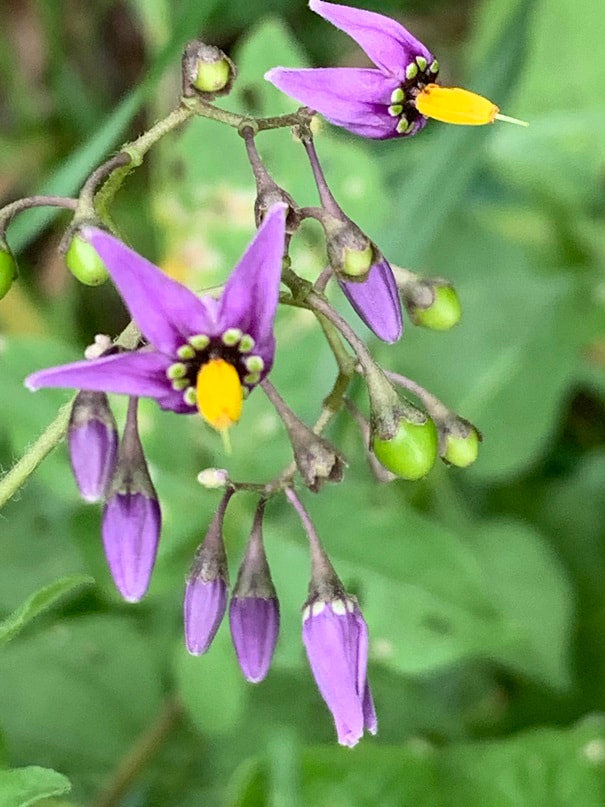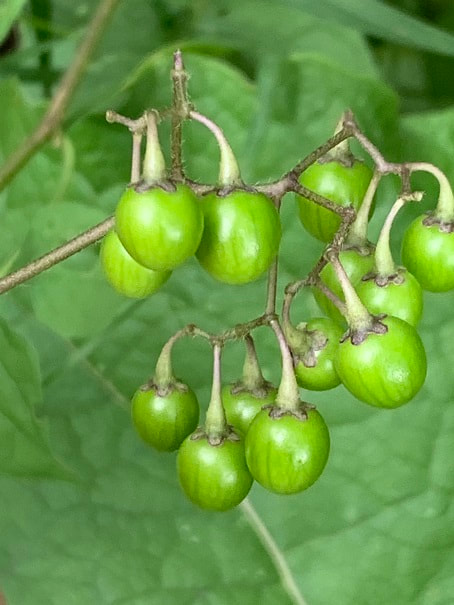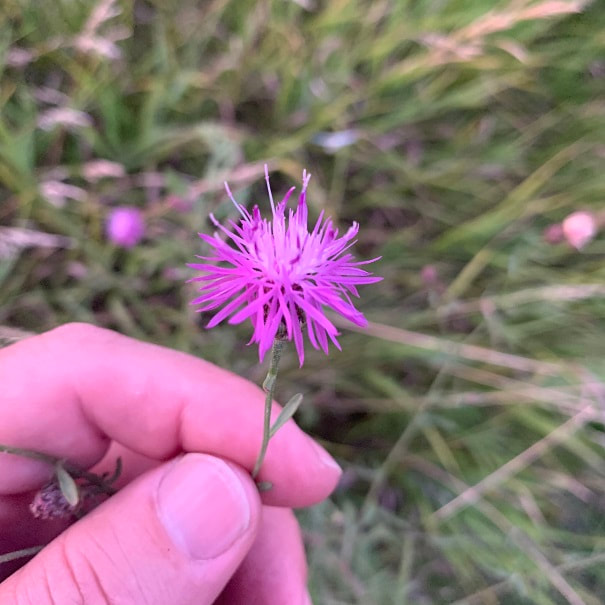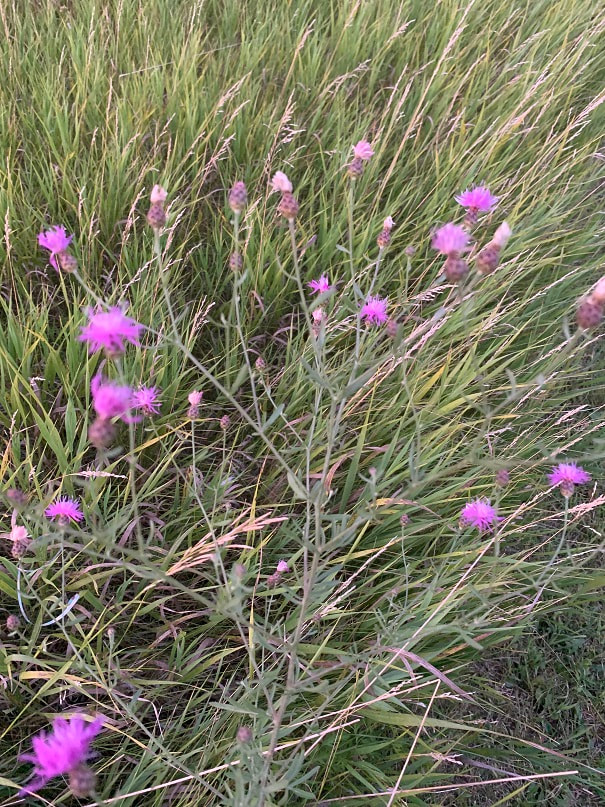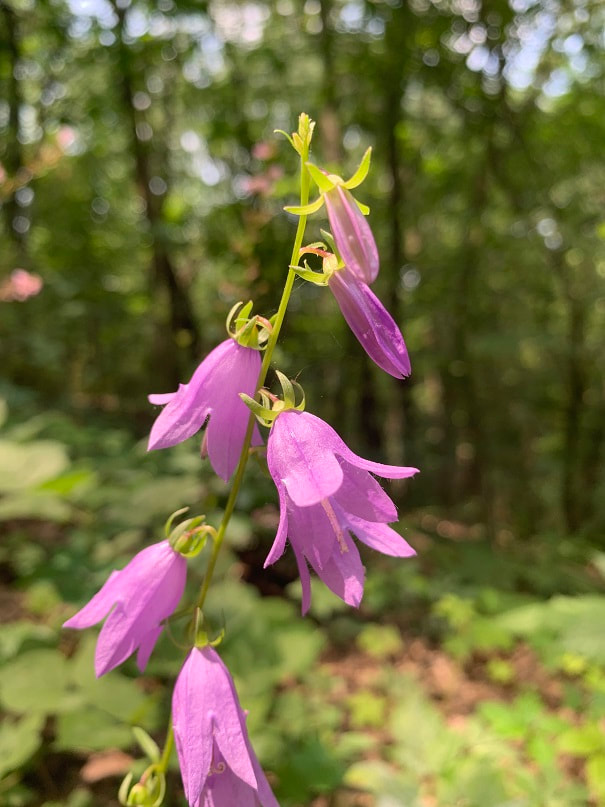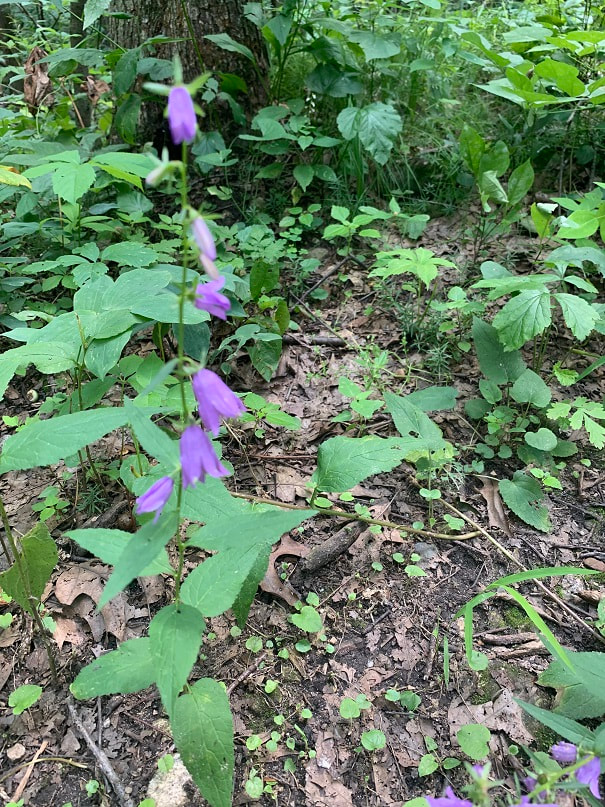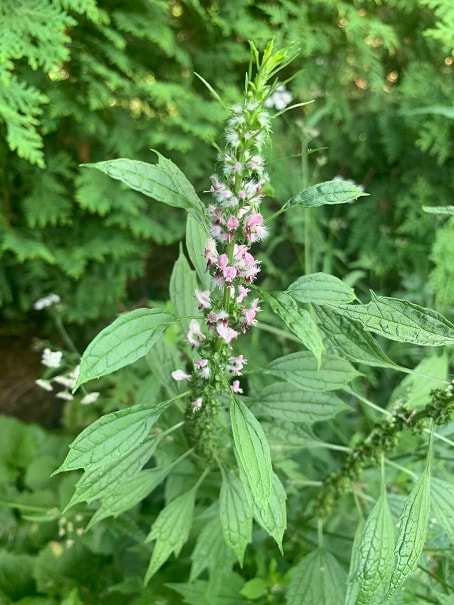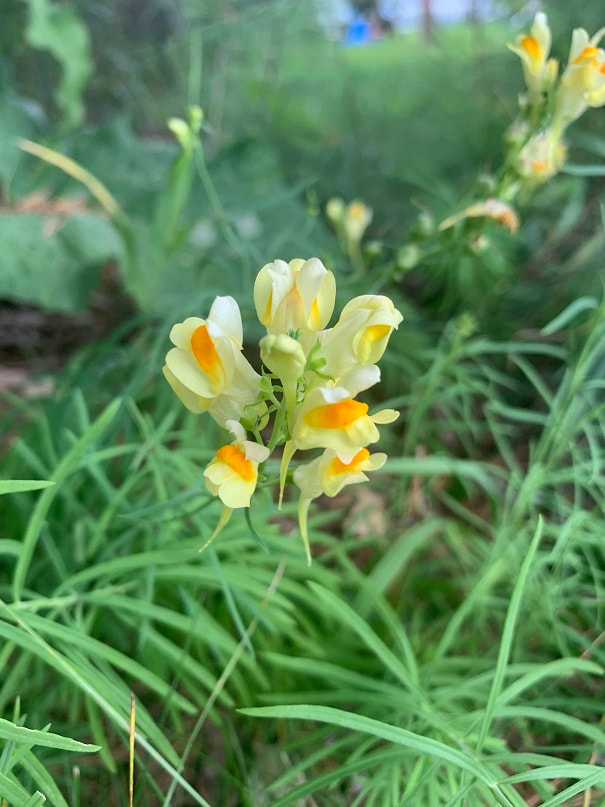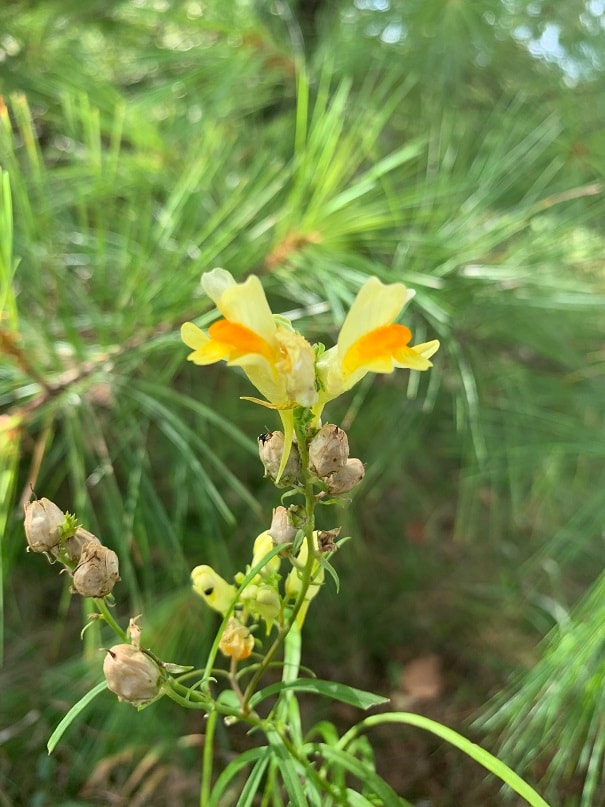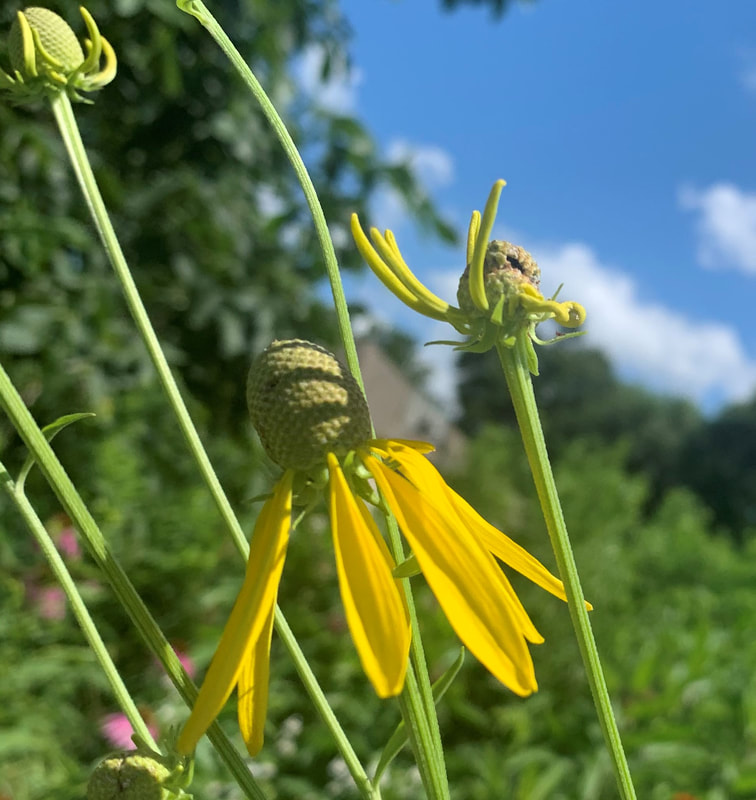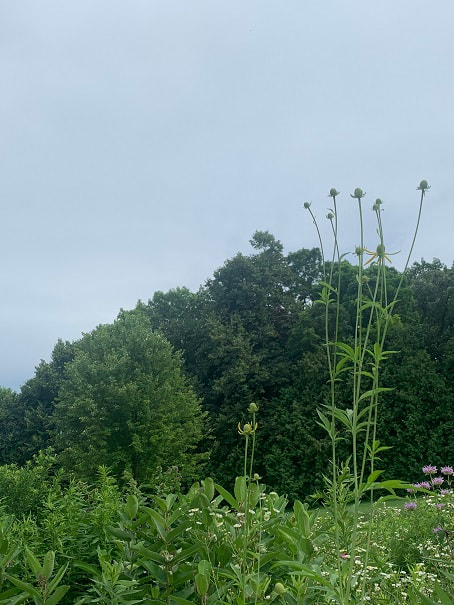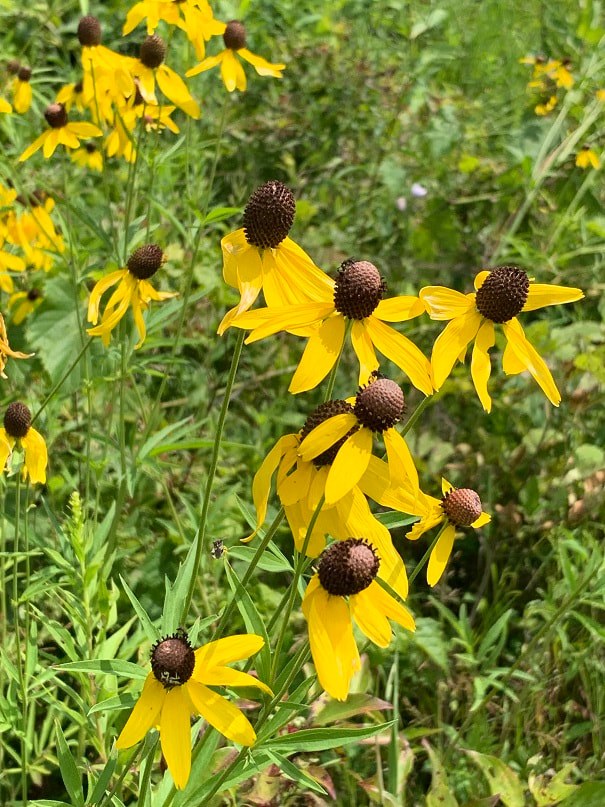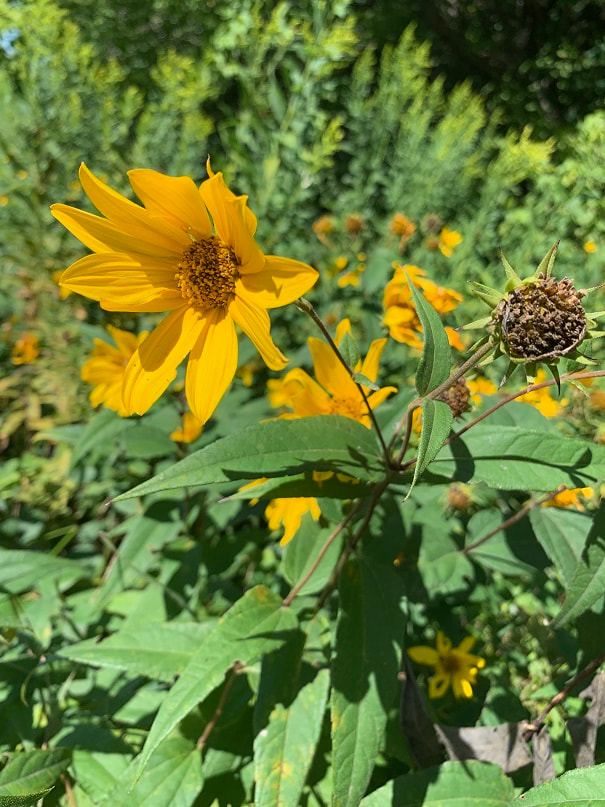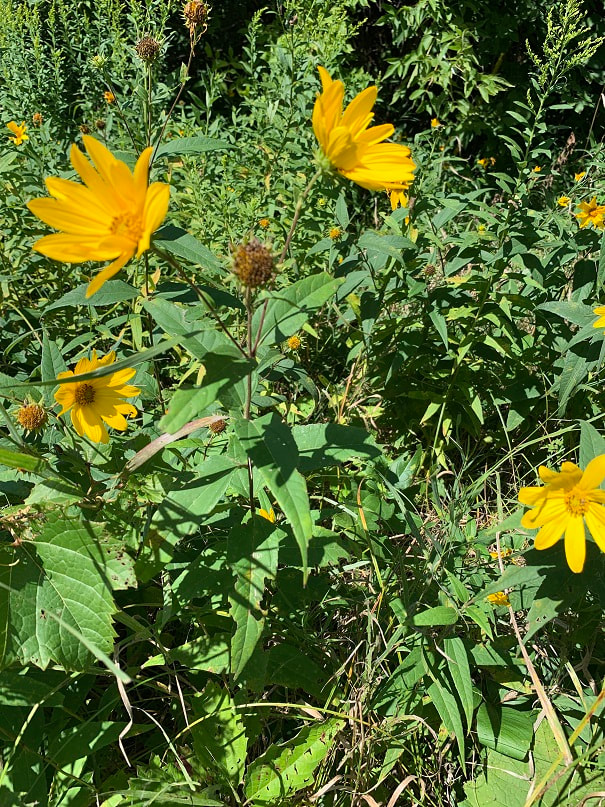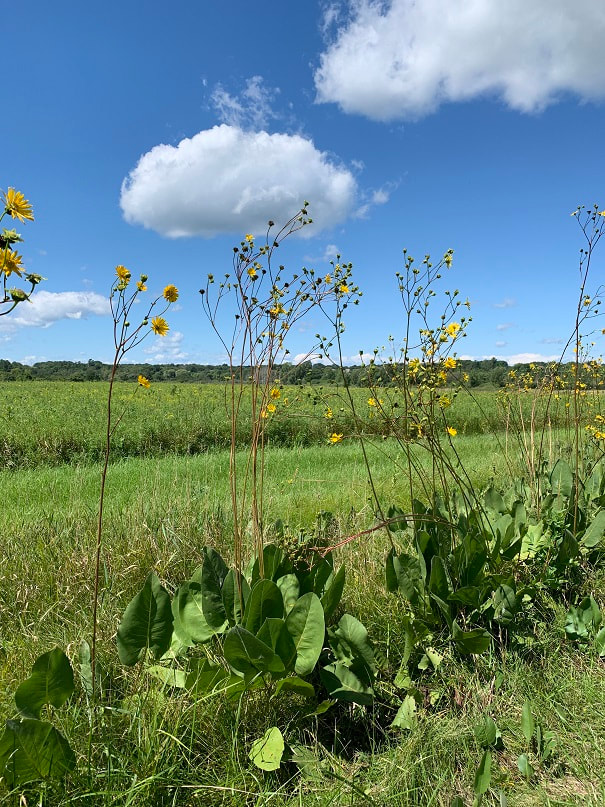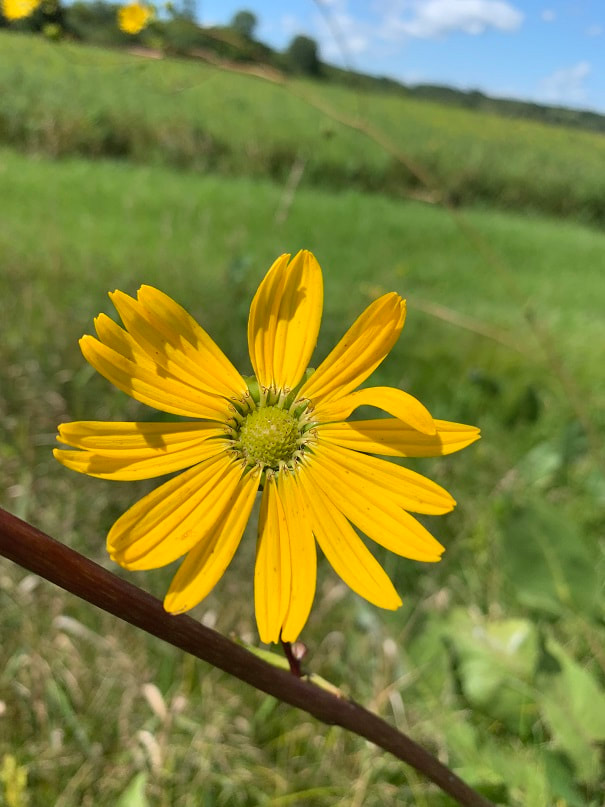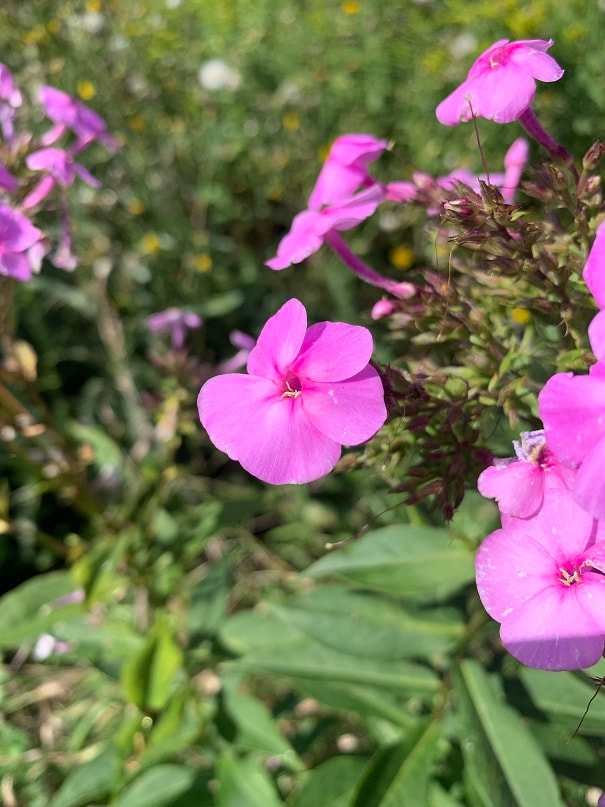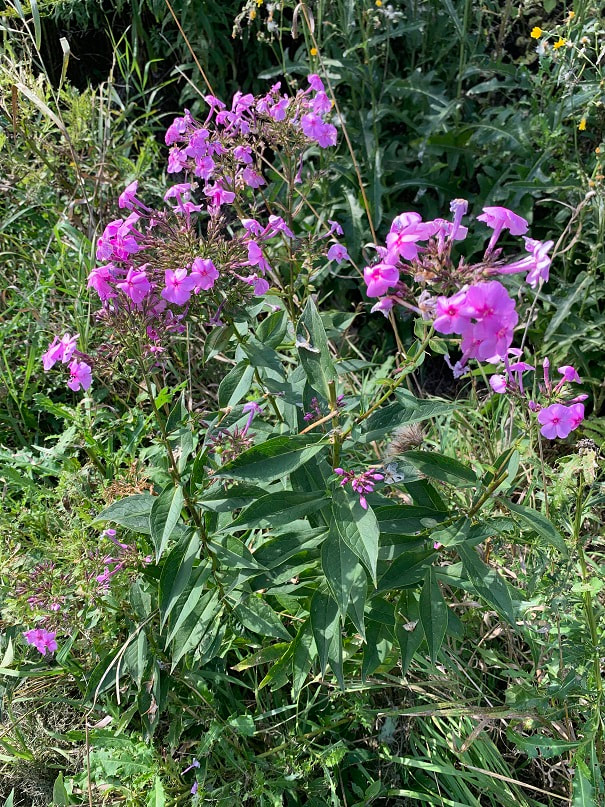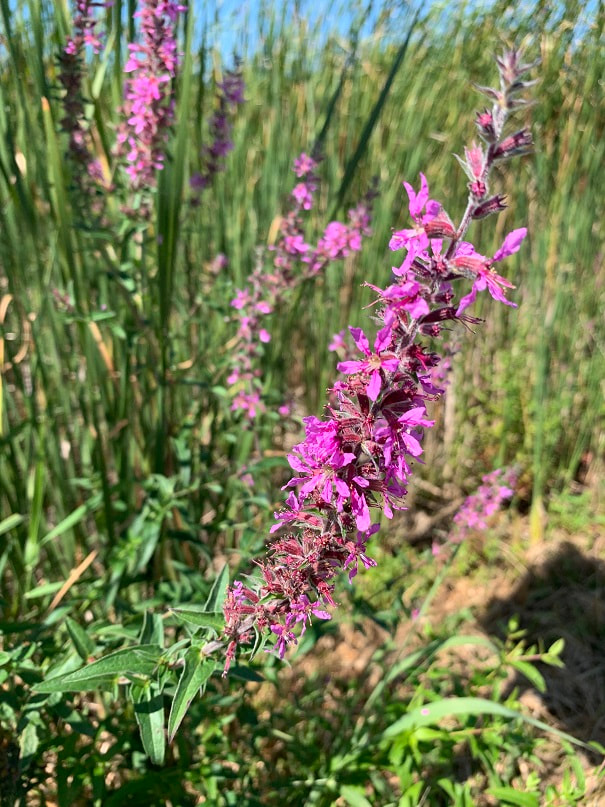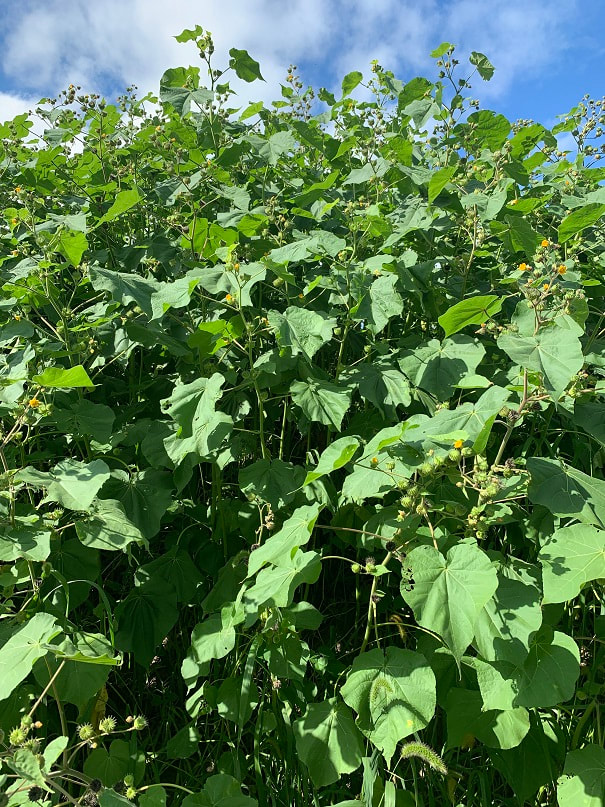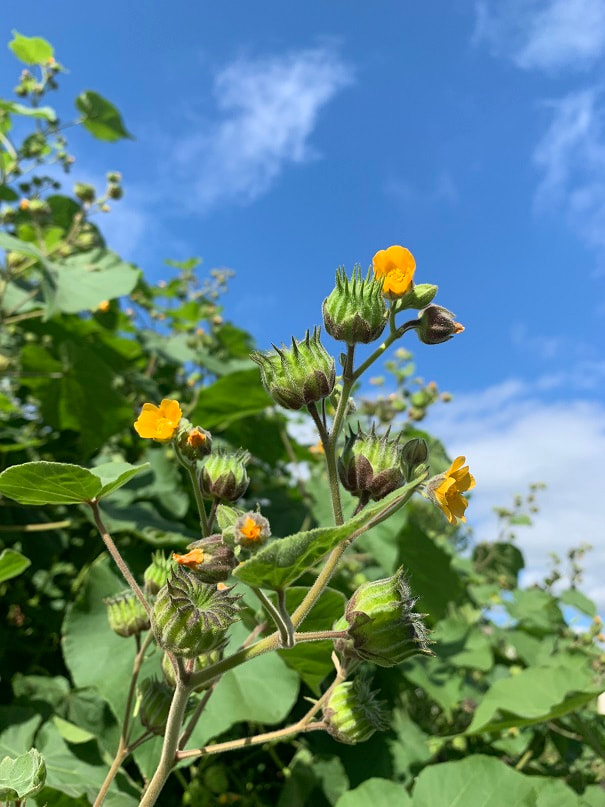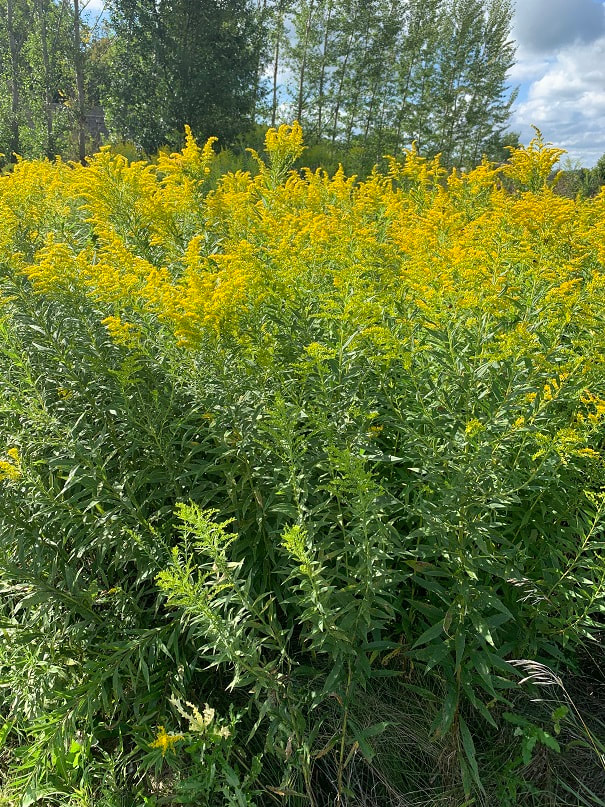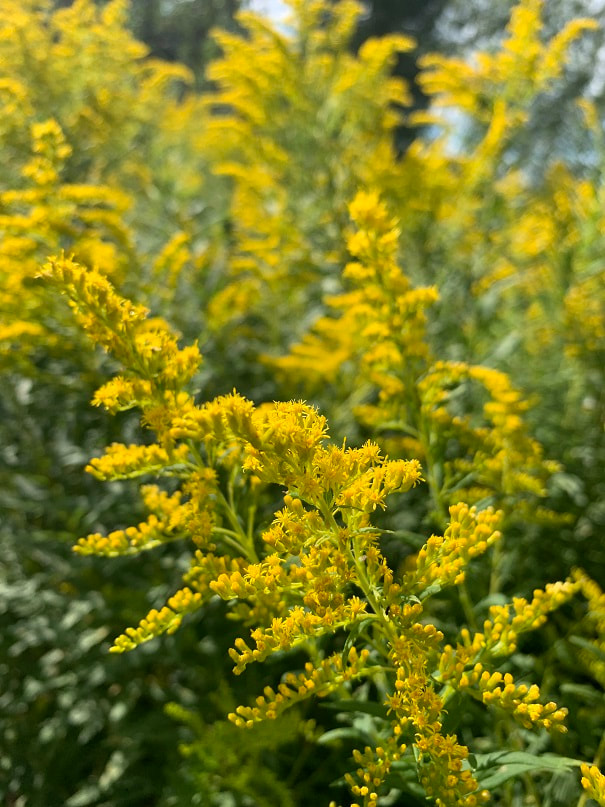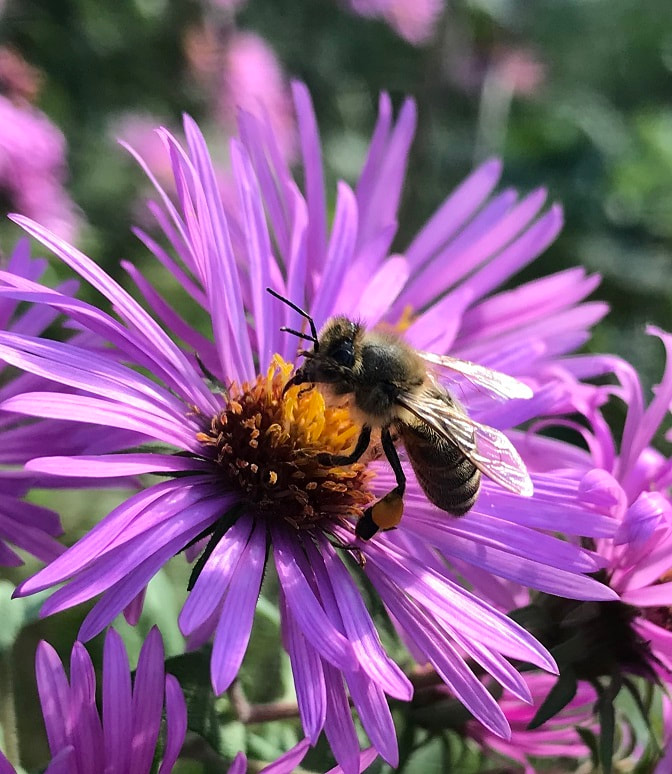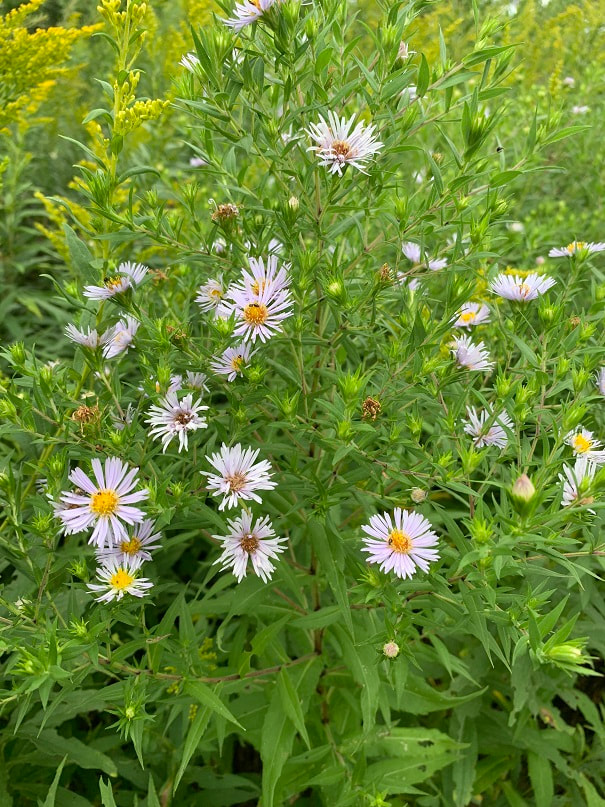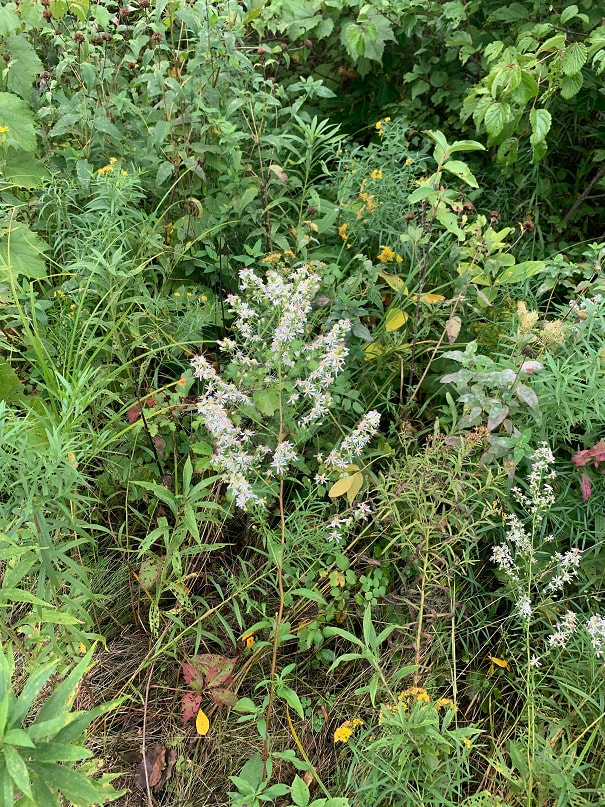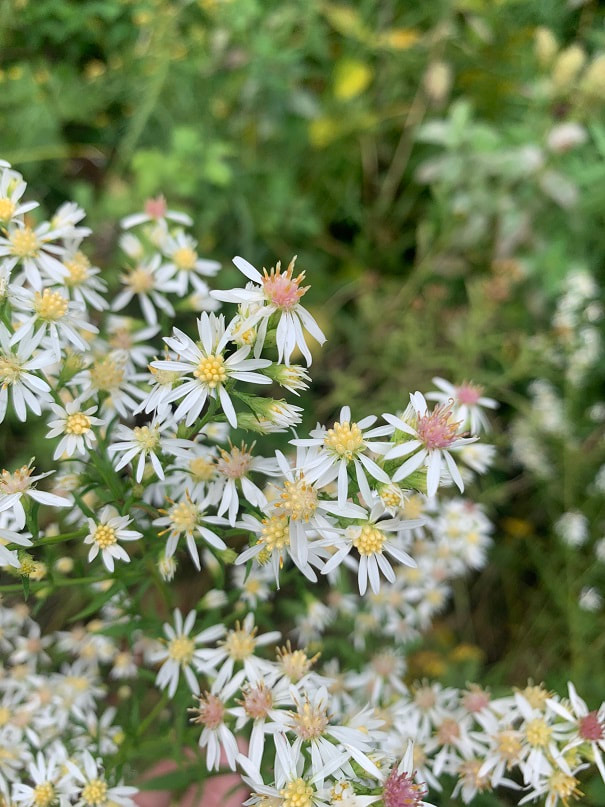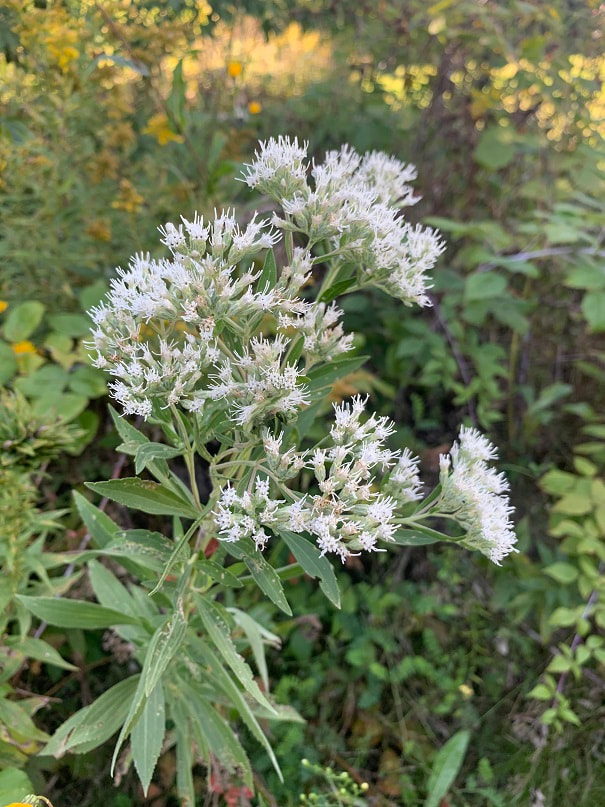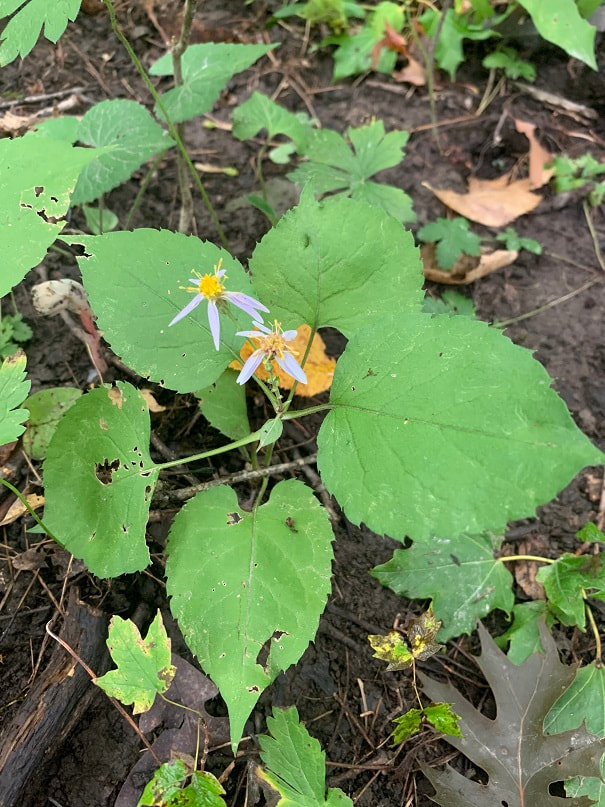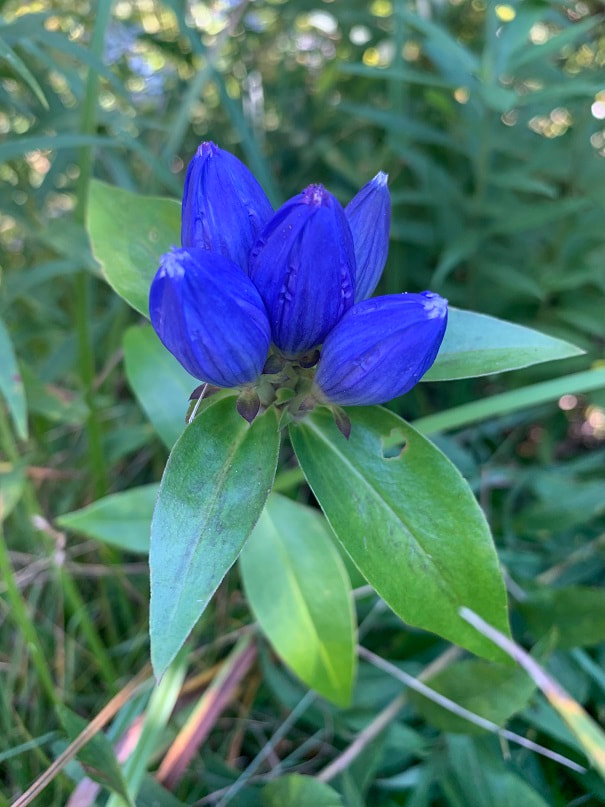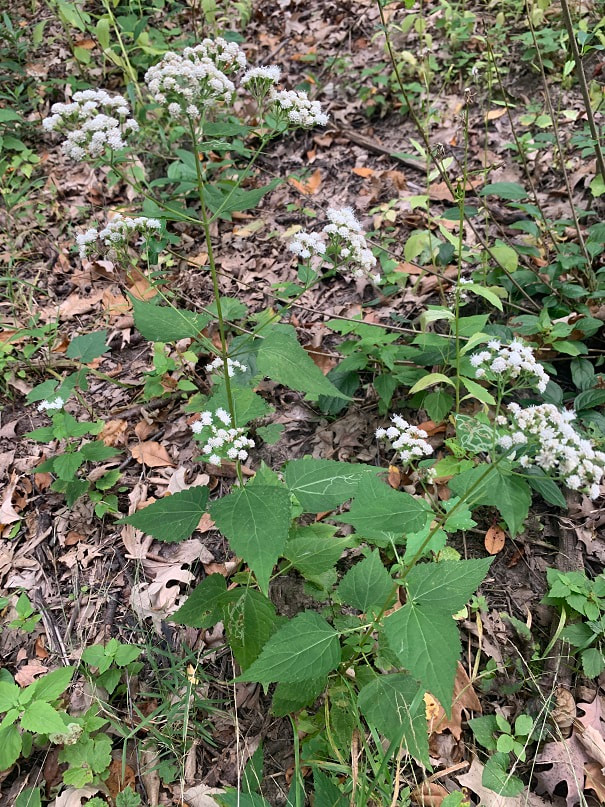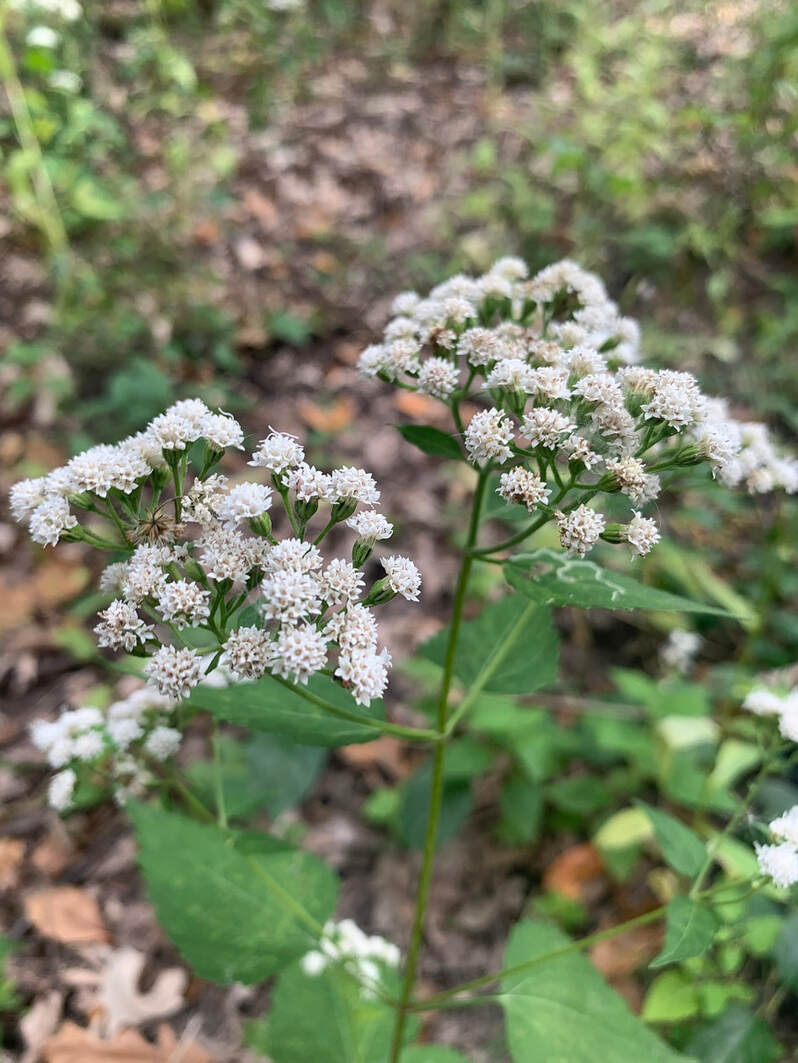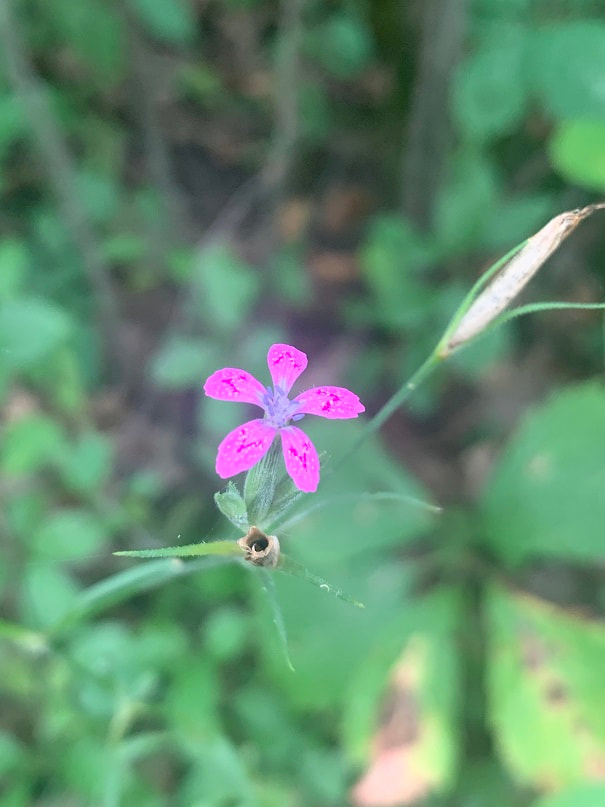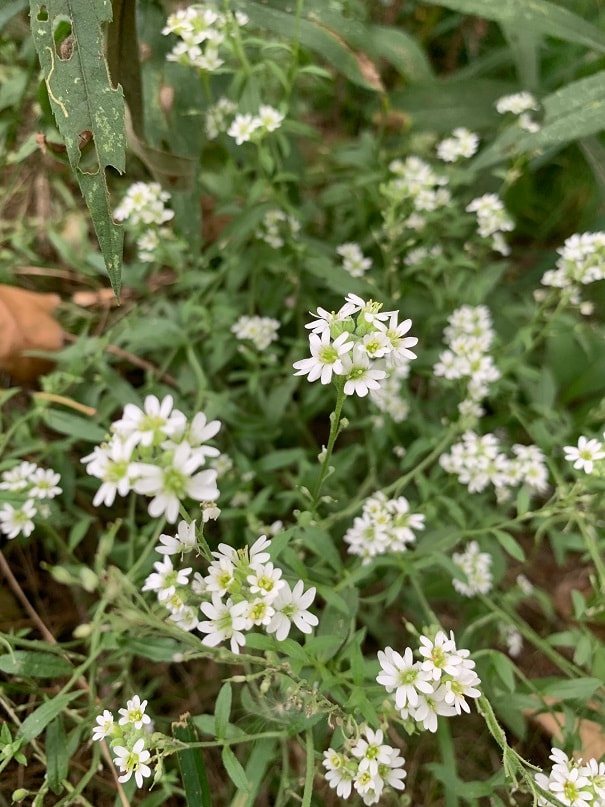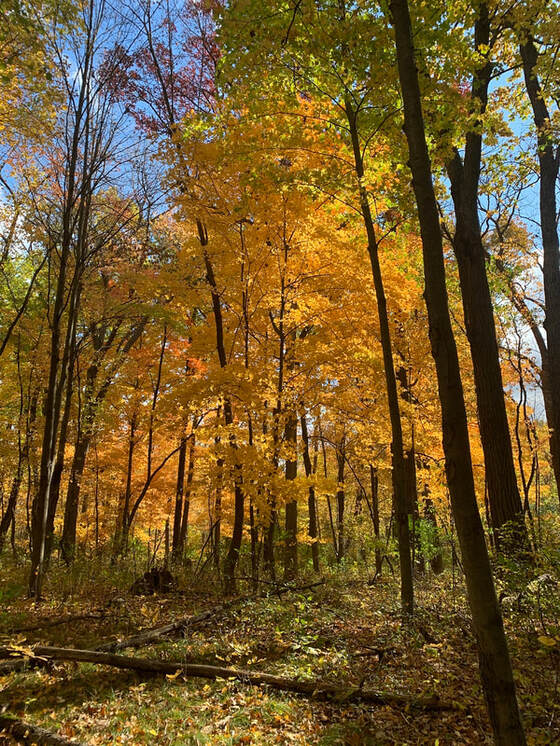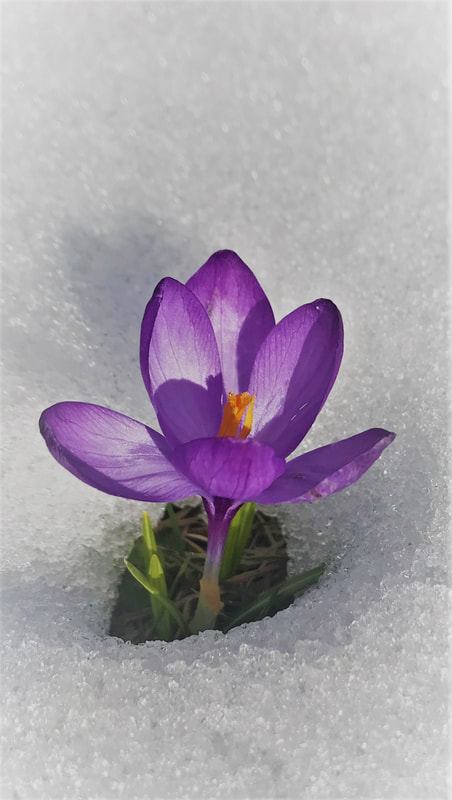I set out to learn the names of the wildflowers that grow here in Wisconsin. Here are photos and names of these hardy plants that bring color, beauty, food and nectar to our woodlands, prairies, and wetlands.
Here you will find photos of flowers that grew without anyone planting them; this includes native species, along with non-native plants that were brought here both intentionally and unintentionally, and established themselves, returning year after year on their own. I am posting pictures as I take them, in the month I take them. Check back, as I am continually adding new photos. Some plants bloom over the course of many months, so the flowers pictured may be found in months other than just the months noted below. These photos are of flowers in forests, prairies, roadsides and other untended areas; I am not including photos of flowers from tended or managed wildflower areas; I am only including flowers that I know grew without being planted or seeded by people. Please note that the photos were taken where I hike in southeast Wisconsin near the border between Waukesha and Washington Counties, there are wildflowers here that don't exist elsewhere in Wisconsin, and there are wildflowers in other parts of Wisconsin that don't grow here. If I have misidentified anything, please let me know at [email protected]
Photos added in 2023 so far: May: Creeping Charlie
April
April , Native Wisconsin Wildflower Photos
Wood Violets
The State Flower of Wisconsin, the Wood Violet is a native woodland wildflower in this area. Wood Violets can be variations of purple, blue and white, and they are very pretty and delicate. It is a small plant, around 6 inches tall. Near me, Wood Violets are some of the first flowers to emerge in April and early May.
Blood Root
This is a striking bright white little flower, even more so due to it being one of the very earliest to bloom here in Wisconsin. These hardy little plants are native to this area. They emerge in Mid to late April, wrapped in their one leaf, and then the flower blooms out of the wrapped leaf as the plant grows. It is a very pretty little flower, and a welcome sight after a long winter. They grow from rhizomes in the ground, and the rhizomes have poisonous red/orange sap, giving the plant its name. As the years go by, the rhizome spreads and the flowers grow in clusters up from the rhizomes. These do not bloom long; this year the petals fell from the flowers after blooming for about 1 week.
May
May , Native Wisconsin Wildflower Photos
Wood Anemone
These are delicate little early Spring wildflowers that bloom in shady forests before the big trees all leaf out. The first photo below was taken May 4th as the flowers were just starting to bloom, at that stage the Wood Anemone has a pretty drooping white circular flower, which then opens up over a couple days to look like the second photo. This is a local native wildflower, and is closely related to a similar European Wood Anemone. They spread and form nice Wood Anemone patches on the forest floor in May.
Bellwort
How exciting to find a new flower! It is May 3, 2021 and on a walk through the woods over lunch I found two of these growing about 40 feet into a hardwood forest from the woods' edge. This is a graceful downward drooping yellow flower that I would have named Faerie's Skirt. This is a native wildflower that blooms in early spring. It is about a foot and a half tall and has one or two downward hanging flowers per plant; it has leaves that grow up above where the flower hangs from.
Marsh Marigold
This bright yellow flower looks like a big Buttercup. It grows in wetlands, and the flowers in the photo were found in a marshy area on the Bark River full of cattails that were just beginning to emerge. These flowers were about 18inches tall.
Spring Beauty
I found his delicate white or pink flower in a hardwood forest near home, It bloomed after Bloodroot blooms were done. It bloomed after Wood Anemones started their blooming, but as I see these Spring Beauties, I still see Wood Anemones, Hepatica, Buttercups and Wood Violets in bloom in the forest. Trilliums are just starting to bloom. Spring Beauty is native this area, is about 6-8" tall and grows in large flower patches on the spring forest floor. There is one central stem, and from it extend many smaller stems at the end of which are the little flowers.
Hepatica
Hepatica is a native early spring blooming flower about 6 inches tall, with a hairy stem. It is a very pretty little white, blue or purple flower and another cheery early season flower that lets us know that warmer days are coming!
Trillium
A lovely spring woodland flower with three bright white petals. This is a native woodland wildflower here in Wisconsin. This is one of my favorite flowers. Along with other May flowers such as Mayapple and Jack In The Pulpit, it’s bloom is relatively short lived versus some flowers which I seem to be able to find blooming from late spring to fall.
Jack in the Pulpit
What a unique plant! It almost looks tropical to me, but it is certainly a hardy northern plant. There isn't a colorful flower, but the plant emerges and forms a very unique cylindrical "pulpit" over which grows a single-leaf canopy.....and from the pulpit emerges little preaching "Jack"! A cheery sign that spring is here.
Mayapple
Mayapples are native plants that grow in large colonies. We call them umbrella plants, because they look like umbrellas. These plants have an edible fruit and the Native Americans had medicinal uses for parts of this plant. They are 1.5 - 2ft tall.
Buttercup
A cheery little yellow native wildflower that grows on the forest floor in spring.
Wild Geranium
A woodland wildflower native to Wisconsin, the Wild Geranium can be found alone or often in large flower patches. They are around a 1-2 feet tall with a pink/purple flower.
Shooting Star
This delicate flower may be found with white or light purple petals. A circle of downward facing flowers, each on their own curved stem, radiate out from the very top of a single central tall stem. The leaves are all in a circle at the base of the stem. It is a unique and delicate flower. It is a native woodland wildflower in Wisconsin.
Wild Columbine
Where I live Wild Columbine is less abundant than many of the other wildflowers on this page. It is a striking and delicate flower, and is fun to find. It is a native Wisconsin woodland wildflower.
Wild Daisy
A small (under a foot) native wildflower. This one was in a nice little clump of daisies in the woods.
Golden Alexander
This is a native wildflower in Wisconsin and grows about 2 feet tall. The flower looks similar to the Wild Parsnip which is toxic to human skin, but the Wild Parsnip is bigger and blooms in mid summer, not May.
Wild Strawberry
Wild Strawberry is native to Wisconsin. This photo is from a small patch of Wild Strawberry plants growing in a hardwood forest. They produce an edible strawberry fruit.
Virginia Bluebell
Pretty blue , native woodland wildflower.
May Wisconsin - Non Native Wildflower Photos
Creeping Charlie
This hardy little guy had spread prolifically across our non-herbicidal, any that can live lives, lawn, and it yields nice purple flowers that are 2" tall and that survive the mower deck in early spring. Our dear friend Kostia quickly identified these, including their clear membership in the mint family. It is considered by many to be edible in salads, and is not a nativr plant. It was distributed around the world by European colonists. Photo taken May 7, 2023.
Garlic Mustard
Garlic Mustard is a very aggressive plant that edges out other native plants and it also is not eaten by local herbivores; it offers very little known benefit to the ecology of this area at the moment. As much as I like plants, I find it sad when plants such as this take over a complete area, edging out the beautiful diversity that existed before. It produces a cluster of tiny white flowers at the top of the plant, which is about 2ft tall. It smells like garlic when crushed. It grows in larger and larger colonies and spreads rapidly. Garlic Mustard is native to large portions of Europe and Asia, covering a wide range from North, South East to West. It is a biennial, and I think if one kept it from going to seed for two years in a row, you could keep it out of a small managed area, but good luck keeping it out of unmanaged wild areas.
Lily of the Valley
The lush foliage and dainty little white bell flowers make this a lovely spring flower. It is however not a native wildflower and I have come across them in large patches on the forest floor, so we are discouraged from planting this. The flowers have a sweet delicate smell. I was struggling to determine if this was a native or non-native plant; thanks to Gretchen for advising me that this is a non-native plant.
Periwinkle
This plant formed a dense ground cover and like Garlic Mustard, can take over a forest floor to the point that native plants are edged out. I noticed a small patch of these along the path through the woods. These were about 8" tall, and I would say that they are the "Lesser Periwinkle" variety. This plant blooms in May and June, and has many names; Periwinkle, Myrtle, Creeping Myrtle.... It is native to Europe.
Dame's Rocket
This is a pretty purple flower, and is a non-native, aggressive growing plant that is difficult to control. This plant is from Europe/Asia. They are along the roadsides here and in other places where the ground had been disturbed. They are not prevalent in the forest here. They are a tall flower, maybe 2 or 3 feet tall.
Garden Yellow Rocket
A native of Europe/Asia, this is an aggressive non native plant with clusters of bright yellow flowers. Like the Dame's Rocket, I found these on un-mowed roadsides and other meadow areas, but not in the woods. They are about 2 feet tall.
Dandelion
What a cheery addition to the Spring lawns of Wisconsin. The noble Dandelion. .....Make a wish.
There are some Dandelion-ish flowers that are native to North America, but the one we are all familiar with was brought from Europe. They are one of the most abundant early spring flowers, and are an important food source for bees and other pollinating insects. The name Dandelion comes from the French "Dents de Lion" which means Lion's Teeth. If you do not have a green thumb, then I encourage you to try growing Dandelions, you will have a beautiful garden of them every Spring. I like seeing Dandelions.
There are some Dandelion-ish flowers that are native to North America, but the one we are all familiar with was brought from Europe. They are one of the most abundant early spring flowers, and are an important food source for bees and other pollinating insects. The name Dandelion comes from the French "Dents de Lion" which means Lion's Teeth. If you do not have a green thumb, then I encourage you to try growing Dandelions, you will have a beautiful garden of them every Spring. I like seeing Dandelions.
Corn Speedwell
Pretty little blue flower that grows in my lawn. Non native plant.
June
June - Native Wisconsin Wildflower Photos
Virginia Waterleaf
I took a walk along the Bark River in the first week of June and found many of this unique flower, which does not grow in the drier hilly forest near my house. It has a spherical flower head about 2 inches in diameter, made of many delicate white/light purple flowers whose stamens extend out further than the flower petals. The spherical flower head is on a single narrow stem and the plant were under 2 feet tall. The petals fall at different times so some of the flowers were still full, but many had only partial petals remaining.
Hoary Puccoon
Wow, that's quite a name for a flower. This is an orange wildflower native to Wisconsin. The flowers seem to have 5 orange petals and are shaped somewhat like a trumpet horn. They bloom from May to August. I found this one in a meadow area.
Daisy Flee Bane
A native wildflower that looks like a daisy, with a yellow center and white petals, but the petals are more like needles and there are many petals; some call them rays. This plant is a couple feet tall or taller.
Wisconsin Dewberry
Native low growing plant that produces a white five petaled flower and a sweet berry. This one was growing in the forest.
Common Cinquefoil
I find this cheery little native wildflower growing in the woods. It kinda looks like a yellow-flowered strawberry plant. The flower is about 1/2" across and has 5 heart-shaped petals. It is a low sprawling plant with long stems.
Common Evening Primrose
This is a tall yellow native wildflower that grows in prairies or grassy areas. It is a biennial plant. They say that the flowers open quick enough to see them open, in the evening, so I'll have to check that out. This one is in my backyard.
Cow Parsnip
This is a big native white wildflower that blooms in starting in late June. I see them in some areas on the side of the road and have also found them in open woods. They get 6 or 7 feet tall, not to be confused with the nasty Giant Hogweed, which looks similar but is 14 feet tall. I've never seen a Giant Hogweed around here.
Ohio Spiderwort
I had never seen this pretty native wildflower before, so I was very happy to find it blooming in a ditch, while on a hike near my home. It is a complicated flower, with long arching pointy leaves that extend almost vertically from the central stalk and then droop outwards. At the top of the main stem is a mophead of many flowerbuds on short droopy stems. The flower is about 1.5" and has three pretty purple/blue petals. Many of the buds had bloomed and many buds were present , that had yet to bloom. There are couple native species of Spiderwort, this one has smooth flower buds.
Wild Rose
Native Rose
June - Non-native Wisconsin Wildflower Photos
Henbit
This is a short little purple flower from Europe, Central Asia, and North Africa that has grown wild across the eastern USA. It grows in lawn and on lawn edges and probably elsewhere also. It is 3-8" tall (I've seen them taller also) and can still flower even in a mowed lawn. It is important and useful as a source of food for bees and other pollinators.
White Clover
An important food source for bees and other pollinators, and also a favorite of bunnies. This plant is a non-native plant from Europe. It is very good for the soil, in that it has the rare ability to fix nitrogen in its root nodules, just like making natural nitrogen fertilizer. It is a fine lush green to have in your lawn and beloved by bees, bunnies, and kids looking for four-leaf clover.
Red Clover
Red Clover is another non-native wildflower that has become important to pollinating insects here in Wisconsin, such as Bumblebees. Red Clover is a bit bigger than white clover and usually has pink flowers. Like White Clover, it has the ability to fix nitrogen in it's roots, making is a healthy plant to have around, in that it naturally fertilizes the ground.
Common Vetch
This annual herb is a fodder crop plant that originated in the lands around the Mediterranean Sea. It has been cultivated since ancient times. For being "common" I sure have not found much of it around here. Where I walk, I have found one small clump. The purple flowers are unique in shape and have 4 petals each. It is a gangly, viney, matting plant, with long leaves that have many leaves that grow on opposite sides of the leaf stalk.
Celandine
This plant from Europe and Asia, has become a challenge to control here in Wisconsin due its aggressive growth ability here. It is a restricted plant here in Wisconsin and is supposed to be removed if found. The flowers are pretty and look somewhat like a buttercup, but this plant is around 2 - 2.5' tall. This plant would more accurately be called Greater Celandine. The yellow flowers have are fairly small and have 4 petals. It's a toxic plant also.
“Thank you!” To Lin W. who advised me to correct the identification and spelling of this plant from “Celadine” (incorrect) to “Celandine”(correct).
“Thank you!” To Lin W. who advised me to correct the identification and spelling of this plant from “Celadine” (incorrect) to “Celandine”(correct).
Crown Vetch
The flower of the Crown Vetch looks a bit like clover from a distance, but upon inspection one sees a 1" cluster of many individual little white pink flowers. The there are many little oval leaves running in rows on either side of the leaf stem. These flowers grow in dense colonies and are listed as invasive and to be eradicated. They are aggressive and will take over native plants. I have found these in open full sun areas, and have not seen them in the woods near me. They are native to Eurasia and North Africa and were planted as erosion control ground cover in the USA. I find the flower quite pretty.
Field Bindweed
This is an aggressive, fast spreading, easy to identify flower, as the flower is decent size and very unique in my opinion. The bright white flower is three quarters, to one and a half inches in diameter and looks like a 5 sided funnel. There aren't separate petals, it is like a white saucer/funnel with 5 flat sides. This is a sprawling viney ground cover plant that wraps around other plants. It is native to Eurasia. Apparently, each flower only blooms for one day. I found this one in a hoard of many of its own, in an open field locked in an epic battle with other non-native aggressive plants including crown vetch, dandelions and clovers.
Musk Thistle
Native to Europe and Asia. This is a big boy, must be 6 feet tall. Here is the progression of the flower:
White Campion
Non native plant from Europe, Asia and North Africa. This one was about 2 feet tall.
Bird's Foot Trefoil
Non-native yellow flower from Europe, Asia, North Africa. These are pretty little flowers that grow in the lawn like clover. In tall grass I've seen them grow almost 2 feet, but they are usually under a foot tall.
Meadow Hawkweed
Another non-native wildflower from Europe. The leaves grow tight against the ground and the yellow flowers bloom in a cluster on top of a single long stem. 1-2 feet tall.
Ox Eye Daisy
Non native Daisy from Europe. Very common to see large fields of these on roadsides in late June and July. They are a couple feet tall.
Yellow Sweet Clover
Non Native European / Asian flower. Brought to the USA as a forage plant. These can grow into a pretty big bush-like shape. I'd say 3 or 4 feet tall. They are another common roadside flower
Spotted Dead Nettle
Non native spreading ground cover plant from Europe and western Asia. I found this in a shady part of the forest. The leaves have a white/light patch down the middle.
Teasel
This is a tall roadside thistle-like weed with white flowers that grows in Wisconsin in the Summer. It has a base of leaves that look like big dandelion leaves, and multiple long stems with thistle-like white flowers on top. The plant is about 6 feet tall. The flowers have a star of thin sharp-tipped green upward arching leaves under them that catch water. A variant of this teasel that has hook-ended thistle heads is called "Fullers Teasel", as the dried flower-head was used since ancient times to fuller woven wool in order to raise a nap on it. Wild teasel near me is the common variety and not the kind used by fullers. Teasel is native to North Africa and Europe, and is a weed now in Wisconsin.
July
July - Native Wildflowers
Milkweed
This is a native Wisconsin wildflower that is vital to the reproductive cycle of Monarch butterflies. The large flower is said to be one of the more complicated flower structures in the plant world.
Yarrow
Native summer wildflower that is quite common.
Wild Bergamot
Very unique and pretty purple wildflower whose petals look like little rockets flying out of the flower. The flower looks like a light purple firework explosion. 2-4 ft tall. Native wildflower.
Spotted Touch Me Not
I found a large clump of these plants, with unique orange flowers, growing in the forest. It is a native plant and it is not dangerous to touch. This orange wildflower suspends from the stem and is shaped like a funnel with a curved end.
Pointed Leaf Tick Trefoil
Delicate small purple pink flowers on a long stem. This is a native plant that I found growing in the forest. If you find one with less pointy leaves and with flowers that grow on little stems that extend a bit further from the main flower stem, then you may have found the very rare Naked Stem Tick Trefoil
Indian Pipe
This is special plant. It is not a mushroom, it is a plant without chlorophyll. It is a native plant that also goes by the name Ghost Plant. It is an all white plant that grows from the forest floor in clusters, and each stalk bends over to form what looks like a pipe stuck into the ground.
Purple Milkweed
This is an endangered native wildflower in Wisconsin. It has a brighter flower than Common Milkweed, and the flower is more visible at the end of the stalks vs a Common Milkweed whose flowers seem to be below the leaves in many cases. The leaves also seem more narrow and pointy than a Common Milkweed's leaves.
Black Eyed Susan
Native wildflower to Wisconsin. Yellow flower with dark brown/black center. This one was growing in a small opening in the forest, but I'd think this would be found in open prairies as well.
Pickerelweed
Native to Wisconsin water plant with a long purple flower. Large leaves that extend up out of the water (rather than laying flat on the water like a lilly pad)
American White Water Lilly
Beautiful large white flower with a yellow center, that grows on the surface of the water. This is the large white lilly pad flower and it is native to Wisconsin.
July - Non Native Wildflowers
Chicory
This plant is from the Mediterranean region but has spread widely, including across North America. Used over history as a coffee substitute, especially in rough times (Chicory tap root pulled from the earth, cleaned, chopped and sliced thing, roasted in heat till dry and browned, then ground or mashed into a dry substance that can be soaked or filtered in hot water to make a coffee/tea.. It's cheery blue flowers are common site along roadsides here in Wisconsin. We used to call it Cornflower, and I think that is still a common nickname for this plant.
Soapwort
The leaves of this plant are still used to create soap for cleaning fine tapestries. What a fine legacy for a plant named Soapwort.....Saponaria Officinales. I struggled to identify the different colors and must credit my friend Kostia who promptly identified these as Soapwort, which also grows in his birthplace in Russia. Boiling the leaves and roots in water, in a way known by them that do these things, yields a fine soap. This is a non-native plant here in Wisconsin that is native in a range from Siberia to Western Europe.
Orange Day Lily
This is a large pretty flower from Asia, that has now naturalized itself in Wisconsin. Like many summer flowers, this is often and easily spotted on the roadside. Each flower blooms for one day.
Queen Anne's Lace
A European plant also known as Wild Carrot. Large white lace-like flower with a dark red tiny center. Folk tales have it that the dark red tiny center is from a drop of blood from when Queen Anne pricked her finger when making the lace. This plant is a couple feet tall, but can grow taller when competing with nearby tall plants. It can really take over an area, as it has many seeds which seem to be quite succesful in germinating. I did not want too much Queen Anne's Lace in my wildflower garden so I pulled it out. IT is a biennial so if you pull it out for two years, before any seeds fall, you should have it beat. It's a common and pretty flower.
Canadian Thistle
This is one impressive plant. It is from Europe/Asia, so I don't know why it's called Canadian. It has proven to be my ultimate challenge to manually remove this thistle from my wildflower garden. It has deep tap roots, and even a small section of root left in the ground can sprout a new plant. A patch of these plants produces thousands of little floating thistle seeds to reproduce the following year. Very prickly to grab. After a rainfall when the ground is wet, they can be pulled straight out of the ground; if you want to eradicate them without chemicals, which is what I am doing, good luck! It can grow over 5 feet tall when competing with tall plants such as Golden Rod.
Sow Thistle
This non native plant resembles a tall dandelion. From Europe/Asia. It can get quite tall, around 5 feet.
Burdock
Non native plant, from Europe and Asia, this is the plant that has the round seeds that seem to have velcro on them, that we calls burs. This is a large broad, tall plant with huge leaves. 4-5 ft tall.
St. John's Wort
Introduced to North America from Europe. These were a couple feet tall, with many pretty yellow blooms. I have found these only in full sunny areas, not in the shady forest.
English Plantain
This is an unremarkable flower in my opinion, though still an evolutionary masterpiece in that it has travelled the world and survives. Thankfully, this is a non-native plant that is not extremely invasive or fast spreading. It features a ring of slender leaves at the base and has a number of 10-20" stems with small cylindrical flower buds at the top that have small white flowers in rings extending from the flower bud. Found in lawns, roadsides, disturbed areas. Rabbits and deer eat the leaves of this plant. This plant is not native to this area and is originally from Eurasia.
Common Mullein
This is a easy to spot and easy to identify, unique flowering plant. It is native to Europe. The Common Mullein has a large leaves at the base and the leaves taper away about half way up a tall spike that grows straight up about 5 feet. About the top third of the spike is covered in little yellow flowers which don't all bloom at once.
Wild Oregano
In the same fallow field above as the Common Mullein above, which had been planted with corn previously, was an abundance of St.John's Wort, and Oregano growing wild. Oregano is from the Mediterranean regions of Europe and was introduced in North America. It is drought tolerant and spreads easily, though I don't see it often. The bees love it. This field is about a mile from my house.
Bittersweet Nightshade
This is a creeping vine with clusters of small purple flowers that yield red berries. Bittersweet Nightshade grows wild across much of North America, but it is not from here. The berries are food for birds, but are poisonous to humans. This plant is native to North Africa, Asia and Europe.
Spotted Knapweed
Non-native aggressive wildflower from Eurasia. It looks somewhat like a Canadian Thistle, but without the prickly stem and flowers.
Creeping Bellflower
This is a non-native plant, that I thought was very pretty when I saw it growing in the forest. Apparently it is aggressive and will form large flower patches, edging out other plants. The ones I found were fairly solitary, but maybe they just arrived.... This purple forest wildflower produces a tall flower stem with a number of pretty purple flowers that hang from the stem and that look like bells.
Common Motherwort
This plant is native to Asia, and is very unique. It looks somewhat like a Chinese pagoda with many levels and a spire at the top. It is about 2-3ft tall and can often be found at the woods edge.
Butter and Eggs (Toadflax)
Native to Europe. This medium size flower blooms for a long time; the first picture below is from July and the second is from September. About 20 inches tall with slender leaves growing from the central stem.
August
August - Native Wildflowers
Gray Headed Coneflower
This is a tall yellow native wildflower. I started seeing it at the end of July this year, and took this photo during the first week of August. It is a tall (can be over 5ft tall) wildflower with yellow petals that grow downwards from the brown conical center. The heads are green initially and then darken with age. The petals are very narrow as the emerge, then broaden.
Woodland Sunflower
These are 2 to 5 feet tall around here and bloom in July - September. There are a number of similar wild sunflowers, and my best determination is that this is Woodland Sunflower. This is a pretty native yellow flower that grows in large clusters.
Prairie Dock
I have only ever found this one cluster of these. The yellow flowers are on top of a very long stem, with a ring of large leathery leaves at the base of the plant. Most of them were taller than me , about 5-6 feet tall. This plant is native to a fairly small area: Illinois, Indiana, parts of Missouri, and Southern Wisconsin. It has a very deep tap root. I couldn’t identify this plant and am very thankful to Noreen, who helped out and correctly identified it as Prairie Dock, thanks!
Garden Phlox
5 petals, light purple, pinkish dome of flowers on a plant that's about 3 feet tall. They can grow to 5 or 6 feet tall. Native plant not to be confused with 4 petal Dames Rocket. Similar to Prairie Phlox, which has narrower leaves, amongst other differences.
August - Non Native Wildflowers
Purple Loosestrife
This is a pretty purple non-native wildflower whose flowers grow in a long purple spike. Not to be confused with Lead Plant. This plant is from Europe/Asia and can apparently become quite invasive/overgrown. Where I live there are not many, though I found these on the edge of a marsh.
Velvetleaf
This is an invasive plant from Asia that is potentially very harmful to corn and soybean crops. It grows in dense clusters, especially in disturbed soil. The photo's below are of Velvetleaf completely covering mounded up piles of topsoil here in Southeast Wisconsin. The plants are 5-7 feet tall, have large leafs, thick stems, relatively small yellow flowers, and seed pods that look like crowns.
September
September - Native Wildflowers
September is the time for Goldenrod, Black Eyed Susans, Asters, and Wild Sunflowers.
Tall Goldenrod
This is a pretty, deep golden flower grows in large clusters. I like it, as it is the early welcoming party announcing that Fall is coming. Tall Goldenrod blooms in early Autumn. The plants in the photos are six feet tall. This is a native wildflower and it is wonderful to watch all the Bees and Bumblebees feeding on the large clusters of flowers.
New England Aster
Beautiful purple early autumn flower. It blooms at the same time at Goldenrod and attracts butterflies like crazy! I have seen these 2 feet tall at the edge of meadows, but in the middle where they compete with other tall plants these are 6-7 feet tall!
Panicled Aster
This is a common white Aster, 2-5 feet tall. Blooms in late summer to fall. Native wildflower.
Arrowleaf Aster
Asters bring a last burst of white, pink, and purplle color to the end of summer and the beginning of Autumn. There are many varieties of Asters and it can be tough to identify the exact type of aster it is.
Tall Boneset
This native wildflower is 4-6 feet tall and features a large cluster of small white flowers at the top of long stalk stems. Common Boneset looks similar but the leaves are different. I haven't seen a Common Boneset yet.
Large Leafed Aster
This is a common woodland flower that can grow in large colonies on the forest floor. This isn't a great photo so I will try to get a better photo next year.
Bottle Gentian
This striking blue native wildflower with unique blooms, is about 1 to 2 feet tall, and it very unique. I have only found these in one place, in very wet ground near a small pond near here. The deep blue flower petals form a hollow flower and they never open, so the flower is like a pointy hollow balloon. The only pollinator strong enough to pry open the petals, is a bumble bee, so these flowers are pollinated by the strong bumble bees!
White Snakeroot
This poisonous plant blooms in late Summer and early Autumn. It is 3-4 feet tall and features stems with semi-spherical clusters of little 3/8" cylindrical tufts of tiny individual white flowers. Serrated leaves. European settlers cows would eat White Snakeroot, which would poison the milk and meat, which killed many early European pioneer settlers, including possibly Abraham Lincoln's mother Nancy. The sickness resulting from accidently consuming milk or meat from an animal that ate White Snakeweed, was called Milk Sickness. It apparently took a long time to figure out that White Snakeweed was the root cause. I found these growing in the woods here in late September.
September - Non Native Wildflowers
Deptford Pink
This small (maybe 3/8" across) flower is a striking pink. I read that these grow all summer into September, but I only noticed it September. I found it growing off a path in the woods. There are fewer woodland flowers blooming in September, so this little guy stood out. This plant is from Europe.
Hoary Alyssum
I have read that this plant blooms from summer to fall, but I only noticed it’s blooms after the other plants has all stopped blooming. It’s a short little plant with hearty flowers that bloom late into fall.
October
In this area of Wisconsin, October is when the shrubs and trees' leaves turn beautiful autumn shades of red, yellow, and orange. Some hardy flowers of September hang on into early October, these include remnants of sunflowers, asters, goldenrod, chicory, Rudebeckias, Knapweeds, Queen Anne's Lace, and others. As the leaves fall winter sets in and the flowers take a long winters nap in their seeds, roots, and rhizomes.
I started this project in May of 2019, and Old Man Winter took up residence in October that year, with all his freezing cold and snow. We had a rapid transition to Winter and a very short Autumn as far as weather is concerned. I was cross country skiing through the woods during the first week of November and ice covered the ponds. As we headed into the deep winter, strong stemmed flowers such as golden rod were still standing standing tall and brown with tufts of their seeds on their heads, but the colorful flowers were gone; replaced by our striking white and grey Winters with their red flashes from Cardinals and Woodpeckers. The next flowers we see outside, will be the hearty, brave and yet so delicate, Crocus, which can bloom through the snow in early spring. These are not native and are also not wild flowers as far as I have been able to see, at least not here where I live. I have only seen them where people have planted crocus bulbs. This is true for my yard also, and I will break my own rule of only including pictures of wild-grown flowers, and include one picture of this crocus, which is maybe my favorite flower, and which I planted, in my yard. The photo below is from April 20, 2018. Enjoy the Winter!
